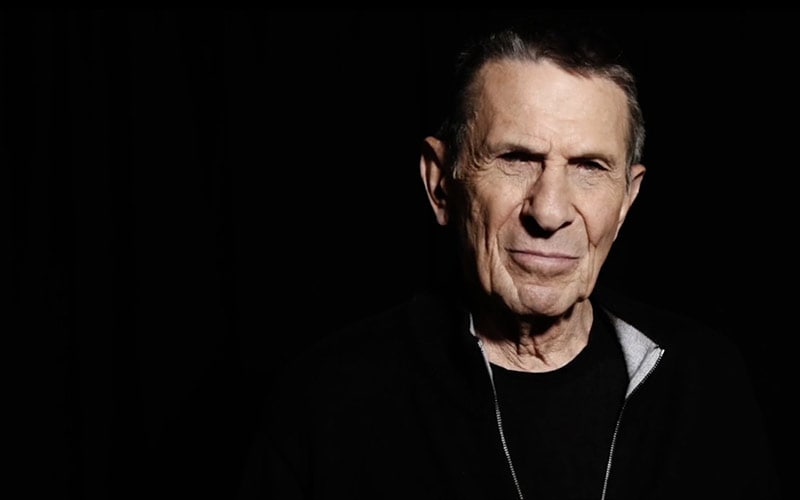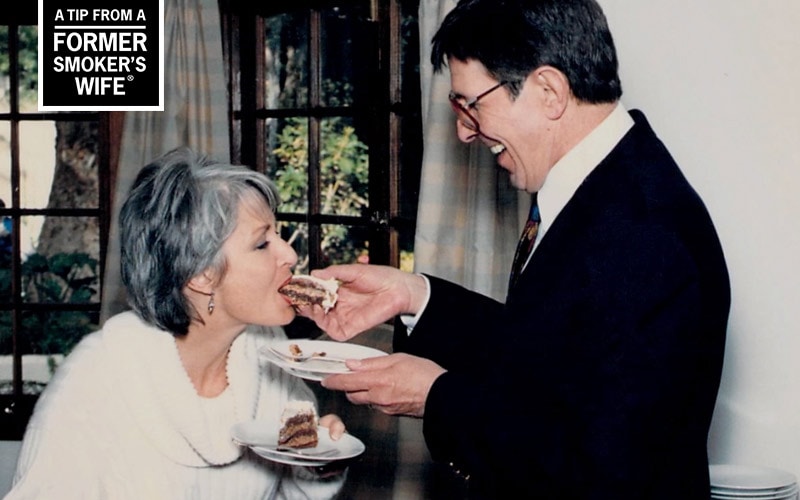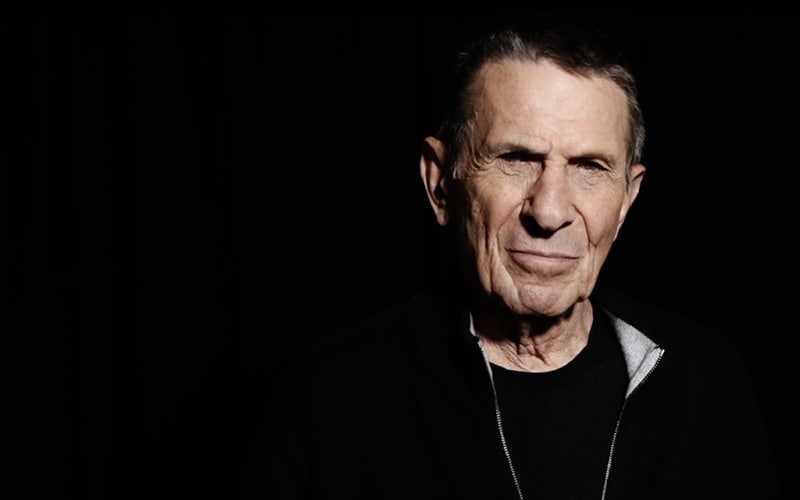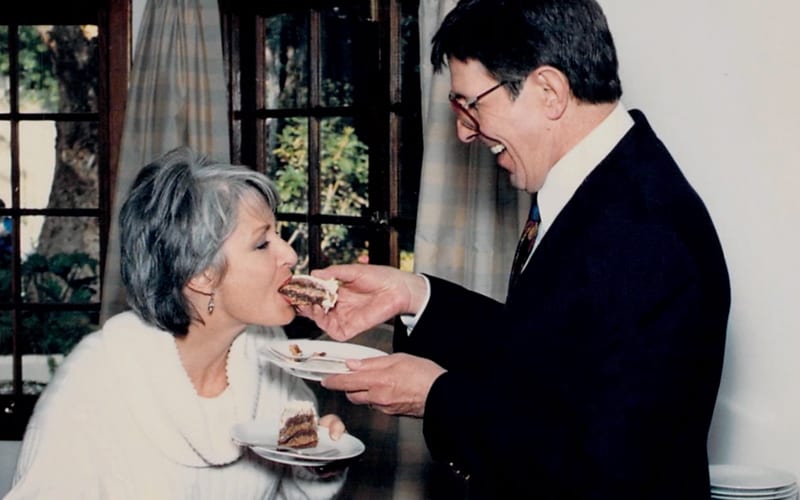Videos
Amanda B. | Andy A. | Angie P. | Anne G. | Beatrice R. | Becky H. | Bill B. | Brandon C. | Brett P. | Brian I. | Brian H. | Christine B. | Dana S. | Debra B. |Denise H. | Elizabeth B. | Ellie N. | Ethan B. | Felicita R. | Fred W. | Geri M. | Jamason C. | James F. | Jessica S. | John B. | Julia C. | Kristy G. | Mariano Z. | Marie W. | Mark A. | Marlene K. | Michael F. | Michael P. | Nathan M. | Noel S. | Rebecca C. | Rebecca M. | Roosevelt S. | Rose H. | Shane T. | Sharon A. | Shawn W. | Stephen B. | Suzy E. | Tammy W. | Terrie H. | Tiffany R. | Tonya M. | Wilma S.
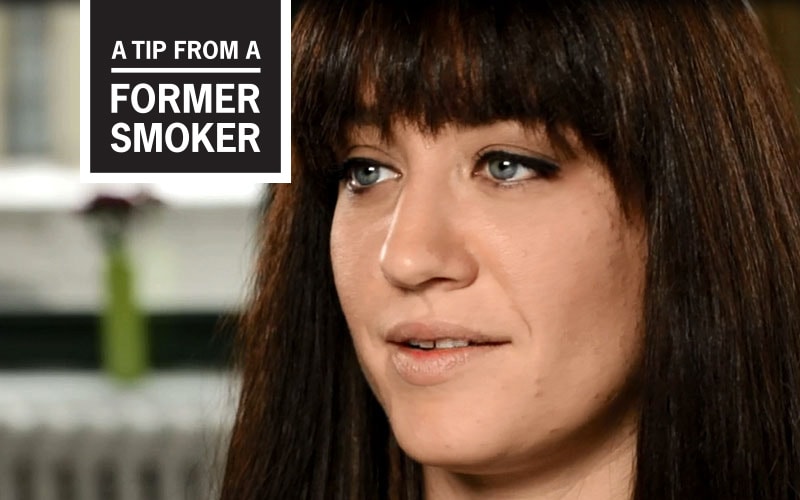
Amanda grew up around family members who smoked. She picked up her first cigarette in the 5th grade. In college, when she learned she was pregnant, she tried to quit but couldn’t beat the addiction. In this video, Amanda talks about being rushed to the hospital, where her baby was born 2 months early, at just 3 pounds.
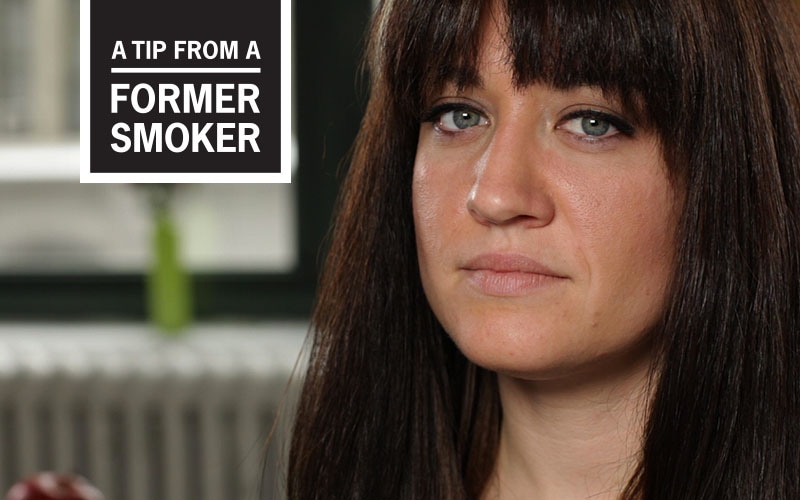
Amanda tried her first cigarette when she was in elementary school. In her 11-year-old mind, smoking seemed OK. After all, some family members smoked, so she tried it herself—and soon became a regular smoker, too. In this emotional video, Amanda talks about the pain that smoking brought to her family.

Andy A. was diagnosed with throat cancer from smoking. This began his complex treatment and recovery journey, including three surgeries to remove the cancer, using muscle and skin from his legs to rebuild his throat. Andy now speaks with the help of an electrolarynx. He also needs full-time care from his wife, Debra B. In this ad, he shares that cigarettes took so much from him, including his independence. Andy’s tip is don’t give anymore to cigarettes – otherwise they will keep taking until there is nothing left of you.
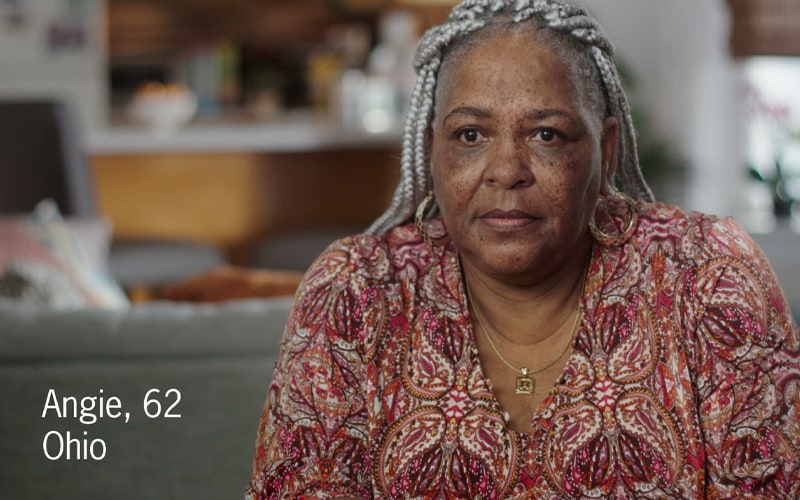
Angie P. started smoking menthol cigarettes at age 15. Over time, she became aware of the tobacco industry’s aggressive advertising of cigarettes, including menthol cigarettes. Angie feels that tobacco companies took advantage of her as someone who is gay and African American. She tells people it’s not worth it to smoke.
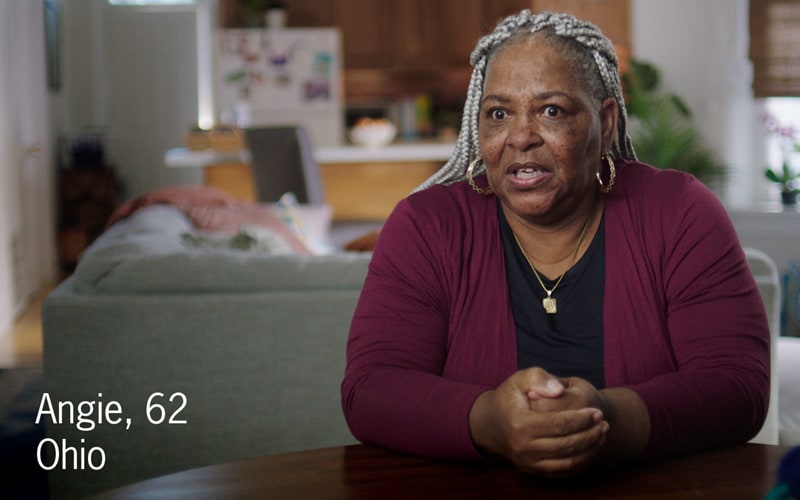
Angie P. hid behind menthol cigarettes while she struggled with her identity. She feared her family and community would not accept her for being gay. In this vignette, Angie talks about that fear and other feelings she tried to mask with cigarettes. She says quitting smoking helped her rediscover and love herself.
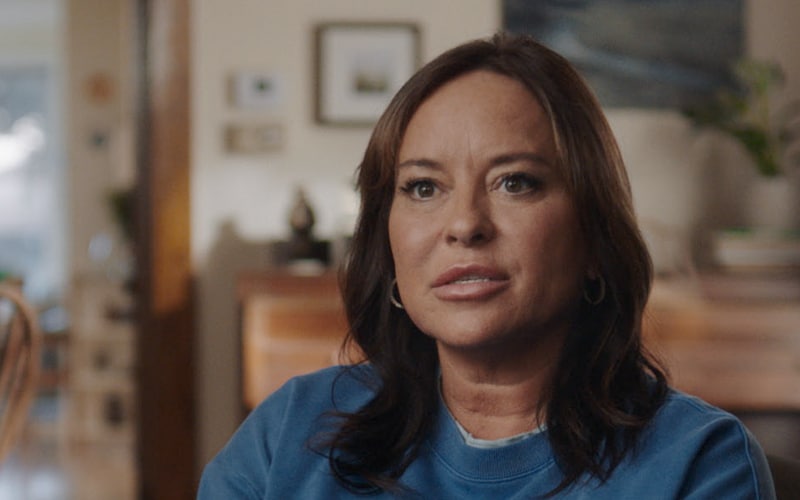
Some of the people featured in the Tips From Former Smokers® (Tips®) campaign used to think cigarettes were their “best friend.” In this ad, they talk about needing a better friend.

Anne G. started smoking at age 15 and smoked for more than 10 years. She met the love of her life three years after she quit smoking. They got married and now they have a young daughter. Anne’s tip is, building a healthy future for you and your family starts with leaving smoking in the past.

Anne G. used to smoke when she felt sad or down. Since quitting, Anne says she feels much happier. Quitting inspired Anne to improve her life in many ways, including eating healthier and exercising. She also found new activities, like yoga, working out, and taking walks with her dog. Anne’s tip is, there is life after cigarettes, and it may be better than you ever thought it could be.

Anne G. grew up around a lot of smoking. She started smoking at age 15 and smoked for more than 10 years. Quitting smoking was the hardest and best thing she ever did. In this video, Anne talks about the many ways her life improved after she quit smoking.
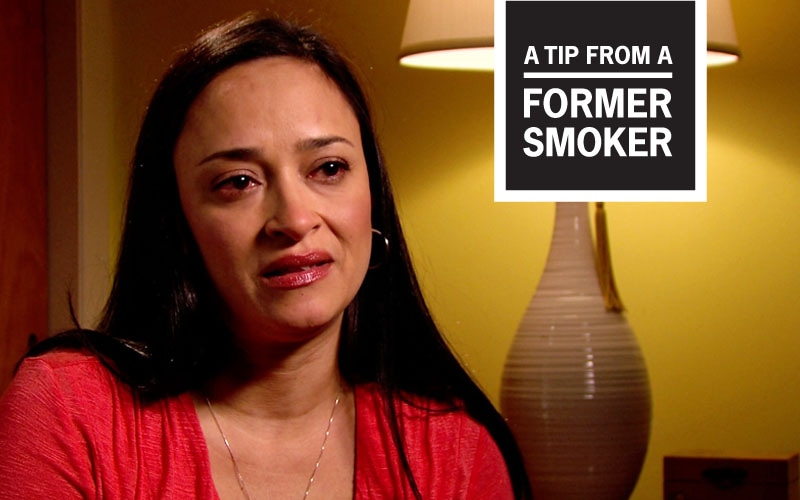
Beatrice’s son, Nick, wrote her a letter urging her to quit smoking. In this video from CDC’s Tips From Former Smokers® campaign, she tells how this act of love gave her the courage to end a lifelong addiction to menthol cigarettes.
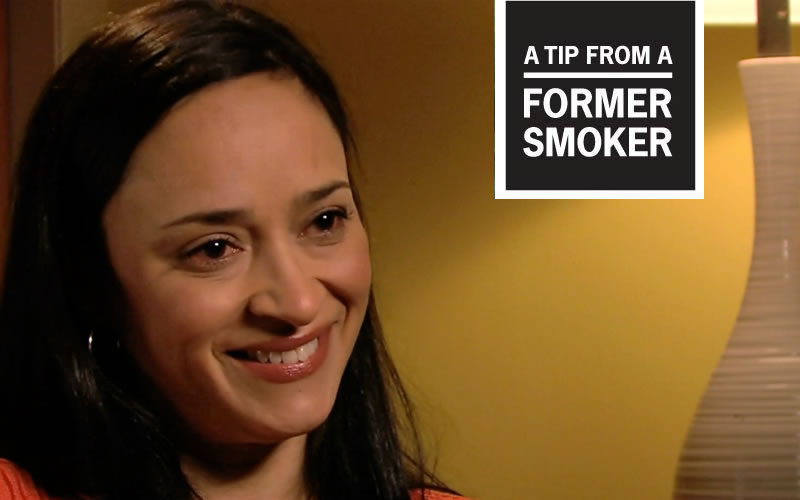
Beatrice describes some of the techniques she used to recognize and avoid her smoking triggers that helped her to quit smoking. Even though it was hard to do, by making a plan and sticking to it, she beat her addiction to menthol cigarettes and stopped smoking for good. This video is part of CDC’s campaign, Tips From Former Smokers.
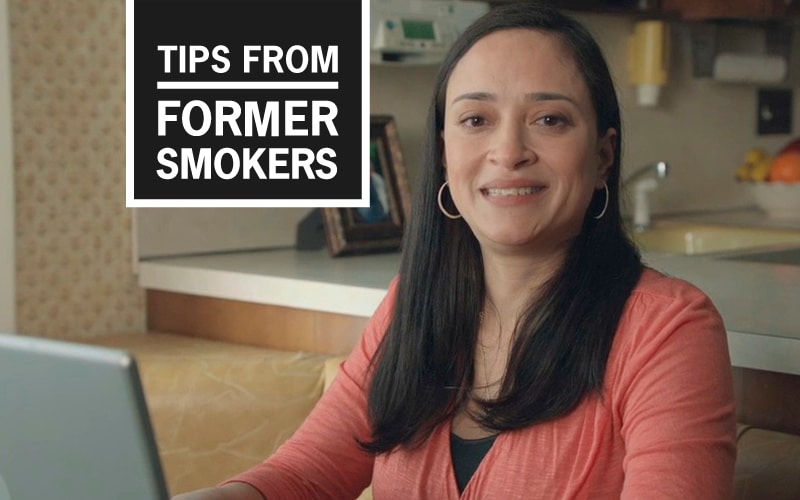
You can quit smoking! This inspiring TV ad features Beatrice R., James F., and Wilma S. — three people who successfully quit smoking after many years. They share their practical tips on how to quit for good in this commercial from CDC’s Tips From Former Smokers campaign.
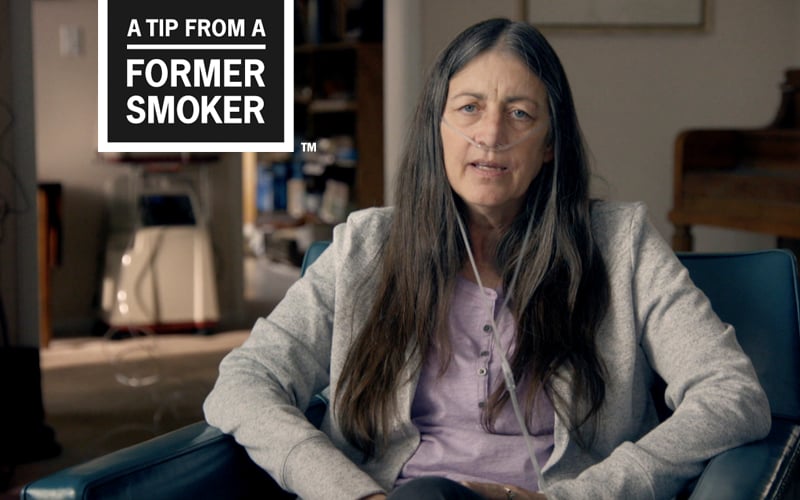
Becky started smoking cigarettes in high school to fit in. She was a heavy smoker for many years and at age 45, Becky was diagnosed with chronic obstructive pulmonary disease (COPD)—a serious lung disease. In this ad from CDC’s Tips From Former Smokers® (Tips®) campaign, Becky talks about her need for continuous oxygen. Becky died at age 62 from COPD.
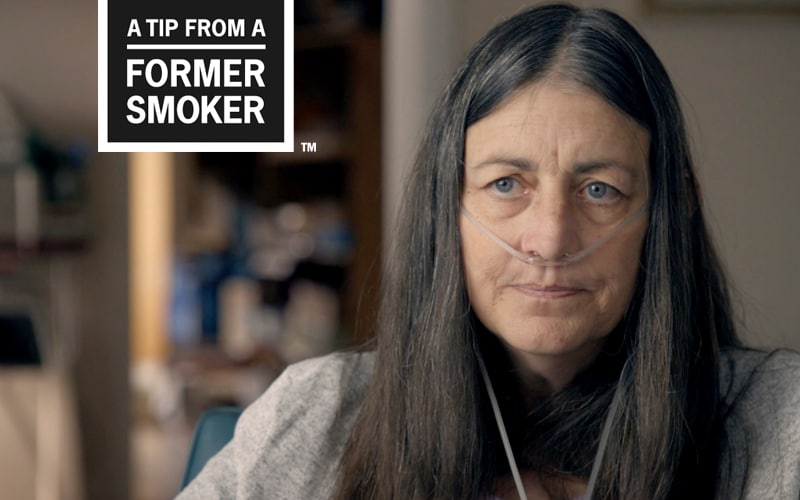
Becky smoked for years and had end-stage COPD. In this video, Becky shares how her life changed after she developed COPD. Although grateful for the life-giving benefits of her oxygen tank, she explains that it’s another thing she has to think about whenever she goes out. Becky died at age 62 from COPD.
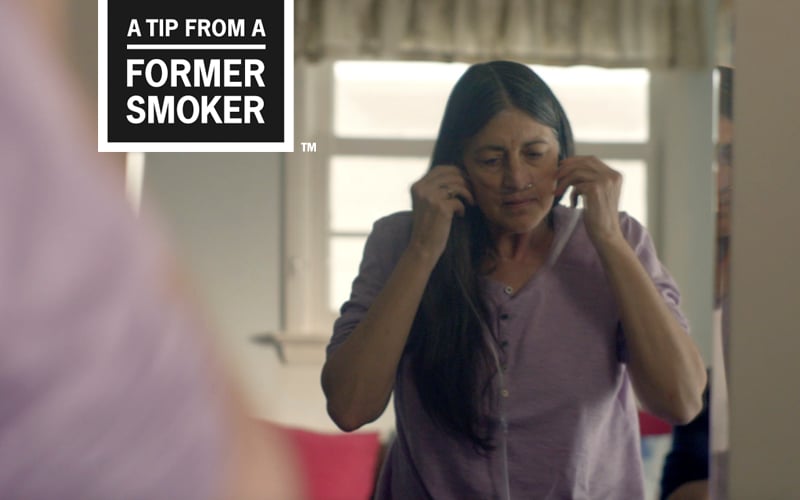
COPD doesn’t just affect the person who has it; it can affect the entire family. In this video from CDC’s Tips From Former Smokers® (Tips®) campaign, Becky, explains that her children had to deal with her disease since they were very young and shares how her COPD changed their lives. Becky died at age 62 from COPD.
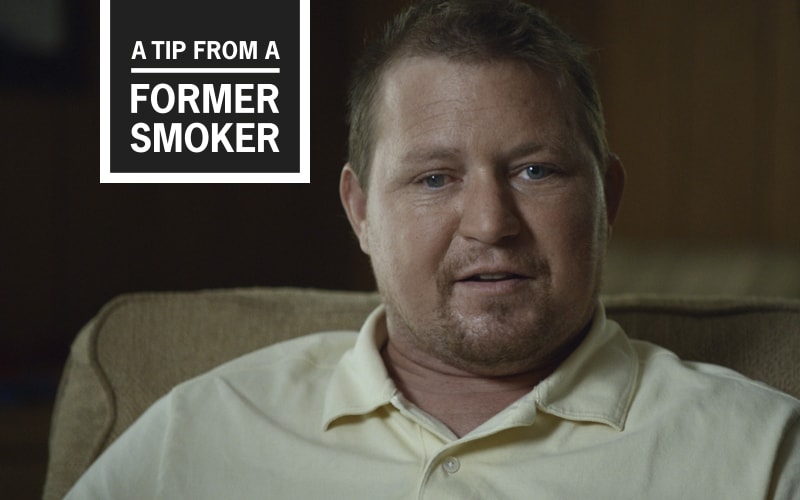
Bill had diabetes and he used to smoke. Cigarette smoking made his diabetes much worse. In this commercial, Bill explains the serious health problems he developed by age 40, including kidney failure, blindness in one eye, and a leg amputated due to poor circulation. Bill suggests that smokers make a list of everything they are willing to give up if they continue to smoke. Bill died from heart disease at age 42.
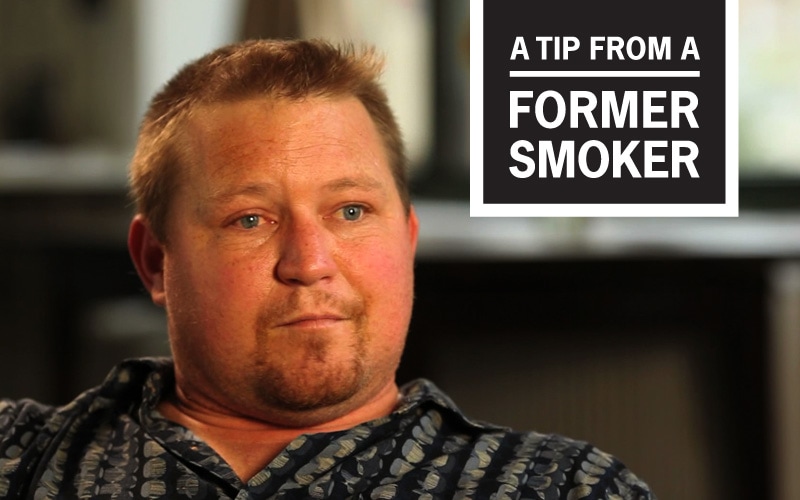
Bill started smoking as a teenager and ignored his doctor’s warning that smoking could make his diabetes much worse. In this video, Bill explains how different his life is now. He quit smoking before he turned 40, but not before losing a leg, kidney function, and the sight in one eye. Bill died from heart disease at age 42.

Bill, a person with diabetes, started smoking at 15, not realizing the problems it would eventually cause him and his family. He didn’t stop smoking until he was almost 40—after having had a leg amputated. In this emotional video, Bill encourages others to quit smoking, too. Bill died from heart disease at age 42.
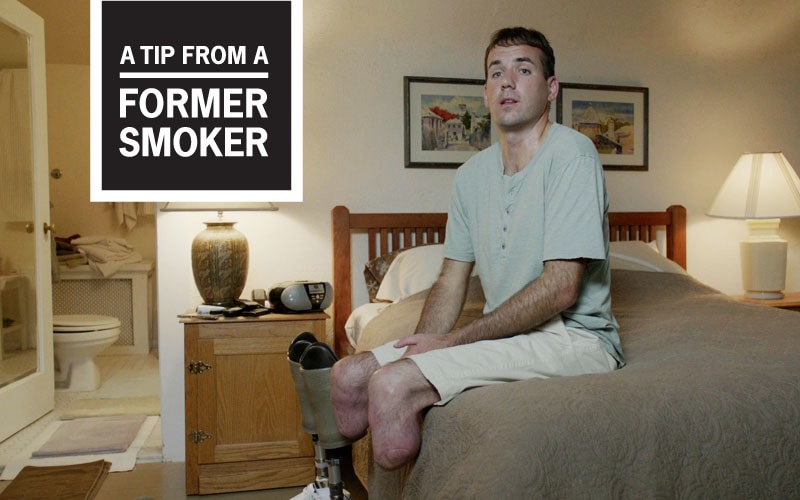
Brandon describes losing his foot, fingers, and other body parts to Buerger’s disease, a disorder linked to smoking, and testifies to the strength of addiction in this video from CDC’s Tips From Former Smokers campaign.
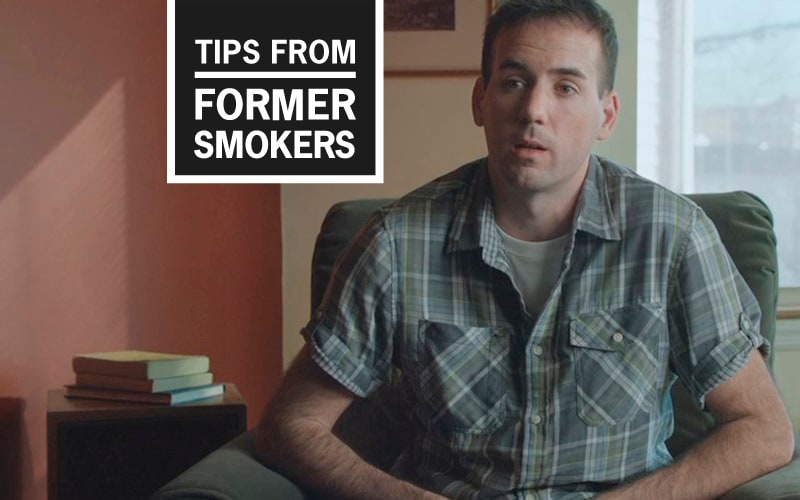
Smoking causes Buerger’s disease, which can lead to amputations. In this TV ad, Brandon and Marie talk about living with the effects of Buerger’s disease as part of CDC’s Tips From Former Smokers campaign.
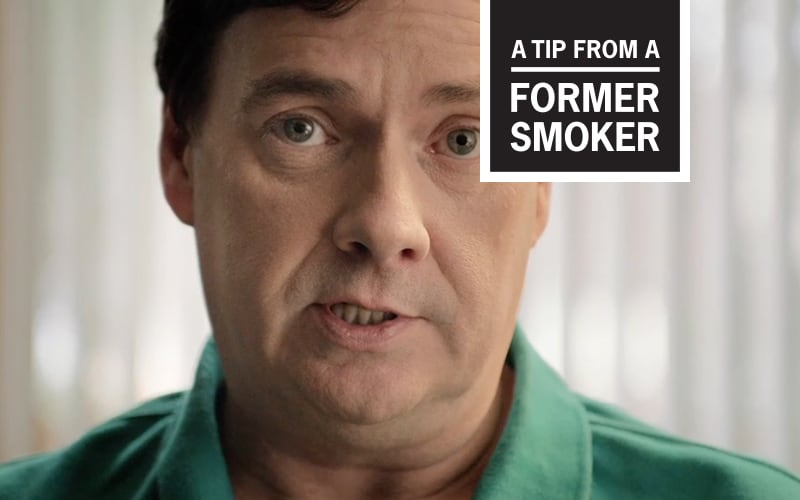
Brett started smoking cigarettes at age 16. By his mid-30s, Brett had gum disease—a danger for all people who smoke. By age 42, he had lost most of his teeth, including 16 during one surgery. In this TV ad, Brett says that your smile says a lot about you, and smoking can take that smile away.
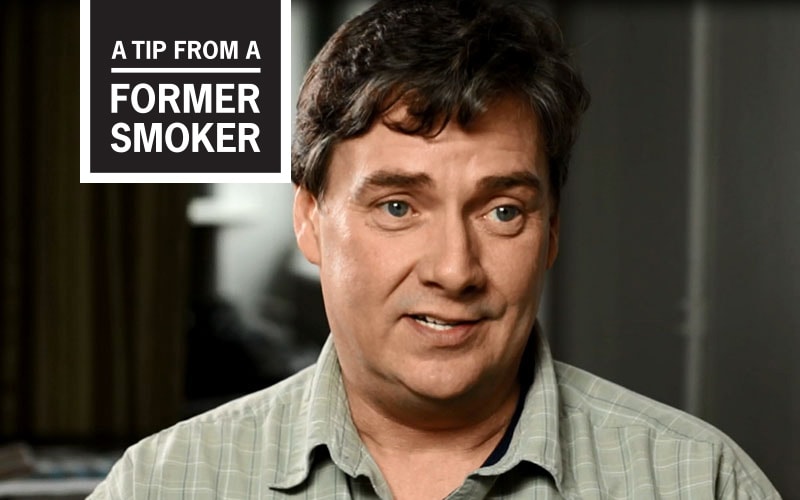
Brett started smoking when he was 16 to impress a girl. By his mid-thirties, he had gum disease and the tissues and bones holding his teeth in place were breaking down. In this video, Brett talks about his addiction. Even right after surgery to pull out 16 teeth, Brett was still smoking.
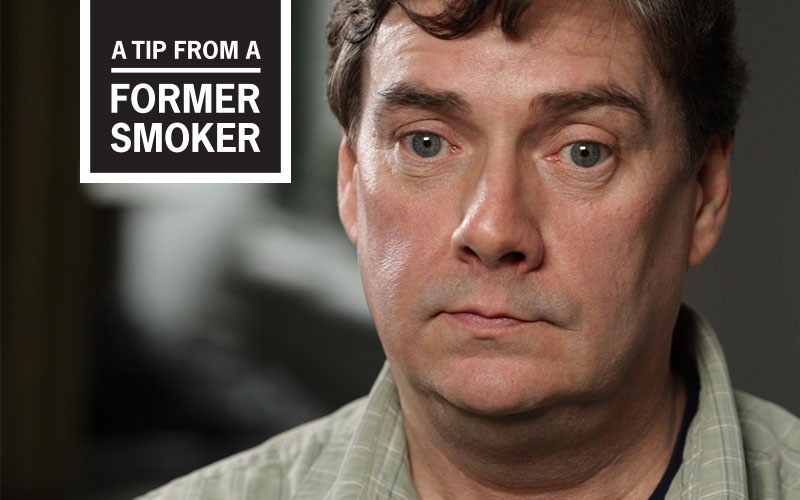
Brett smoked cigarettes and lost all of his front teeth—top and bottom—by the time he was 42. He had gum disease, which is a risk for people who smoke. In this video, Brett talks about trying to hide his tooth loss, even from his wife.
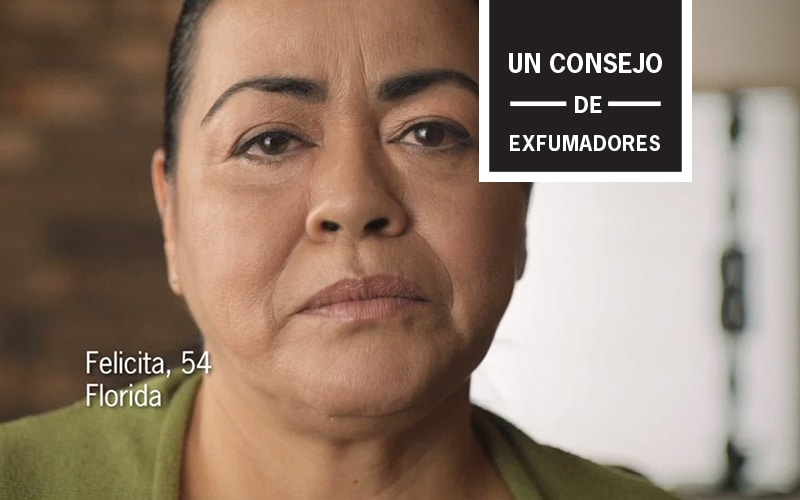
Felicita started smoking at age 12 and Brett at age 16. Neither of them knew that smoking could harm their gums and teeth. In this bilingual commercial, Brett and Felicita advise people not to smoke if they want to keep their teeth and their smiles.
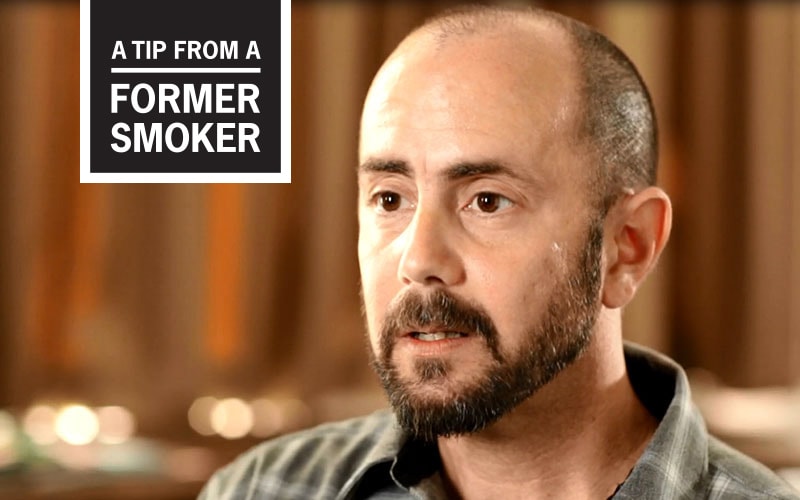
Smoking is especially dangerous for people who are living with HIV, the virus that can cause AIDS. Brian learned that lesson the hard way, when he had a stroke—a brain attack—at age 43. In this video, Brian talks about surviving HIV-related medical problems—then nearly losing his life because of smoking.
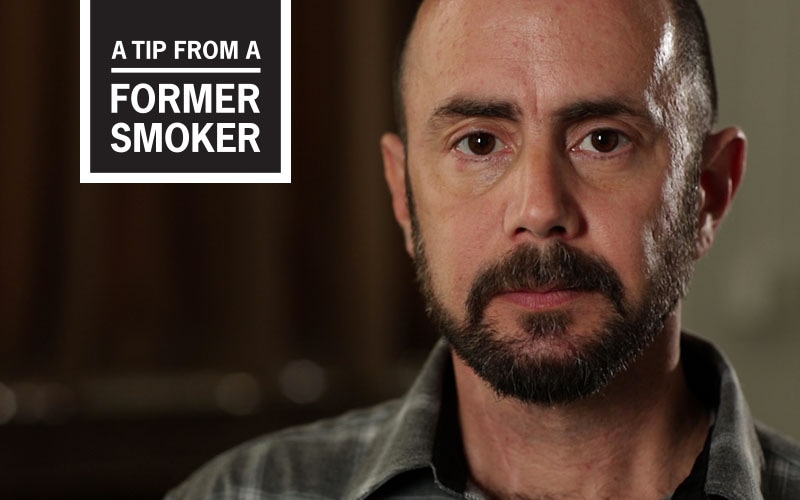
Brian never imagined he could have a stroke at age 43. He was in good health. But smoking, combined with having HIV, caused a stroke when he was doing what he loved most—working at the potter’s wheel. In this video, Brian talks about the day of his stroke and his efforts to recover.
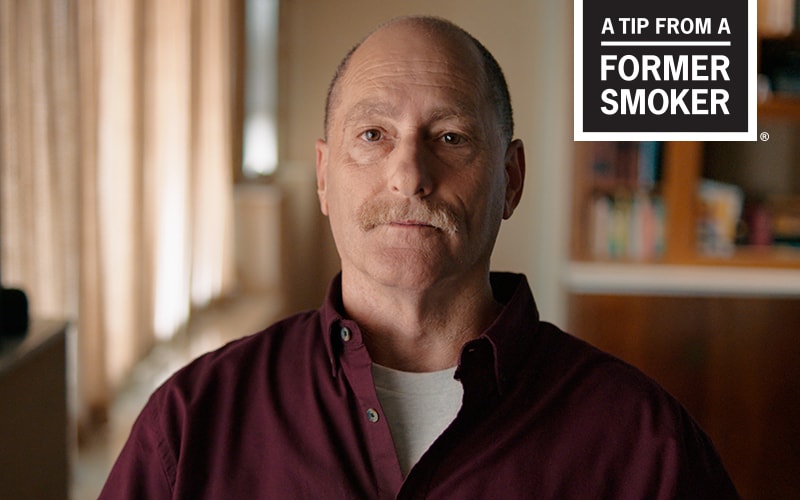
Brian started smoking before he was a teenager. He had a heart attack at 35 and had serious health problems for the rest of his life as a result of smoking. In this commercial, Brian says you probably know someone who has had a heart attack, chronic obstructive pulmonary disease (COPD), heart bypass surgery, a heart transplant, lung cancer, or part of their lung removed from smoking. He then shares that he has suffered all six. Brian died at age 68 after suffering from smoking-related health problems for more than 30 years.
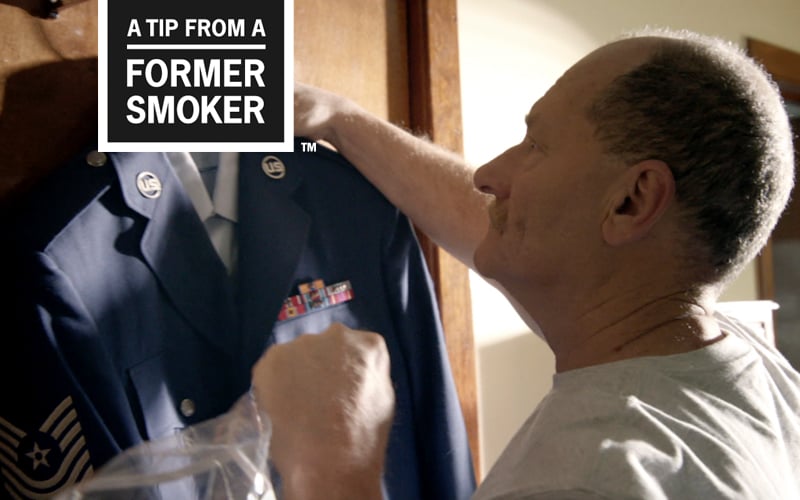
Brian started smoking cigarettes at age 8. After high school, he joined the U.S. Air Force because he wanted a military career. At 35, still smoking and stationed in England, Brian had a heart attack and spent months in hospital rooms. In this ad from CDC’s Tips From Former Smokers® campaign, Brian reveals how he couldn’t serve his country because of his heart disease. Brian died at age 68 after suffering from smoking-related health problems for more than 30 years.
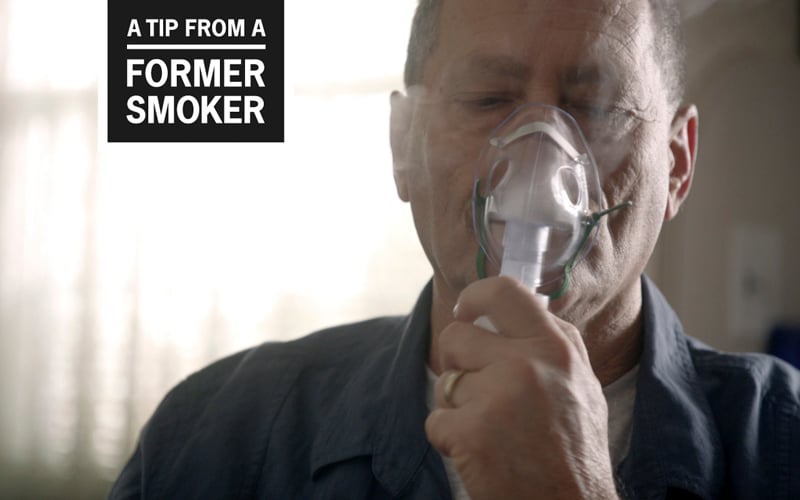
By the time Brian was 11 years old, he was already smoking close to a pack of cigarettes a day. In this video from CDC’s Tips From Former Smokers® campaign, he talks about how he smoked during his youth, marriage, and throughout his career in the U.S. Air Force. He had a heart attack at age 35 and spent months in hospital rooms. Brian died at age 68 after suffering from smoking-related health problems for more than 30 years.
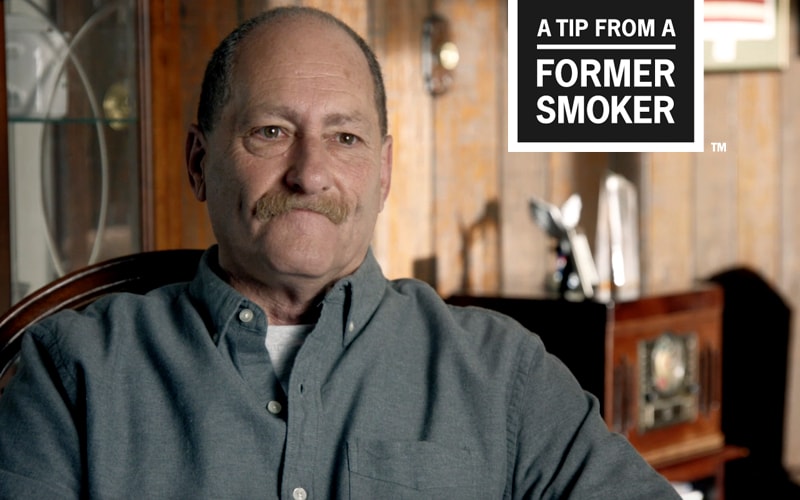
Brian’s smoking ruined his health and devastated his family. He finally quit smoking for good and was able to get a heart transplant. In this video from CDC’s Tips From Former Smokers® campaign, Brian encourages people who smoke to quit. Brian died at age 68 after suffering from smoking-related health problems for more than 30 years.
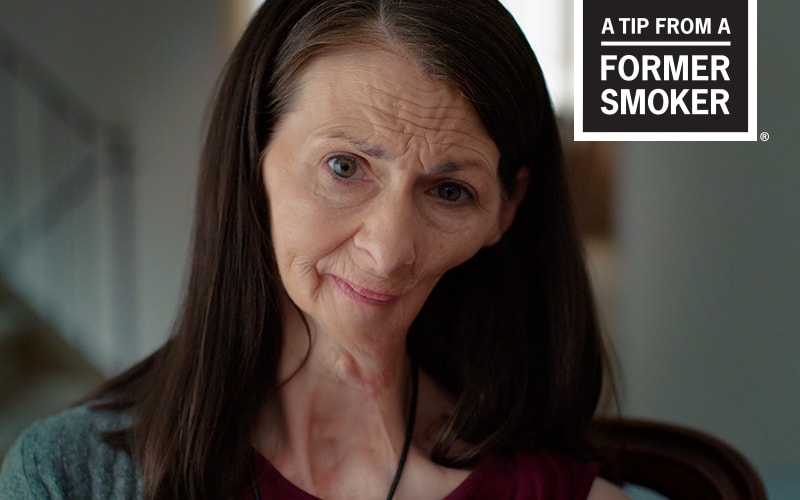
After years of smoking cigarettes, Christine lost her teeth and half her jaw to oral cancer. In this video, Christine talks about the toll tobacco use can take, not only on the person who uses it, but also on their family and friends.

When Christine lost her teeth and jaw to oral cancer after years of smoking cigarettes, her teenage children had to step up and take on adult responsibilities. In this video, Christine speaks about how her tobacco addiction robbed her kids of their childhood.

Christine began smoking cigarettes in high school to fit in. She became addicted and continued to smoke menthol cigarettes for many years. At 44, she was diagnosed with oral cancer. She lost her teeth due to radiation treatments and had to have half of her jaw removed after the cancer came back twice. In this commercial, Christine talks about how oral cancer treatments and reconstructive surgery have affected her appearance.
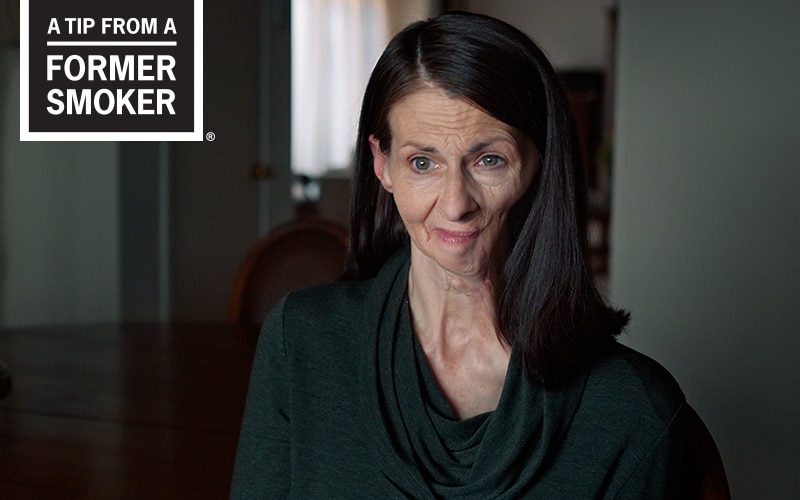
Christine started smoking cigarettes in high school to fit in, but she never thought she smoked enough to be a “real smoker.” She was diagnosed with oral cancer at age 44, and lost her teeth and half of her jaw due to cancer. Christine says if you think this could never happen to you, think again: “If you smoke, you’re a smoker.”
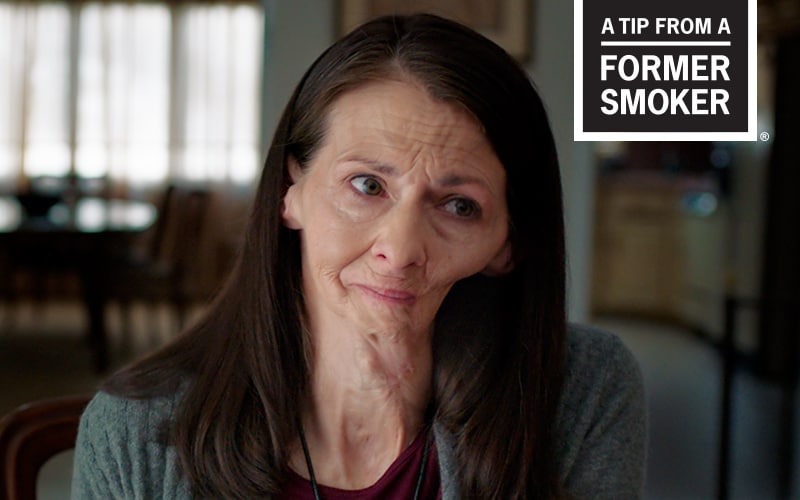
Christine started smoking in high school to fit in and continued to smoke menthol cigarettes for many years. She was diagnosed with oral cancer in her early 40s. She lost her teeth and had half of her jaw removed. In this video, Christine talks about the moment when she finally realized the effects of smoking—year after year and cigarette after cigarette—and decided to quit.
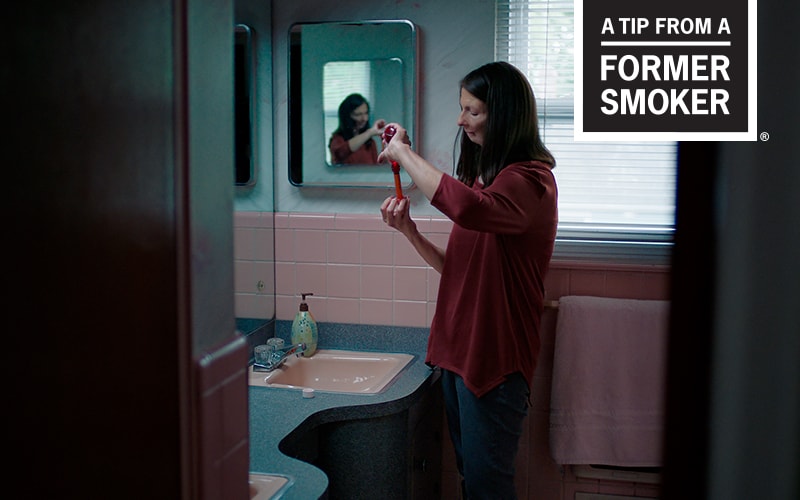
In this video, Christine talks about how her smoking affected her children, particularly her 17-year-old son. While she was going through treatment, she says her son had to become head of the household instead of getting to be a kid.
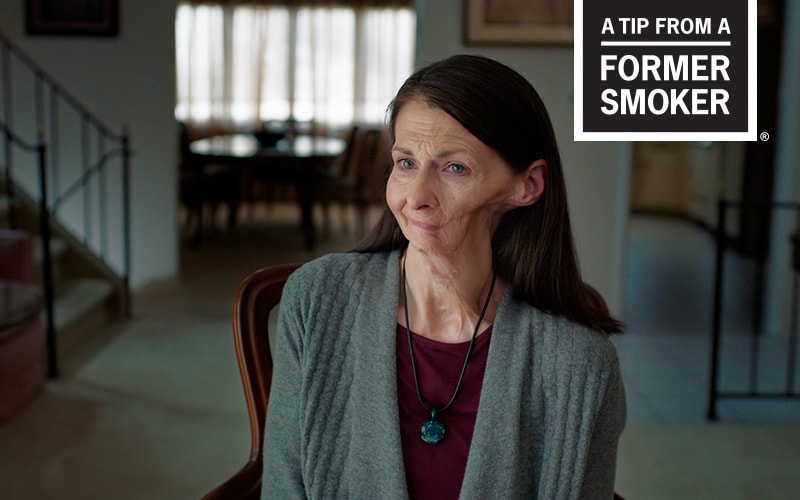
In this video, Christine talks about the things she did before her oral cancer surgery to make sure her children would have a happy life if she died. She wrote letters filled with life lessons, spent quality time with them to create happy memories, and held a big party filled with supportive friends who could be there to help her children in the event of her death.
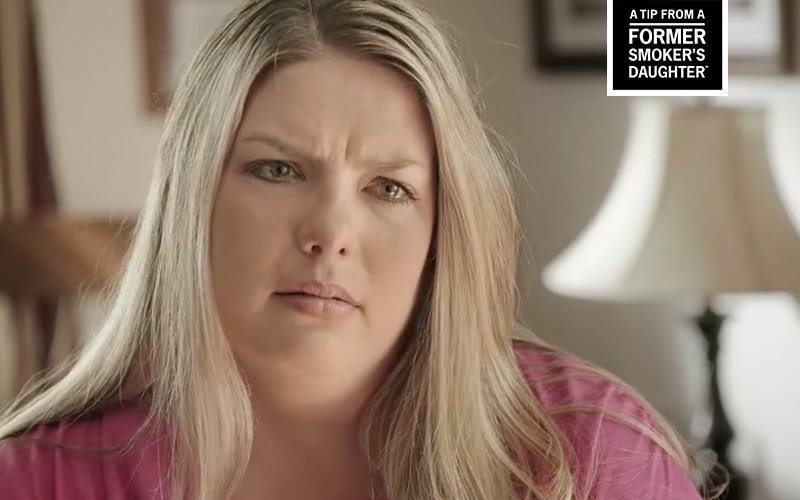
Terrie, a Tips From Former Smokers® campaign participant, bravely showed the world how years of smoking cigarettes damaged her health. In this video, Terrie’s daughter Dana shares how difficult the journey was for Terrie’s family.

Andy A. and Debra B. enjoyed a wonderful life together — going out to eat, singing karaoke, and having family over to their house. Their lives changed after Andy learned he had throat cancer from smoking. Debra had to close her business to focus on taking care of him. In this video, Andy and Debra talk about how smoking-related throat cancer changed their lives and relationship.

In 45 years of marriage, Denise and Brian H. spent a lot of time together. Much of that time was spent in doctors’ offices and hospitals. Brian had heart disease, lung cancer, and COPD from smoking cigarettes for most of his life. Denise put her career on hold to be his full-time caregiver. Brian died at age 68 after suffering from smoking-related health problems for more than 30 years.
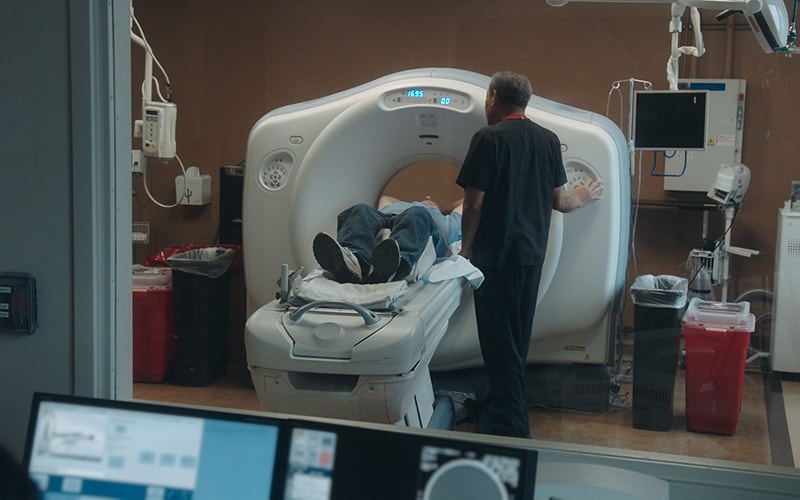
Brian had heart disease, lung cancer, and COPD from smoking cigarettes. His wife, Denise, was there with him for every doctor’s appointment, scan, surgery, and recovery. Although Brian was the one who was sick, his illnesses affected both of their lives. Brian died at age 68 after suffering from smoking-related health problems for more than 30 years.
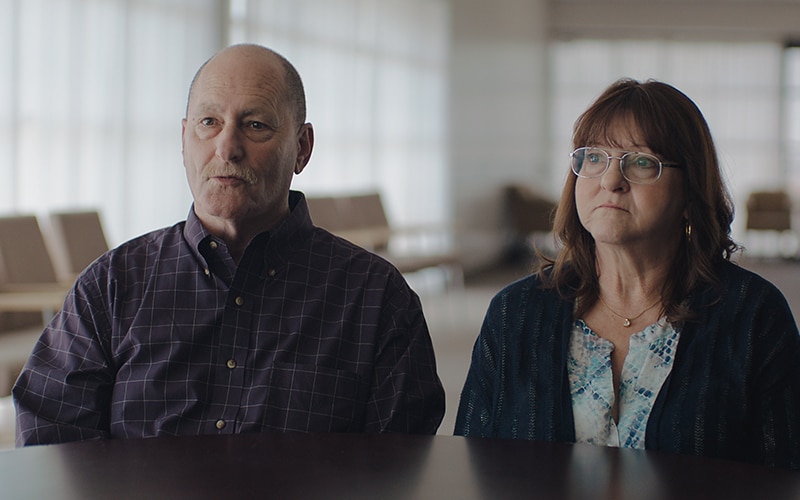
Denise took care of her husband, Brian H., for more than 30 years. Brian had COPD, lung cancer, and heart disease from smoking. In this video, Denise says the thought of losing her best friend scares her more than anything. Brian died at age 68.

Elizabeth B. smoked and learned from her doctor that she had smoking-related peripheral artery disease (PAD). Elizabeth also developed kidney cancer. Elizabeth’s tip is, quit now. The sooner you quit, the better.

Elizabeth B. thought smoking menthol cigarettes made her look sophisticated. At age 52, she learned she had smoking-related peripheral artery disease (PAD) and had major surgery to restore blood flow to her legs. In this ad, Elizabeth shares her tip, which is that smoking could give you PAD – as she says, “That’s a sophisticated way of saying you are going to have a hard time walking for the rest of your life”.
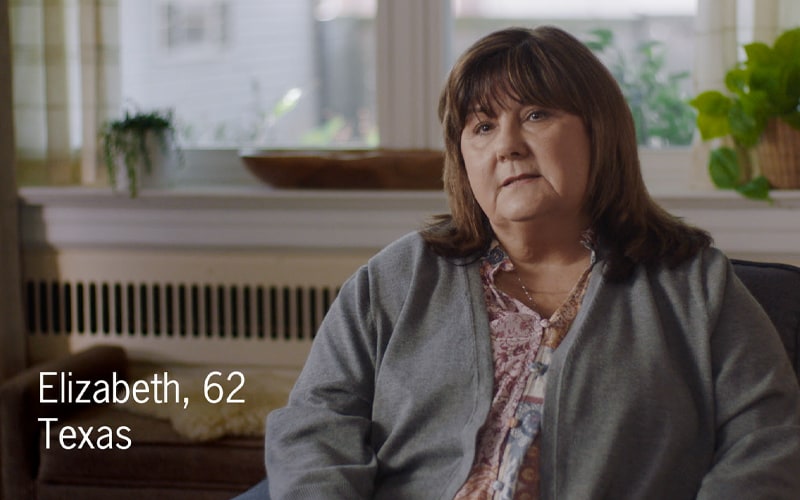
People told Elizabeth B. she could die if she continued smoking menthol cigarettes. She thought, “at least I’ll have fun.” In this ad, Elizabeth shares that living with smoking-related diseases is no fun at all.
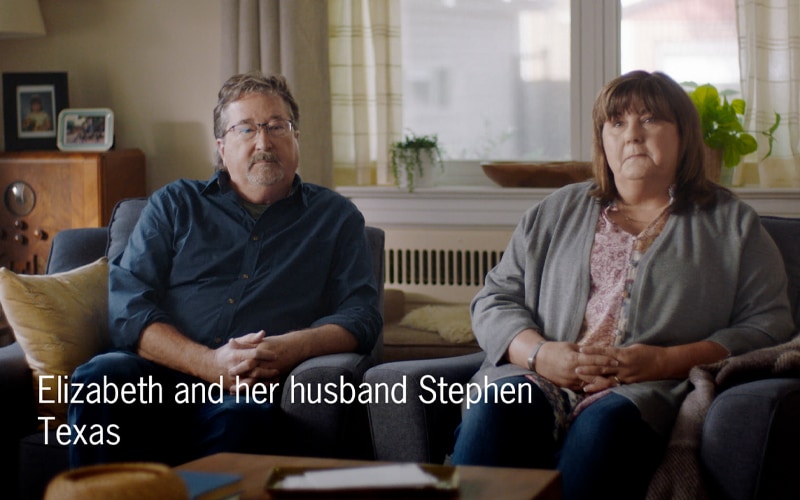
Elizabeth B. had numbness in her feet and cramping in her calf that kept getting worse. She learned from her doctor that she had smoking-related peripheral artery disease (PAD). Elizabeth also developed kidney cancer. In this video, Elizabeth and her husband Stephen share how Elizabeth’s health impacts their lives.
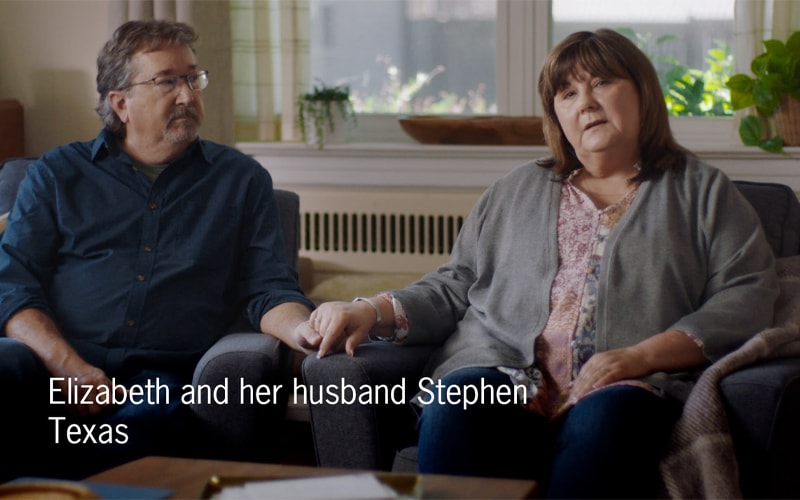
Elizabeth B. was 52 and a newlywed when she learned she had smoking-related peripheral artery disease (PAD). She had major surgery to restore blood flow to her legs. Elizabeth offered to end her marriage to her husband, Stephen. She felt he did not sign up for taking care of her full-time. In this ad, Elizabeth shares how Stephen supports her every day.

Some of the people featured in the Tips From Former Smokers® (Tips®) campaign used to think cigarettes were their “best friend.” In this ad, they talk about needing a better friend.
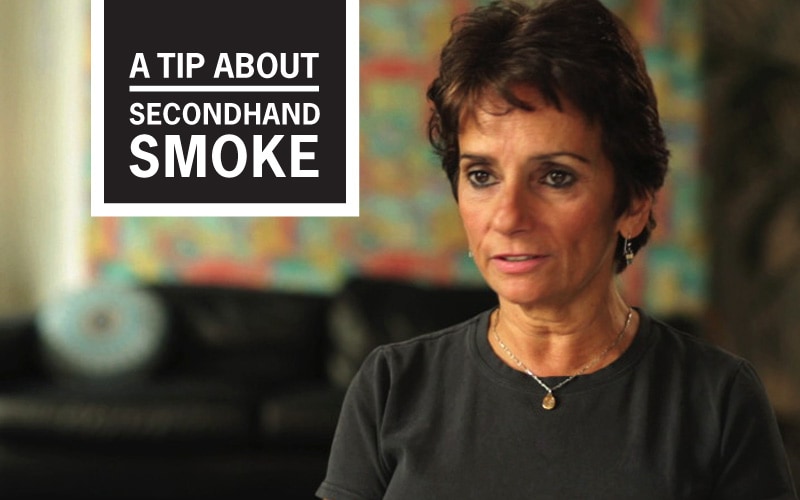
Ellie was in her mid-30’s when she had her first asthma attack — triggered by exposure to secondhand smoke. She loved her job as a bartender, but began to dread going to work. In this video, Ellie says, “I could feel my lungs getting tighter. I knew I couldn’t be around the smoke or I was going to die, or something bad was going to happen to me.” Eventually Ellie quit her job for the sake of her health, but feels everyone deserves to have a safe and healthy work environment.

Ellie never smoked, but she developed asthma from secondhand smoke exposure. She worked in bars that served the LGBQ communities and noticed lots of smokers. Ellie loved the work but quit to save her health. In this video, she talks about smoking and how people define their personal identity.
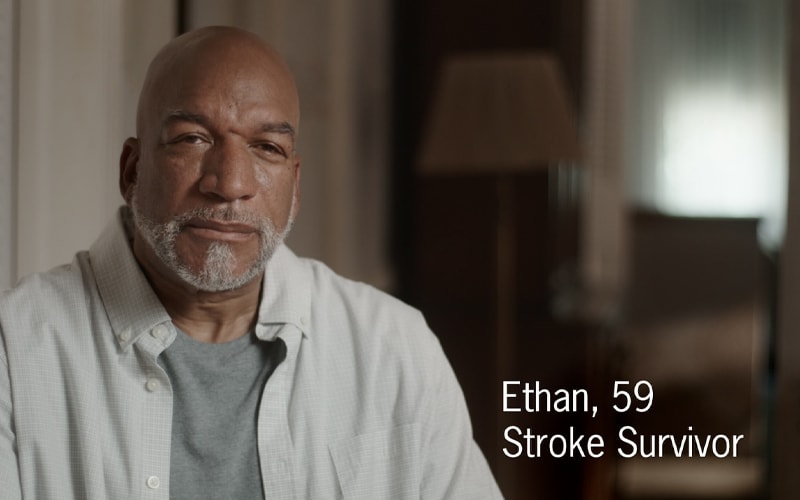
Ethan B. grew up seeing ads that convinced him smoking was “cool.” In this ad, Ethan says there’s nothing cool about having a smoking-related stroke.
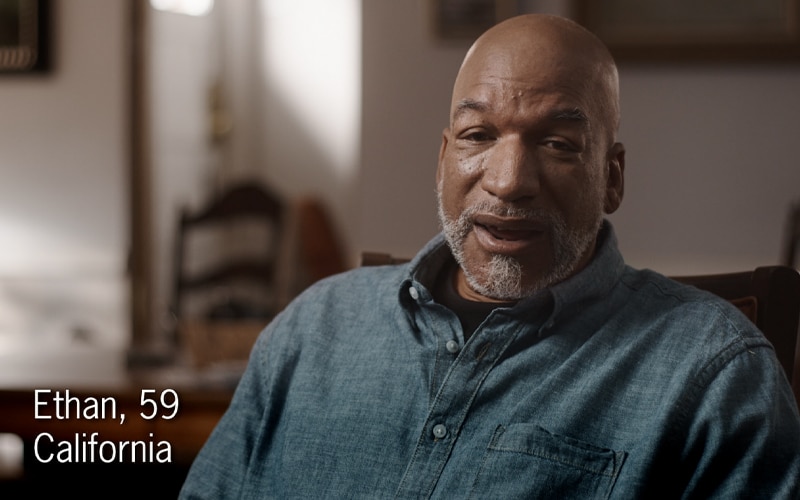
Ethan started smoking menthol cigarettes because he wanted to be “cool.” He wanted to be like the people he saw in movies and commercials. In this video, he describes how smoking affected his health and shares that he had two smoking-related strokes.
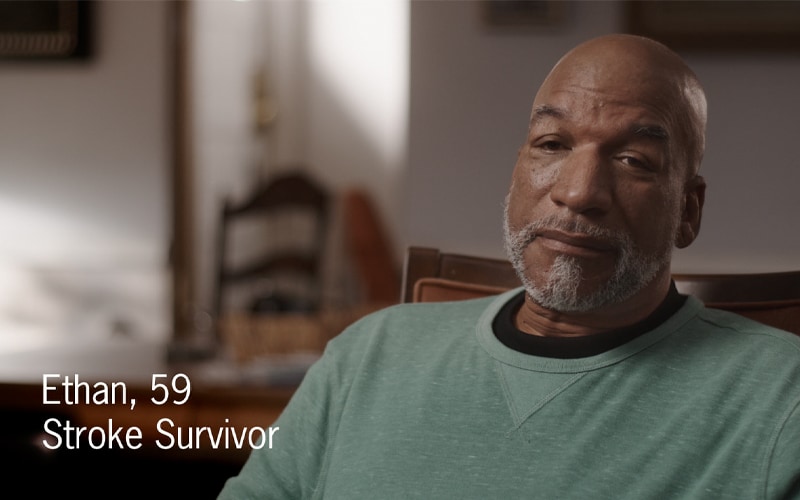
Ethan B. remembers seeing ads that made smoking menthol cigarettes seem “soothing” and “fresh.” After having two smoking-related strokes, Ethan knows there’s nothing soothing about smoking menthol cigarettes.
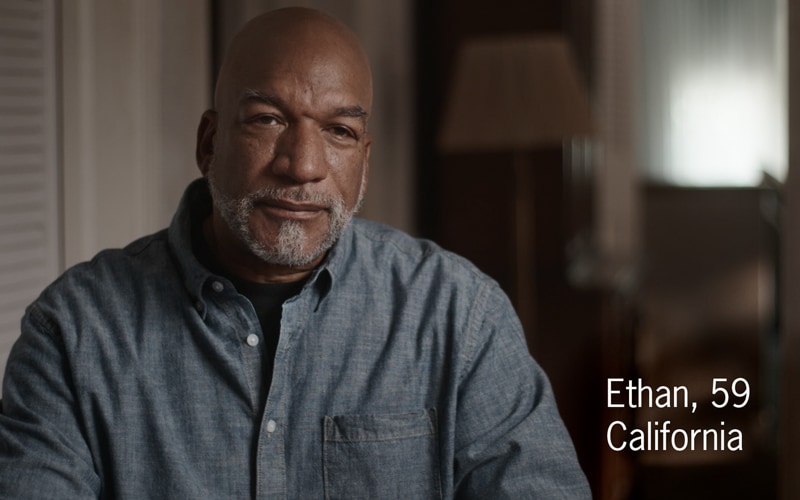
Smoking-related strokes affected Ethan B.’s memory. On good days, he occasionally loses his train of thought. On bad days, he feels confused and can barely finish a sentence. In this ad, Ethan explains that he makes notes to himself on sticky notes to remember things.

Some of the people featured in the Tips From Former Smokers® (Tips®) campaign used to think cigarettes were their “best friend.” In this ad, they talk about needing a better friend.

Felicita R. smoked for more than 30 years. She was diagnosed with severe gum disease and had to have all of her teeth removed. She was fitted for dentures and now typically eats only soft foods. Felicita’s tip is you might think quitting smoking feels like pulling teeth but it’s not even close.

Felicita R. started smoking at age 12 and smoked for more than 30 years. When she was young, she thought smoking made her look cool. She was diagnosed with severe gum disease at age 50 and had to have all of her teeth removed. In this video, Felicita talks about her mission to help friends and family members quit smoking.
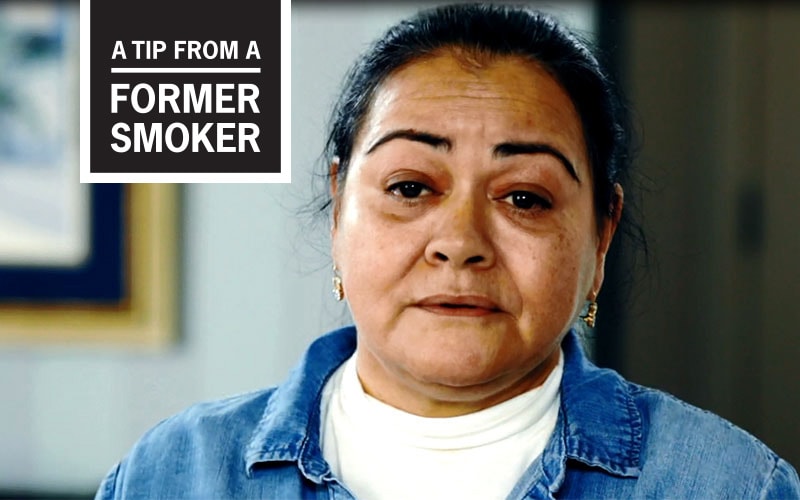
Felicita started smoking at age 12. By the time she was 40, Felicita had developed gum disease and had loose teeth—but like many people, she did not have a lot of pain as the gum disease got worse. In this video, Felicita talks about getting life-changing news from her dentist.

Felicita started smoking at age 12 and Brett at age 16. Neither of them knew that smoking could harm their gums and teeth. In this bilingual commercial, Brett and Felicita advise people not to smoke if they want to keep their teeth and their smiles.

Fred W. was diagnosed with throat cancer from smoking when his kids were very young. He now speaks with the help of a laryngeal implant. Fred still wanted to do all the same activities with his kids that his dad did with him, like fishing. But, he has not figured out how to have a conversation and fish at the same time with his laryngeal implant.

Fred W. was diagnosed with throat cancer from smoking. He had surgery to remove the cancer. He now has a stoma (a surgically created opening) in his throat that allows him to breathe and a laryngeal implant that allows him to speak. If you think cigarettes are expensive, here is Fred’s tip – after treatment for throat cancer from smoking, with all the hospital stays and surgeries, you realize the true cost is a lot more.

Fred W. was diagnosed with throat cancer from smoking. He had to give up activities he cherished, such as playing his favorite musical instrument, the saxophone. In this video, he talks about the things he had to give up because of smoking-related disease.

Fred W. had throat cancer from smoking cigarettes. He had to give up activities he cherished, such as playing his favorite musical instrument, the saxophone. Fred also had to give up things like spending time at the beach. In this video, he talks about the things he misses because of smoking-related disease.
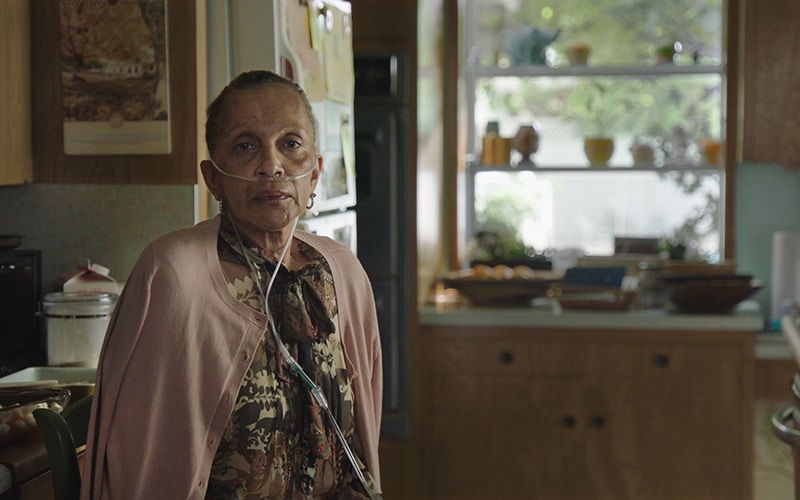
Geri loves preparing a Thanksgiving feast for her family. But now that she’s living with smoking-related COPD, even the smallest effort tires her out. Geri has learned to start cooking a month ahead so the meal will be ready on time.
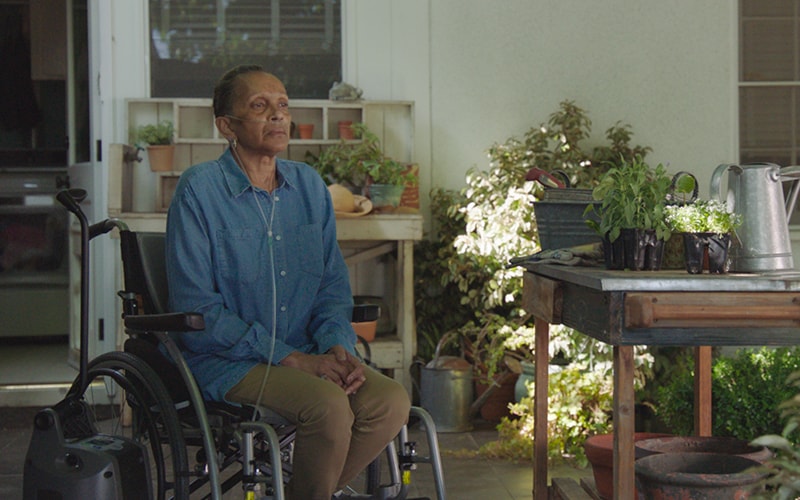
Geri has late-stage COPD from smoking. She hopes to get accepted for a lung transplant before it’s too late. Geri explains that she talks to her adult children every day because she doesn’t know how much time she has left.
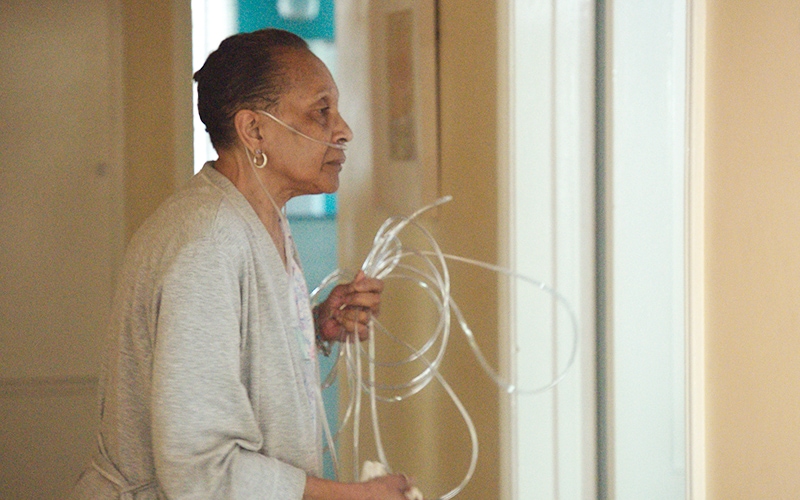
Geri was on the move all day, every day, until COPD from smoking robbed her of breath. Because of her illness, Geri had to quit her job as a mail carrier at the age of 54. Now on oxygen 24/7, Geri tries to enjoy every day she can.
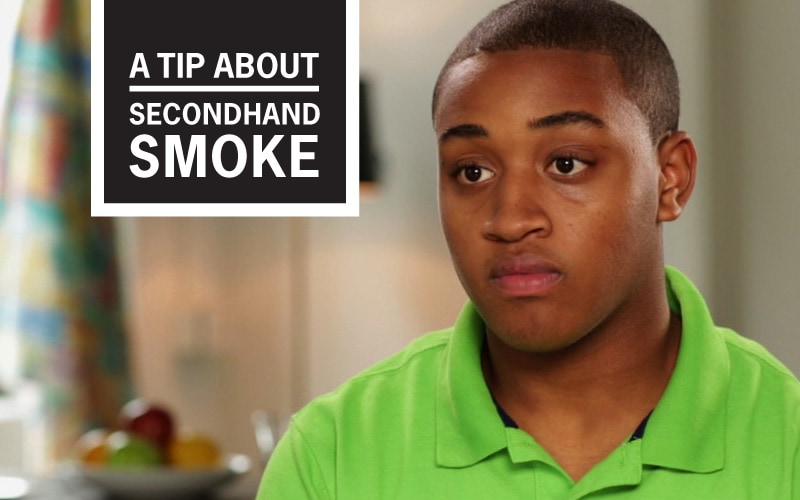
Jamason and his mother Sherri talk about the day Jamason had to go to the hospital after having a severe asthma attack at work, triggered by exposure to secondhand smoke. Recounting the drive to the hospital, Sherri said, “I just held his hand, and told him just squeeze it every now and then so I know he’s breathing.” In this video, Jamason admits that after such a severe attack, he was afraid to leave the hospital because he knew that outside, in the real world, people smoke.
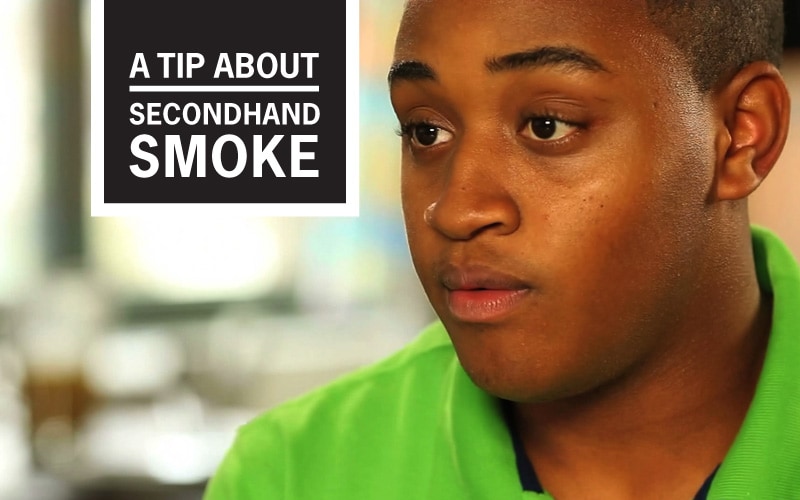
Jamason had a severe asthma attack triggered by secondhand smoke when he was 16. He spent four days in the hospital, gasping for breath. In this video, he talks about asking people not to smoke near him, …because that is my life.
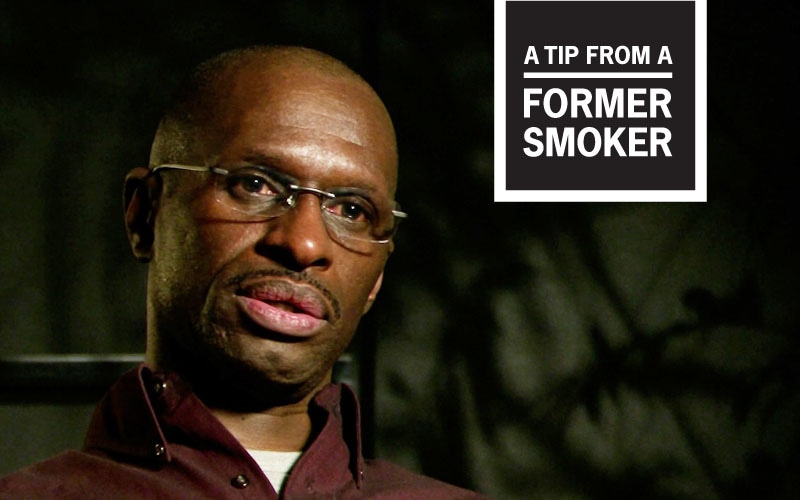
When James was told he had diabetes, he knew he had to stop smoking in order to better manage his health. His healthcare provider told him that he needed to exercise more, and he found that smoking cigarettes made exercising difficult. For James, this became an important reason to quit smoking for good. This video is part of CDC’s campaign, Tips From Former Smokers.

James started smoking menthol cigarettes as a kid to be like his father. He discusses his father’s health problems and their relationship in this video from CDC’s Tips From Former Smokers campaign.

You never know when a decision you make could undermine your choice to quit smoking. James describes a moment he had with his roommate after he had resolved to stop smoking cigarettes. James realized the potential for relapse, and took steps to make sure that it didn’t happen. This video is part of CDC’s campaign, Tips From Former Smokers.

You can quit smoking! This inspiring TV ad features Beatrice R., James F., and Wilma S. — three people who successfully quit smoking after many years. They share their practical tips on how to quit for good in this commercial from CDC’s Tips From Former Smokers campaign.
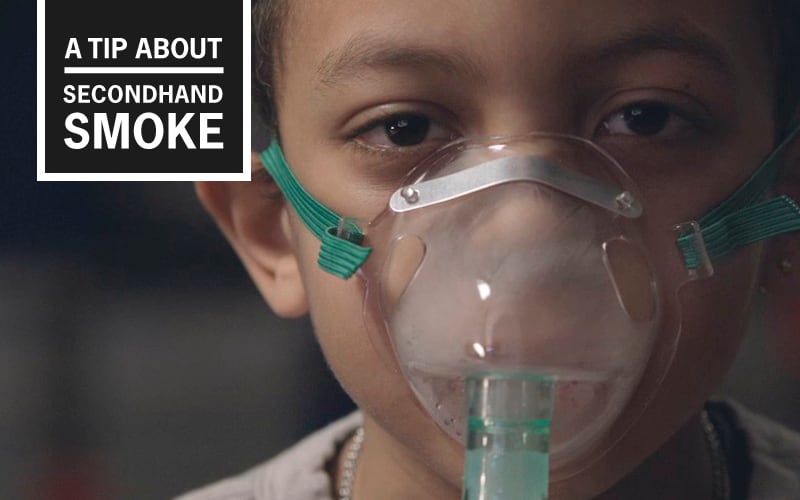
Exposure to secondhand smoke can trigger a life-threatening asthma attack. This commercial, Jessica, a mother with a young son who suffers from asthma attacks due to secondhand smoke exposure. In her tip, she urges people not to be shy to tell people not to smoke around kids.
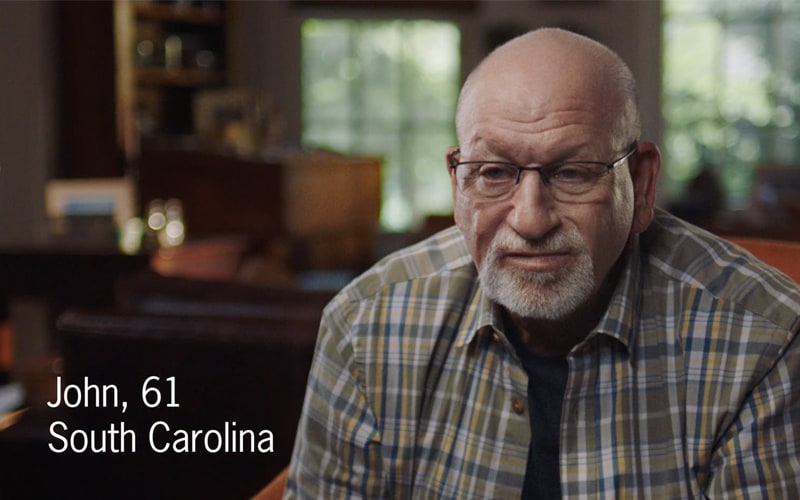
John B. tried several different strategies to quit smoking, but he continued to struggle with nicotine addiction. He found a doctor who prescribed medicines and counseling that helped him finally quit. In this ad, John shares his tip: keep trying to quit. You only have to quit for good once.
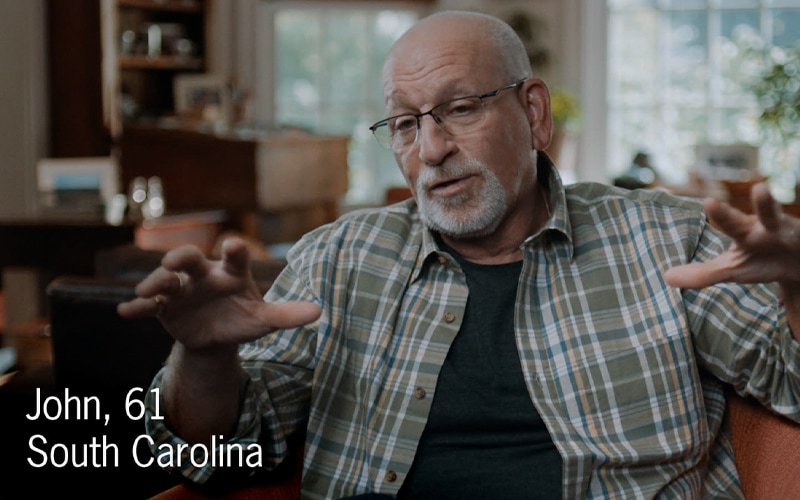
John B. could not go a day without smoking a cigarette. He tried several different strategies to quit smoking, but he continued to struggle with nicotine addiction. In this video, John talks about finding a doctor who helped him quit for good. The doctor prescribed him two medicines and counseling. He wants people who smoke to keep trying to quit.

Some of the people featured in the Tips From Former Smokers® (Tips®) campaign used to think cigarettes were their “best friend.” In this ad, they talk about needing a better friend.
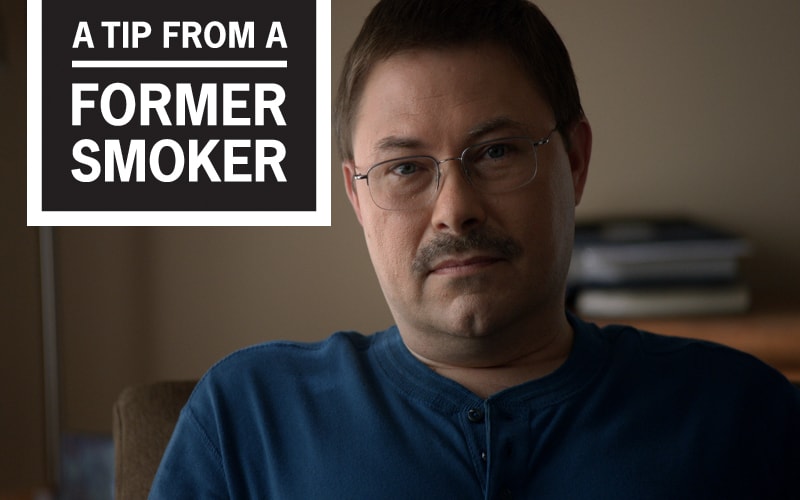
After years of smoking, Julia, a busy working mom, and Mark, a military veteran, each received frightening news. Their doctors found colorectal cancer, which is a danger for all smokers. In this TV commercial, Julia and Mark share a tip for dealing with colorectal cancer.
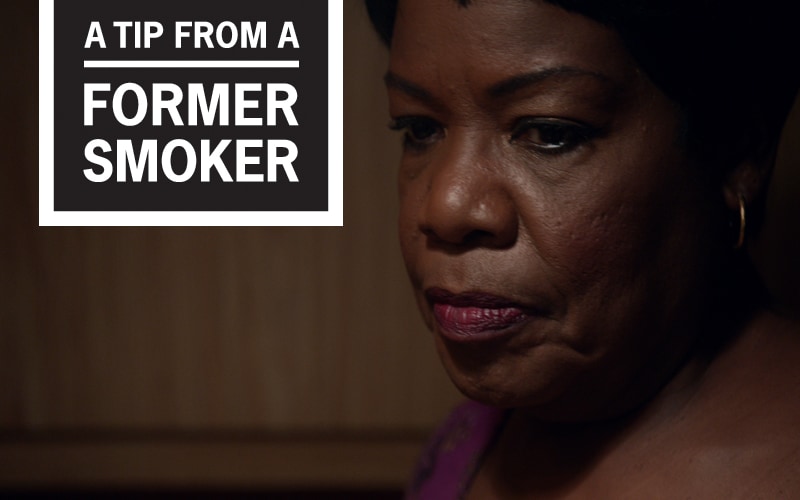
Julia tried to avoid smoking around her son, but she didn’t think too much about her own health. Then she was diagnosed with colon cancer and nearly died. In this video, Julia talks about how her battle with cancer terrified her loved ones and opened her eyes about how smoking can harm an entire family.

By age 33, Kristy had been a heavy smoker for 20 years. She tried using electronic cigarettes (e-cigarettes) to quit cigarette smoking, but continued to smoke regular cigarettes. She eventually stopped using e-cigarettes and went back to smoking regular cigarettes. In this commercial, Kristy talks about how she quit for good after her lung collapsed from smoking.
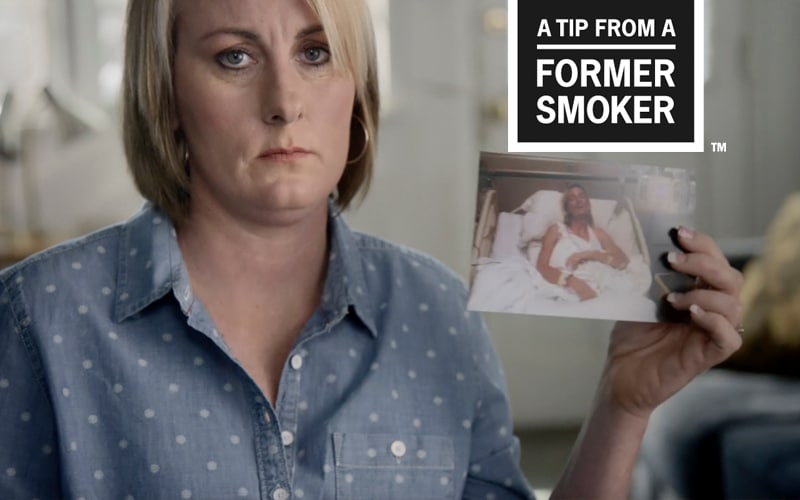
Kristy tried using e-cigarettes to help her stop smoking, but never quit smoking regular cigarettes completely. Only after her lung collapsed did she realize she had to stop smoking cigarettes completely.

Kristy is a 36-year-old truck driver from Tennessee who used to smoke cigarettes to help pass time. In this video, Kristy explains what happened after one trip. She was rushed to the hospital, struggling to breathe. Her lung had collapsed. After surgery and a long recovery, she vowed never to smoke again.
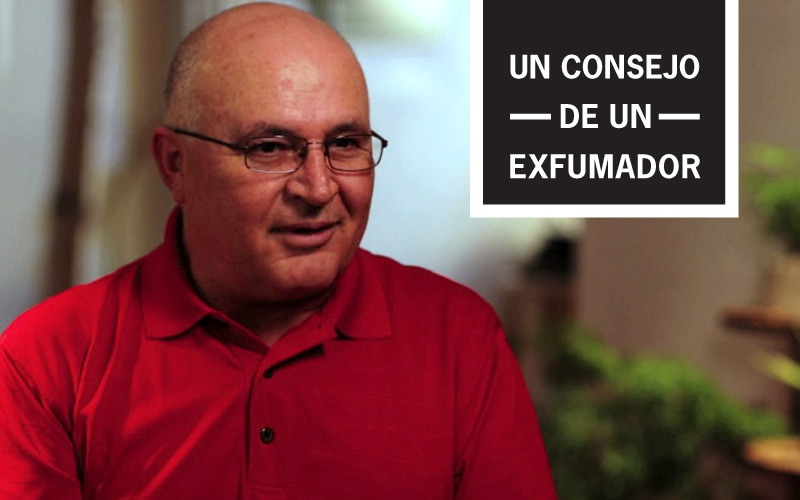
Mariano smoked for 30 years. One day he woke up and felt dizzy and nauseous. “I didn’t know what was happening to me and started sweating.” Mariano needed open heart surgery to save his life. In this video from the CDC’s Tips from Former Smokers campaign he says: “I was fortunate to have a second chance at life.” Mariano hopes that others don’t risk their health and stop smoking today.
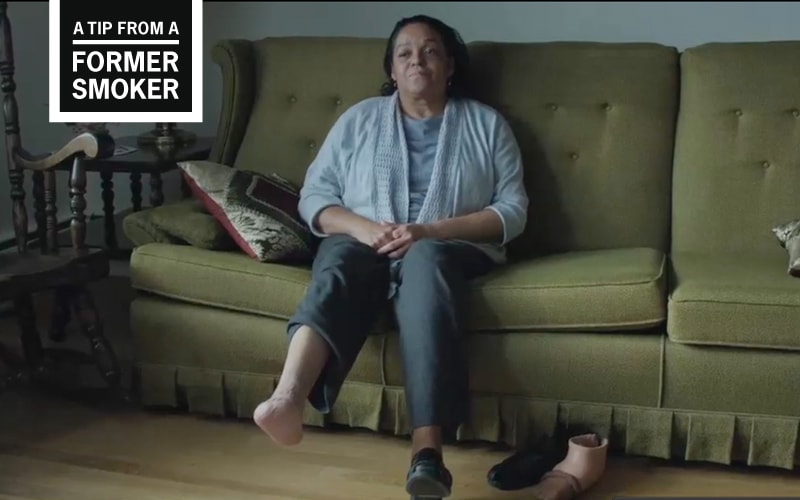
In this video, Marie talks about discovering she had Buerger’s disease, an illness caused by smoking, and its effects on her life.

Smoking causes Buerger’s disease, which can lead to amputations. In this TV ad, Brandon and Marie talk about living with the effects of Buerger’s disease as part of CDC’s Tips From Former Smokers campaign.

After years of smoking, Julia, a busy working mom, and Mark, a military veteran, each received frightening news. Their doctors found colorectal cancer, which is a danger for all smokers. In this TV commercial, Julia and Mark share a tip for dealing with colorectal cancer.
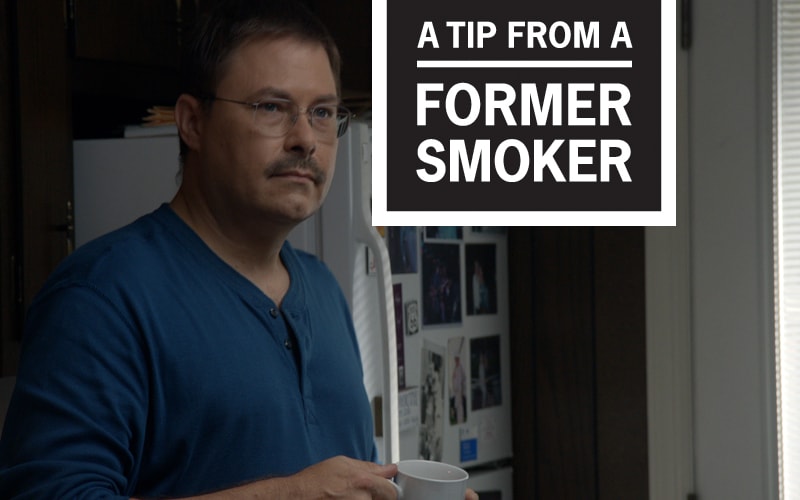
Mark picked up his first cigarette as a teenager to fit in with friends. Life moved quickly and he continued to smoke until age 42, when doctors told him he had rectal cancer, one of many cancers that are linked to smoking. In this video, Mark talks about the harsh treatments he needed to save his life.
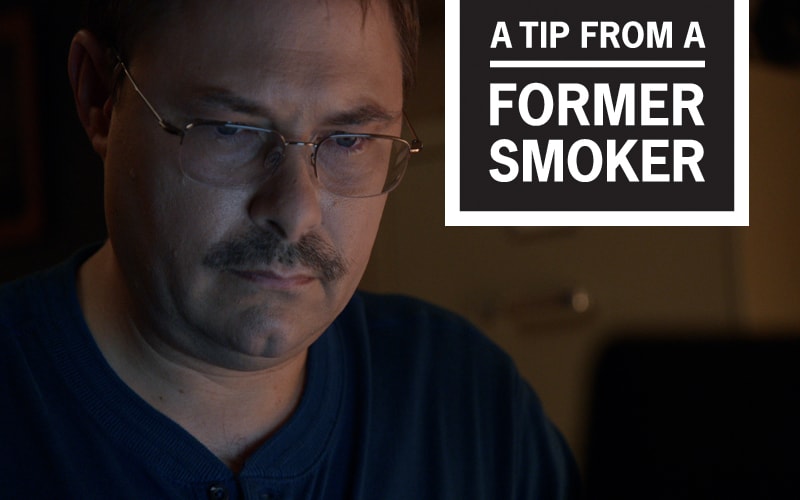
Mark started smoking before joining the Air Force and continued through his service in the Persian Gulf. At age 42, Mark was diagnosed with rectal cancer, one of many cancers that are linked to smoking. He now faced the fight of his life. In this video, Mark says his diagnosis brought everything to a grinding halt.
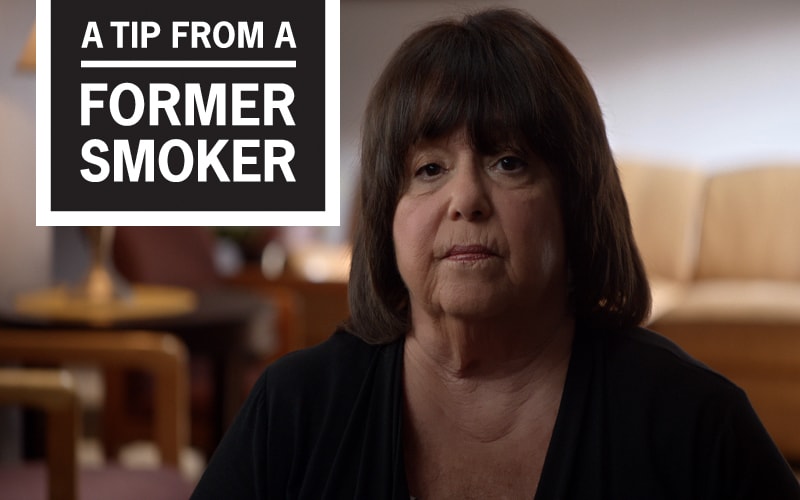
When Marlene started smoking in high school, she never imagined that smoking could lead to a serious eye disease. In this TV ad, Marlene talks about the treatments that keep her from losing more of her vision.
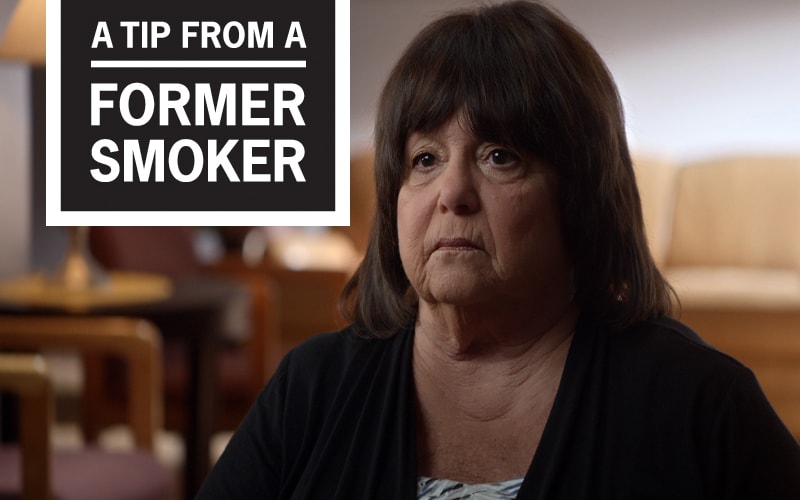
Marlene smoked and started losing her vision at age 56. In this emotional video, she talks about having macular degeneration and her fear of losing her vision.
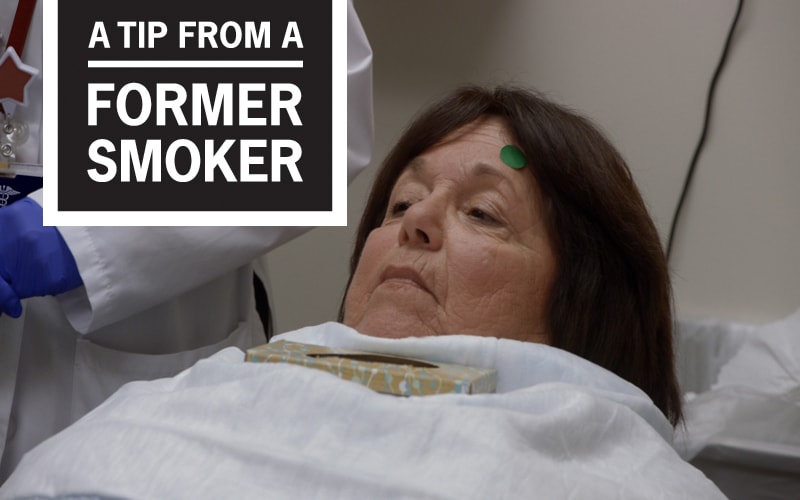
Marlene smoked and developed wet macular degeneration, a disease that can lead to vision loss. Marlene knows that she’s lucky to have found a treatment for her eye disease. But getting shots directly into her eyeballs is still upsetting each time she gets them. In this video, Marlene talks about her monthly treatments.
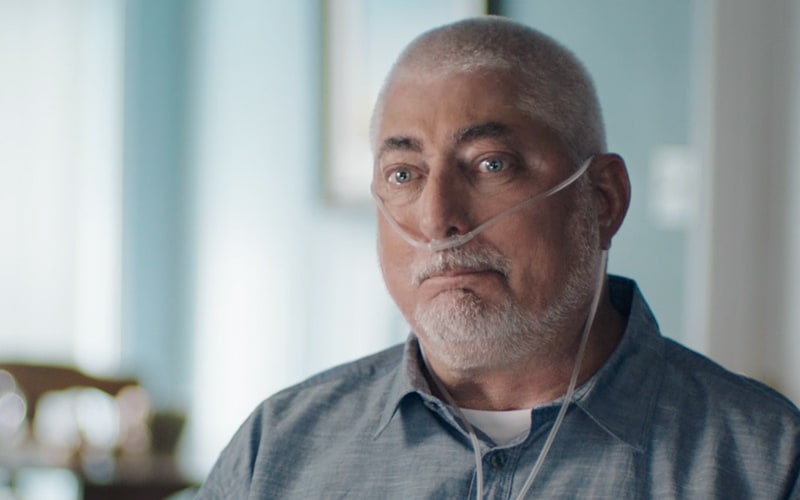
Michael F. lives with a smoking-related COPD. In this video, Michael explains that his wife used to smoke too, but she quit to stay healthy enough to take care of him.
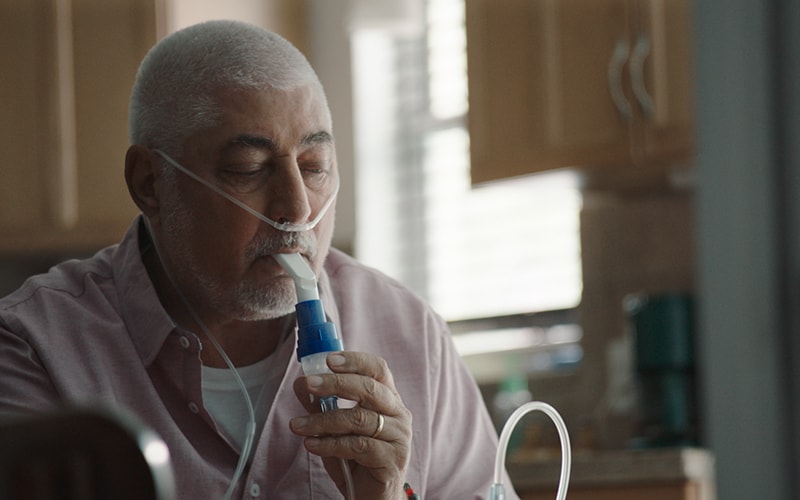
Because he smoked and has COPD, Michael struggles for breath when he walks. He used to tell his co-workers small lies to keep his health condition a secret. Michael now realizes he told himself the biggest lie: that smoking wasn’t dangerous.
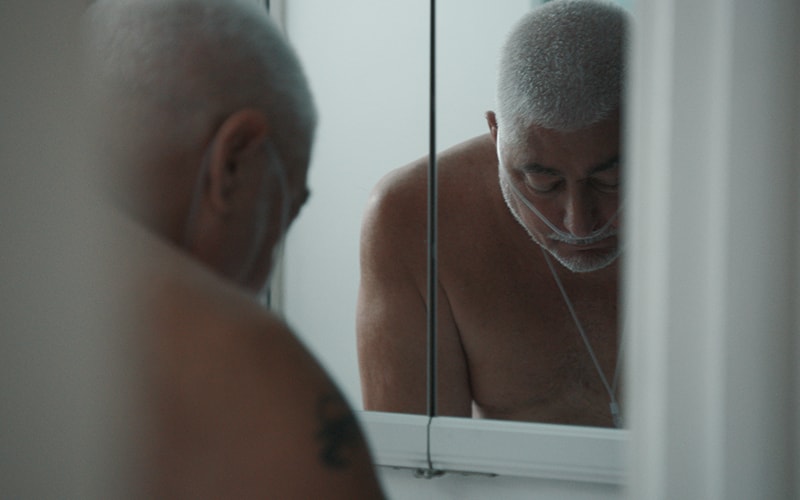
Michael smoked for more than 40 years and developed COPD. Breathing became so difficult that he had to give up many of his favorite activities. He lies awake at night regretting all he’s lost because of smoking.
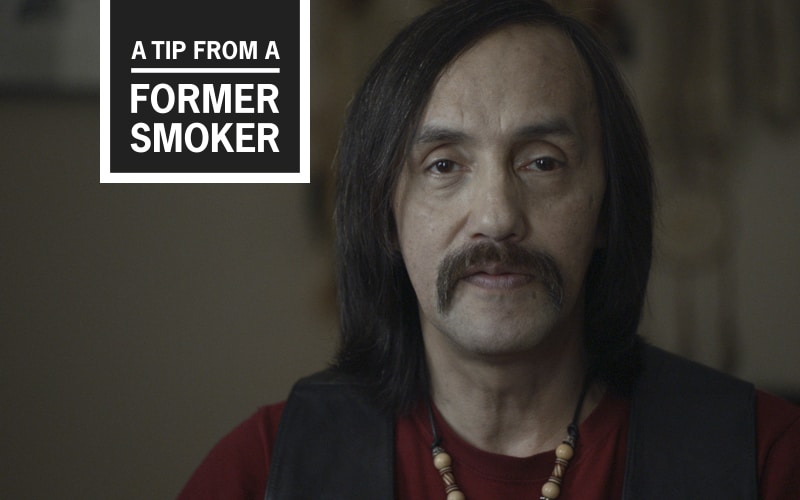
At age 44, Michael was diagnosed with smoking-related chronic obstructive pulmonary disease (COPD). In this video, Michael offers a tip: If your doctor gives you five years to live, like his doctor did, spend it sharing your wisdom and love with your children and grandchildren so they have something to remember you by. Michael died at the age of 64.
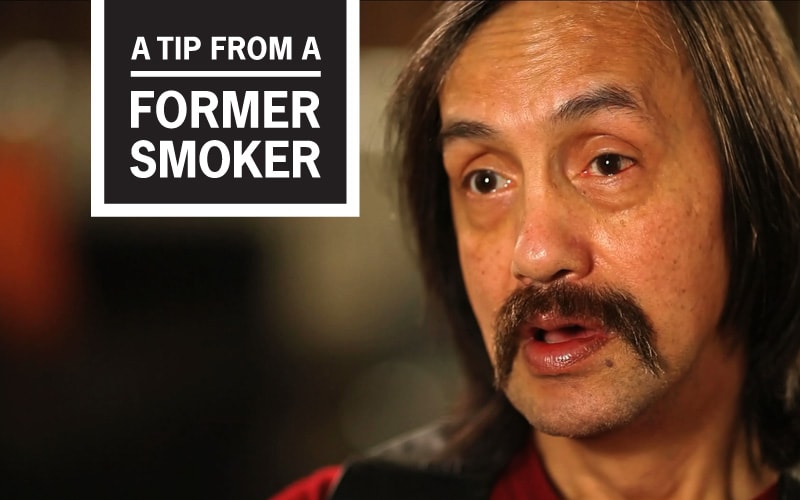
Michael, an Alaska Native, was shocked when doctors found serious lung damage from smoking. He was only 44. In this video, Michael talks about living in constant fear. Smoking gave him COPD, a disease that makes it harder and harder to breathe. He says, “If I get the flu, I can die.”
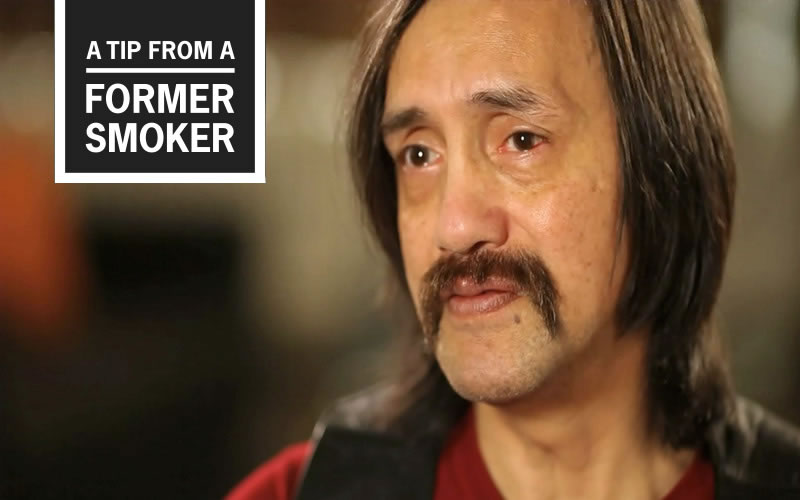
Michael suffered from COPD (chronic obstructive pulmonary disease), which makes it harder for a person to breathe and can cause death. In this video, Michael talks about how he wishes he had never started smoking, and the damage it caused to his lungs. He describes waking up one morning unable to breathe and having to go to the hospital. He also talks about the pain his condition has brought to his family. Michael died at the age of 64.
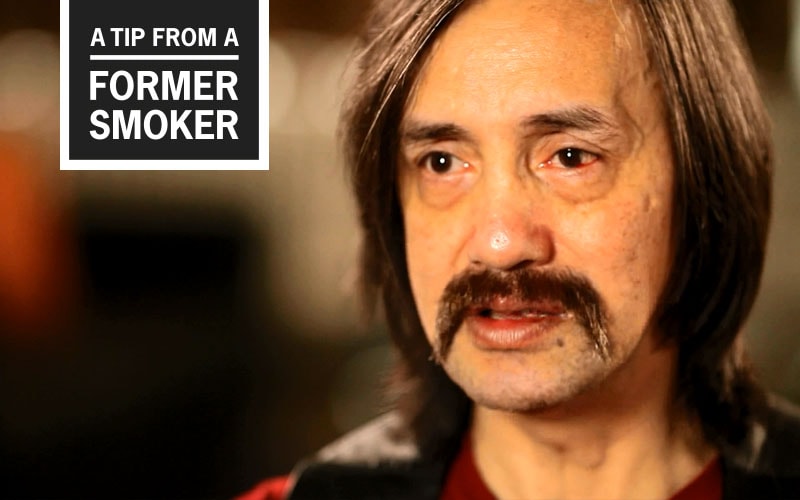
Michael started smoking at age 9, when his sister gave him his first cigarette. In this video, he talks about getting addicted as a child. By age 44, he had a serious lung disease. He says, “It’s my desire that… you won’t come to this place….”
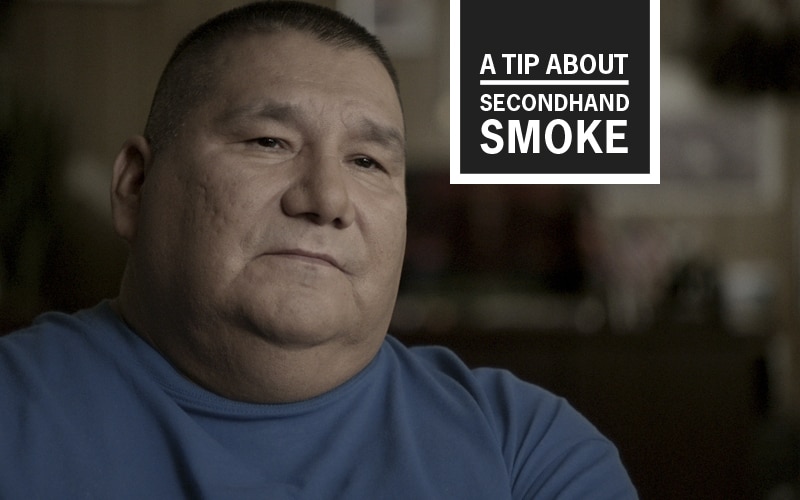
Nathan was surrounded by secondhand smoke every day at work. This caused permanent lung damage and triggered severe asthma attacks. Nathan himself never smoked. In this TV commercial from CDC’s Tips From Former Smokers campaign, Nathan tells viewers that because of his health problems, he could no longer work at the same job or participate in some of his favorite activities. Nathan died at age 54 of illnesses caused by secondhand smoke exposure.
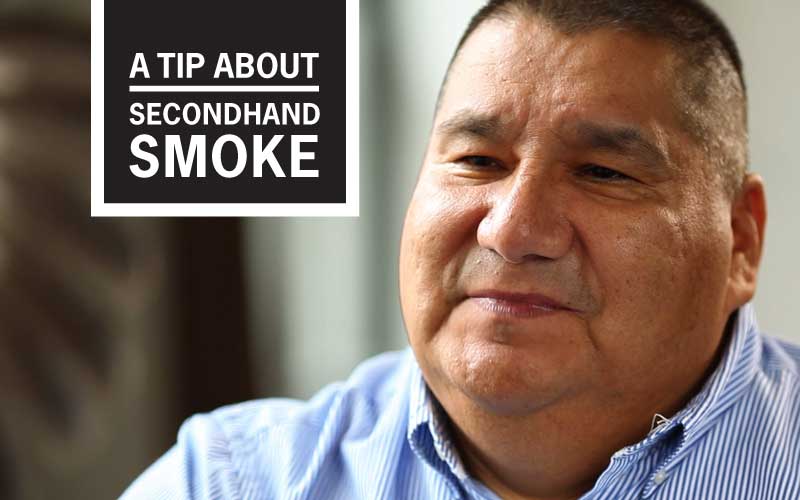
Nathan was Lakota, a member of the Oglala Sioux tribe, and never smoked. However, he worked in a facility where smoking was allowed, and experienced health problems as a result. In this video, Nathan describes his health problems—including asthma—triggered by exposure to secondhand smoke. He had to give up many activities he loved, including tribal dancing, because of damage to his lungs. That damage led to his early death at age 54.
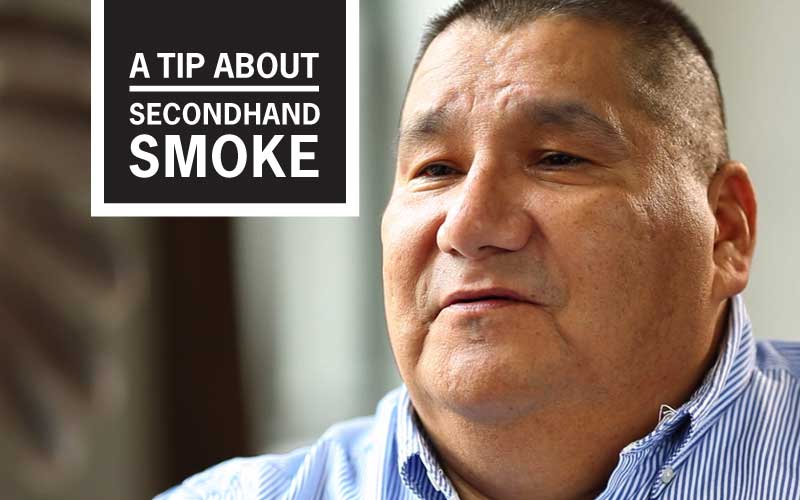
Nathan worked in a smoky casino for 11 years. It robbed him of his health and a favorite pastime—tribal dancing. Although Nathan never smoked, secondhand smoke damaged his lungs. In this video, shot before his death, Nathan talks about how he copes. He died at 54 of illnesses caused by secondhand smoke exposure.
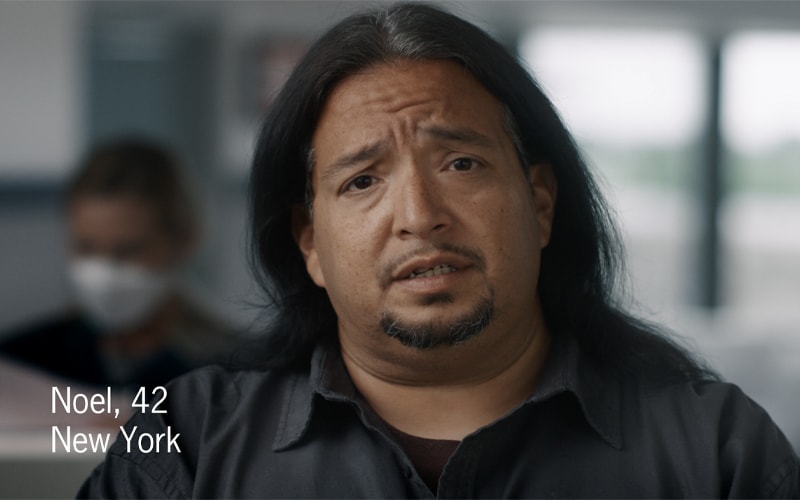
Noel S. smoked two packs of cigarettes a day for more than 20 years. In this ad, Noel shares he did not know it was possible to have a heart attack at age 36, until it happened to him.
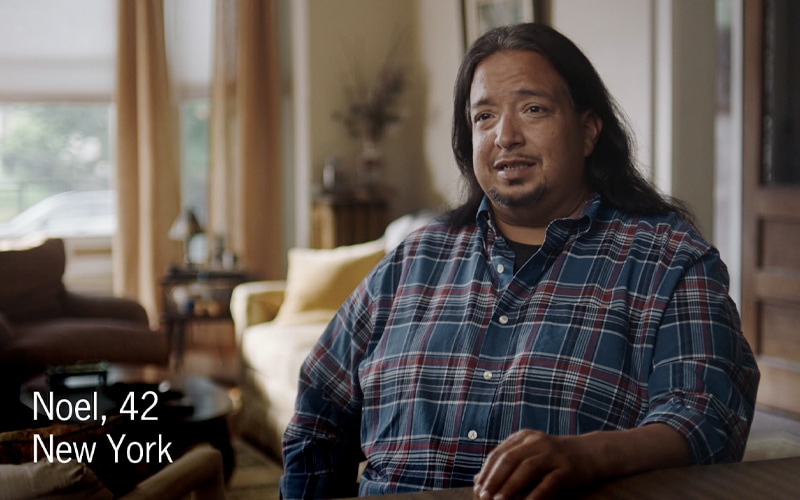
Noel S. saw many ads for menthol cigarettes when he was growing up in Brooklyn. He smoked two packs a day for more than 20 years. In this video, Noel talks about the smoking-related heart attack he had at age 36. He realizes now that menthol cigarettes are just as dangerous as other cigarettes.
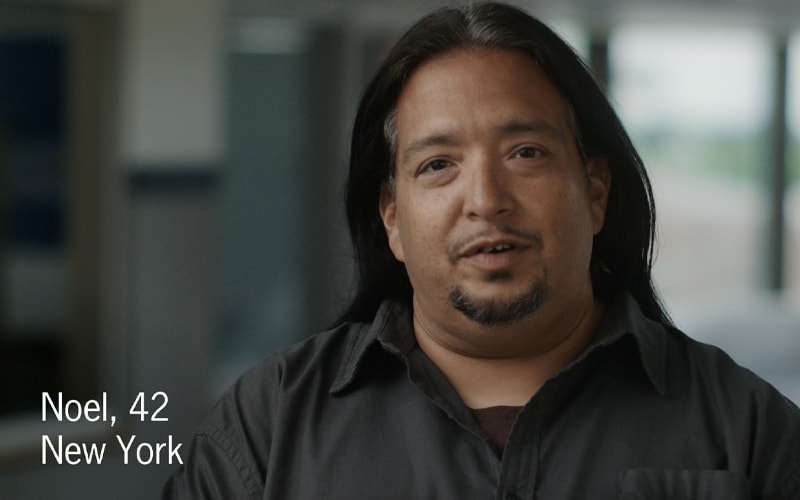
Noel S. started smoking menthol cigarettes at age 13. He liked the flavor of menthol and did not think they were as harsh as other cigarettes. In this video, Noel talks about how addictive menthol cigarettes (menthols) are. Having a heart attack at age 36 made him realize menthol cigarettes are just as dangerous as other cigarettes.

Some of the people featured in the Tips From Former Smokers® (Tips®) campaign used to think cigarettes were their “best friend.” In this ad, they talk about needing a better friend.
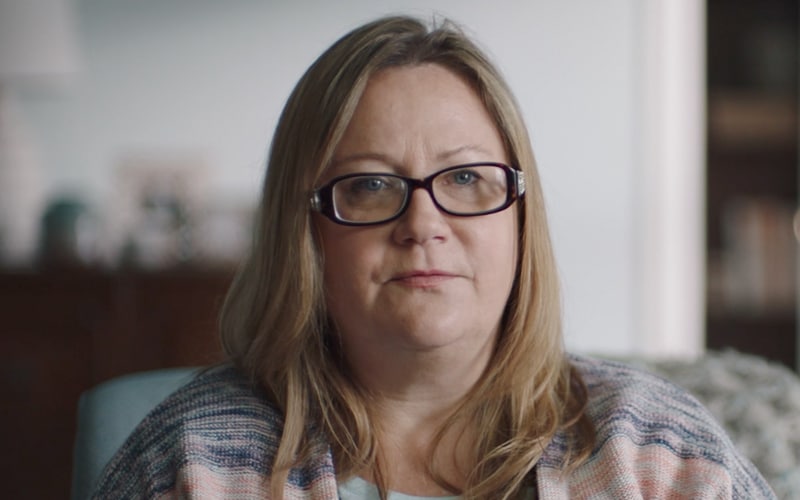
Rebecca C. smoked cigarettes and got Buerger’s disease, which cut off blood flow to her right foot. Only after the surgery to remove all five toes on her right foot did she fully understand how smoking could change her life.
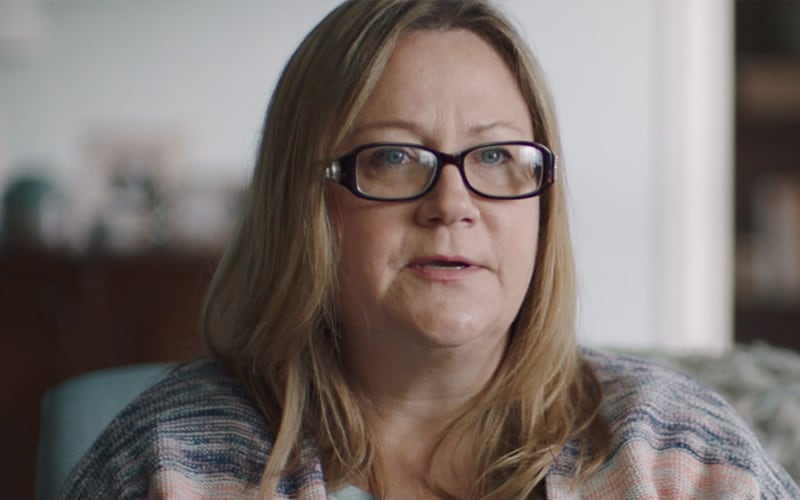
Rebecca C. had all the toes on her right foot amputated because of a disease caused by smoking cigarettes. In this video, Rebecca encourages others to quit smoking before they, too, develop health problems.
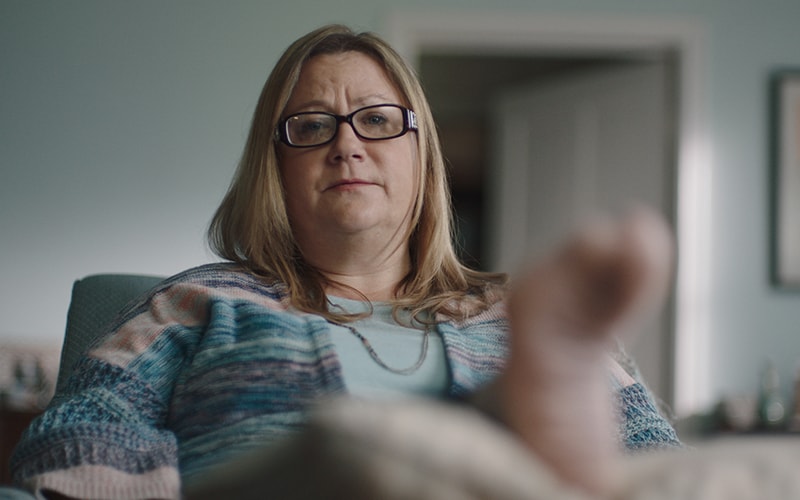
Rebecca didn’t know that smoking cigarettes could lead to Buerger’s disease, which would cause her to have five of her toes amputated. But in her tip, Rebecca lets people know that it can really happen.
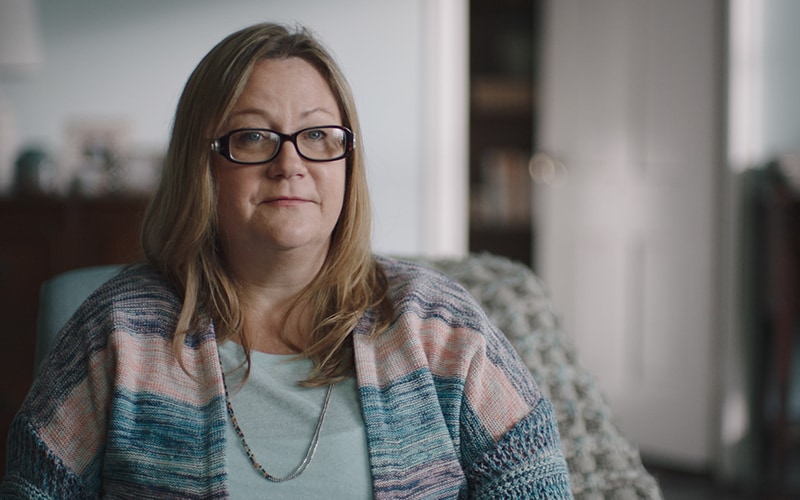
Rebecca had all five toes on her right foot amputated because of Buerger’s disease. The reality only hit her when she sorted her shoes into two piles: those she could still wear and those she couldn’t.
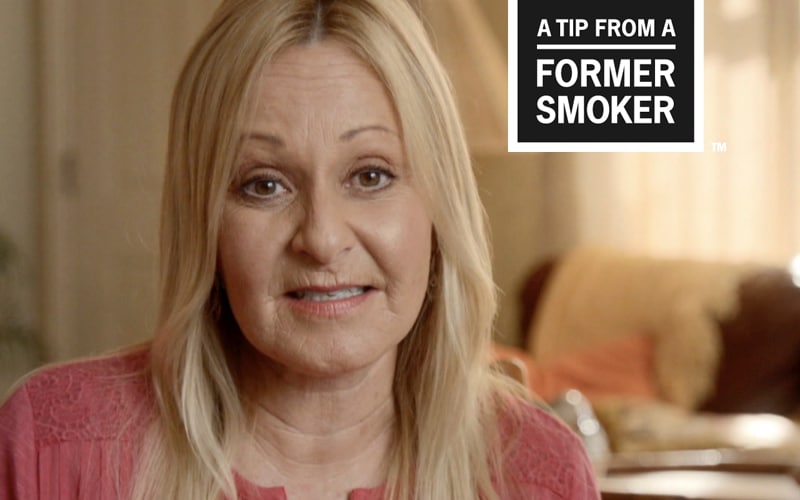
Rebecca started smoking menthol cigarettes at age 16. At age 33, she was diagnosed with depression. Rebecca used cigarettes to help her cope. When she tried to quit and couldn’t, she felt even more depressed and started smoking again. “That was just a vicious, vicious cycle,” she said. In this ad from CDC’s Tips From Former Smokers® campaign, Rebecca talks about how quitting made her feel better – mentally and physically.

What makes a person who smokes quit? In this video, Rebecca reveals that the birth of her grandson motivated her to quit for good. She made other healthy changes too. She sought help for her depression and began to exercise. As a result, she is healthier and happier.
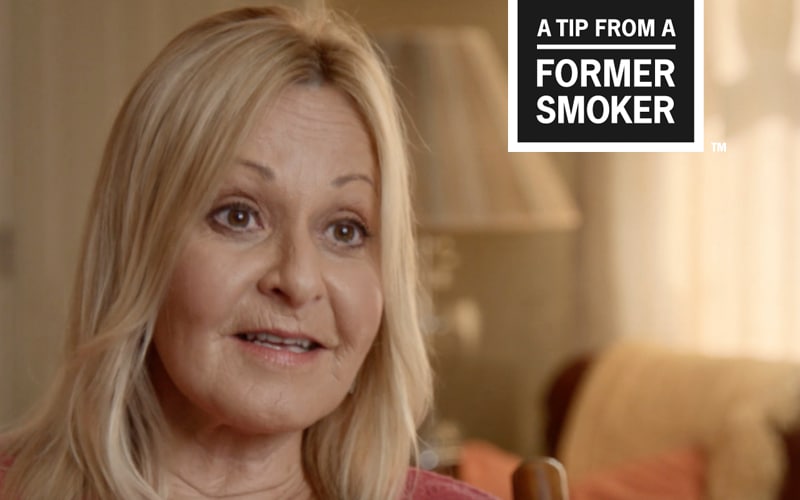
Rebecca struggled with depression. In this video, Rebecca explains how she used to smoke to cope with her depression, but ended up feeling more depressed. She realized that cigarettes weren’t helping her and knew she had to quit. In her words, “It’s about taking control of your life.” She quit and found that there is life beyond smoking.
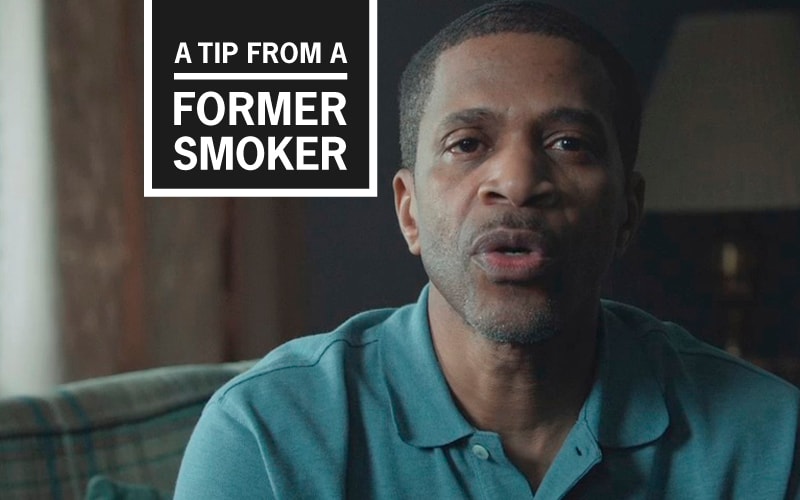
Roosevelt never thought that at 45-years-old he would have a heart attack due to his smoking. In this TV commercial, from CDC’s Tips From Former Smokers campaign, he talks about the impact his smoking-related heart attack has had on his life.
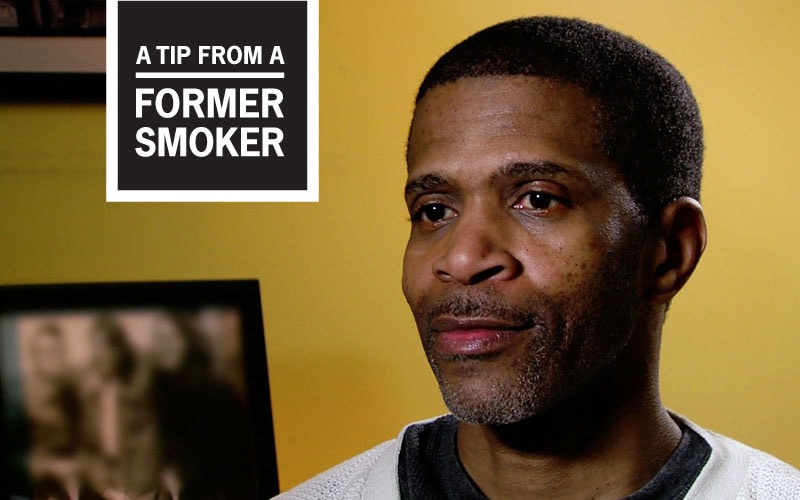
In this video, Roosevelt, who had a heart attack and six artery bypasses as a result of smoking, tells how his health problems prevent him from being active with his children.
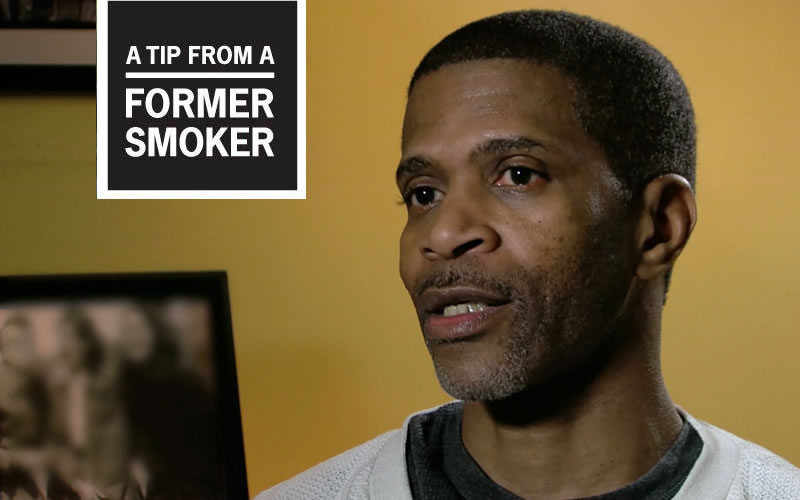
Even when the effects of smoking stare you in the face, it can be hard to stop smoking. Roosevelt talks about how difficult it was for him to quit smoking cigarettes even after having heart bypass surgery.
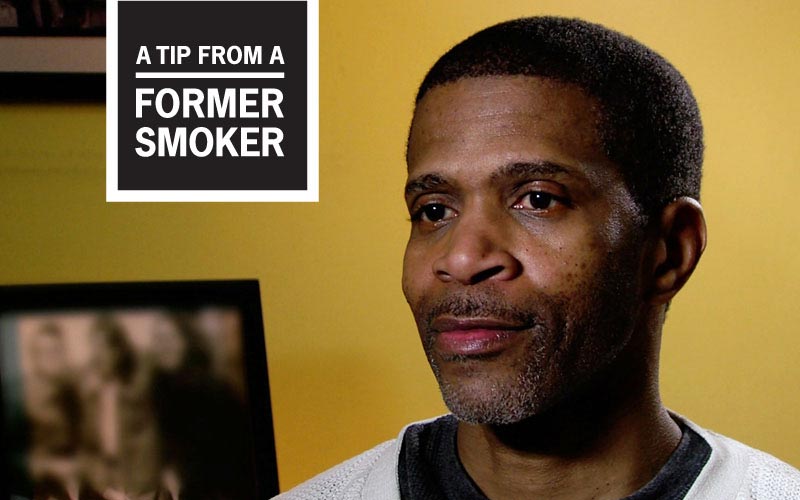
Roosevelt talks about how hard it is to quit smoking, and that people often lie to themselves about the effects of smoking cigarettes. He emphasizes that it’s important to try to stop smoking, both for yourself and for your loved ones.
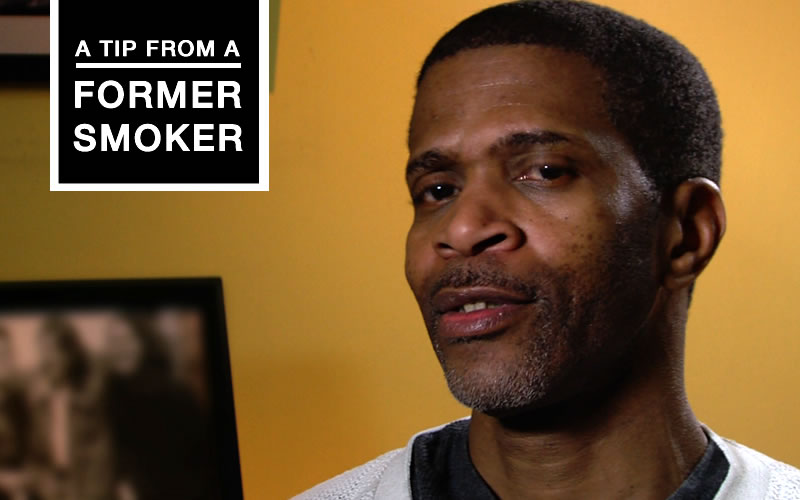
Roosevelt tried to stop smoking cigarettes many times before he succeeded. He talks about smokers who try to fool themselves about their addiction, even though most of them want to quit smoking.
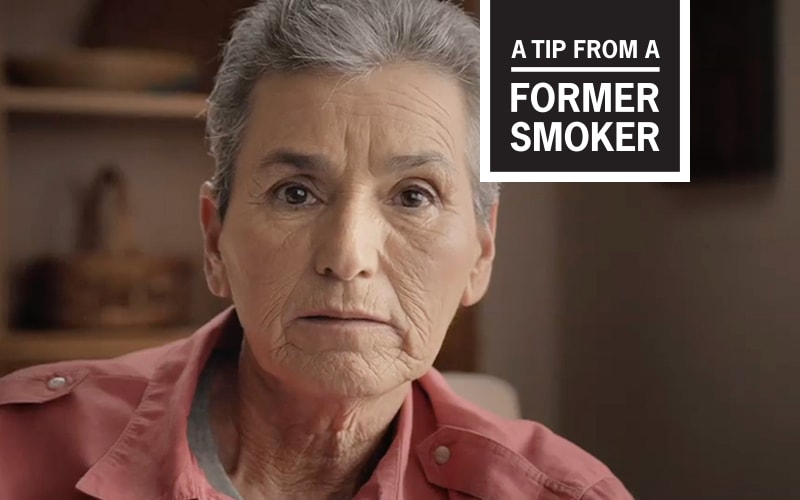
Rose developed lung cancer from smoking cigarettes. In this TV ad, she talks about her lung surgery and difficult recovery. Every day for a month after surgery, Rose prayed that doctors would take out a painful chest tube. Rose’s tip is “Be careful what you wish for.” There was more pain to come when the chest tube finally came out. Rose died in 2015. She was 60.
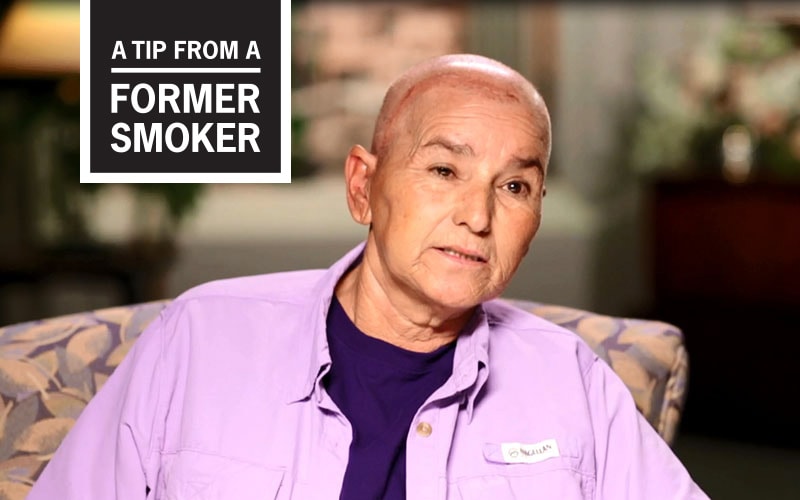
Rose started smoking at 13, and before long, she was spending her lunch money on cigarettes instead of food. Her addiction led to lung cancer—and the fight of her life. In this video, Rose talks about cancer. She never believed it would happen to her. Rose has had surgery twice to fight the disease. At age 60, she died from lung cancer caused by smoking.
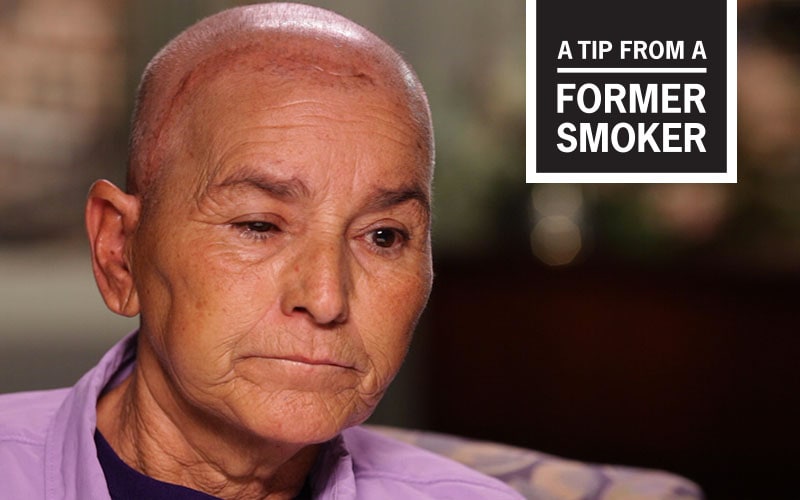
Rose had lung cancer from smoking cigarettes, and she needed very difficult medical treatments. This video explains three keys that helped her get through treatments: family support, faith, and quitting smoking. At age 60, she died from lung cancer caused by smoking.
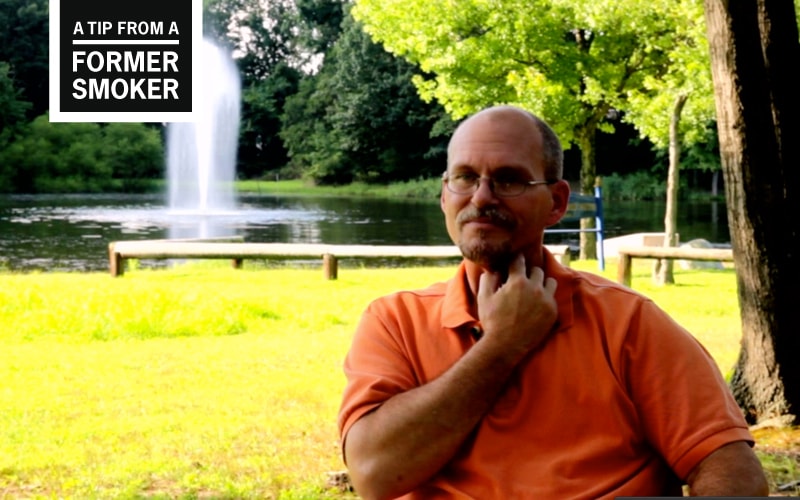
Shane, whose throat cancer was a result of smoking, discussed how he didn’t realize the health complications that could result from tobacco use in this video from CDC’s Tips From Former Smokers campaign. Shane passed away in 2016.
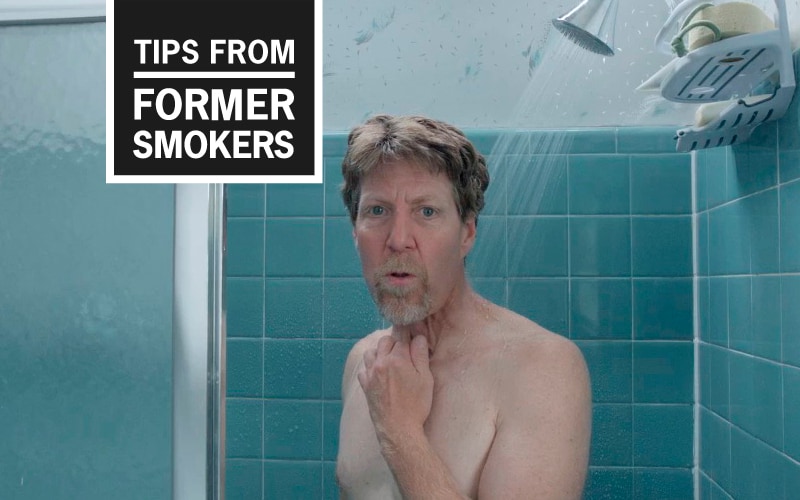
This TV commercial, from CDC’s Tips From Former Smokers campaign, features Shane, Sharon, and Shawn — three people who have stomas as a result of their smoking. They provide tips on how to live with this condition.
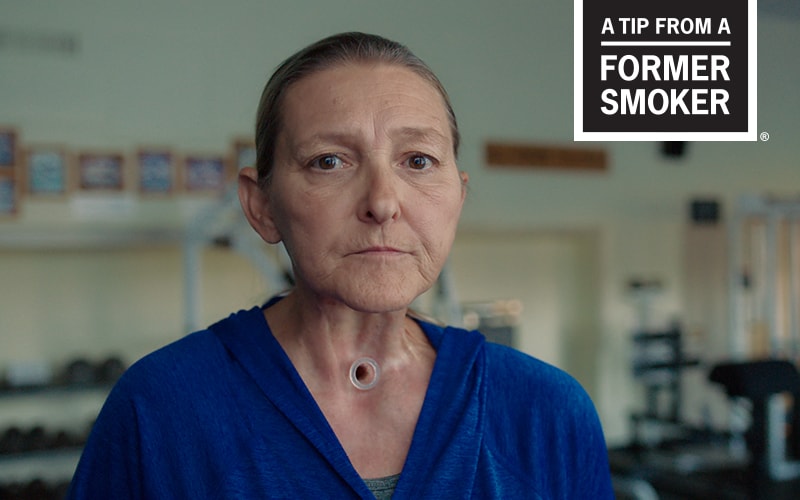
Sharon started smoking menthol cigarettes at age 13. When she was in her late 30s, she was diagnosed with throat cancer and she quit smoking. Despite repeated surgeries, chemotherapy and radiation, doctors had to remove Sharon’s voice box to save her life. In this commercial, Sharon shares that walking every day makes her feel like herself again—almost.
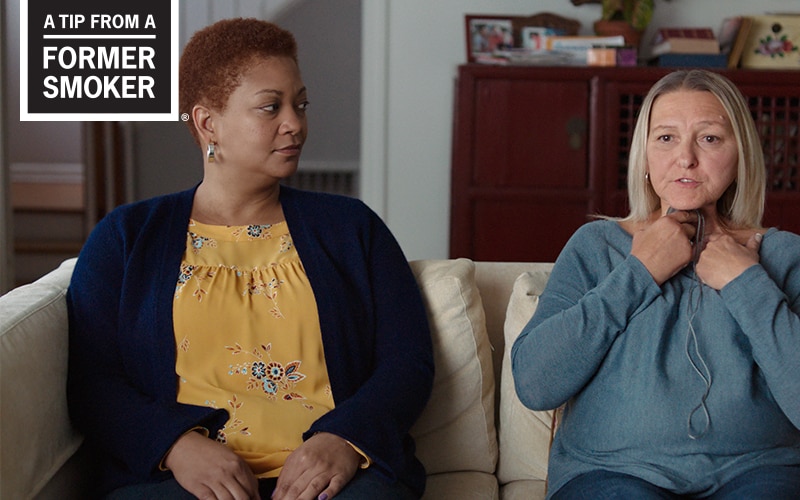
In this commercial, Tiffany encourages people who smoke to get help to quit for good, using proven methods like smoking cessation counseling and nicotine replacement therapy, before they need to have their voice box removed like Sharon.
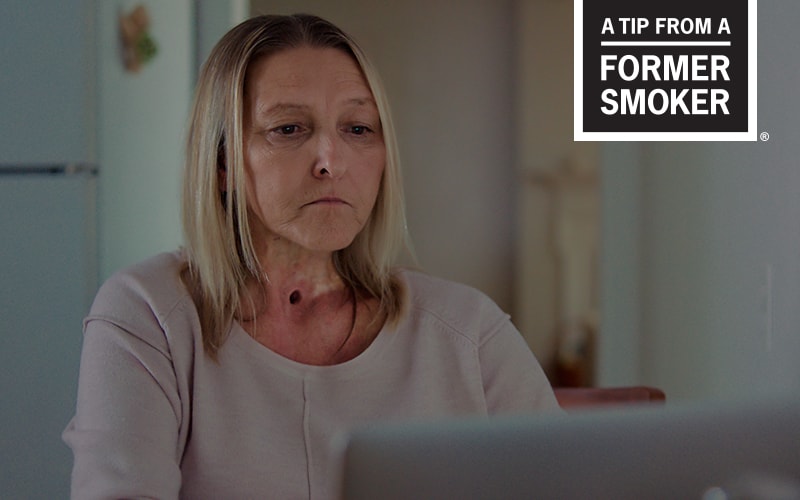
Like many teenage girls, Sharon started smoking in junior high school to fit in. She thought since all her friends were smoking, it was the cool thing to do. Sharon’s 12-year-old granddaughter is in junior high now. In this video, Sharon talks about her fear that her granddaughter will give in to peer pressure and try smoking. She says kids don’t realize that it doesn’t take long to get hooked.
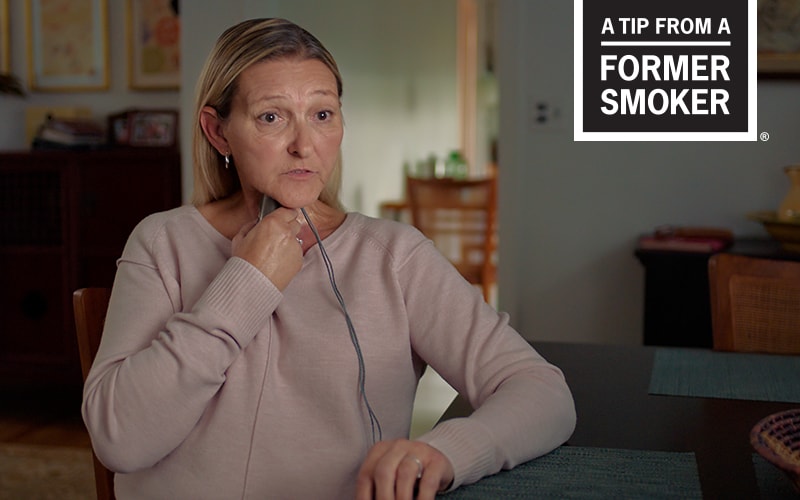
Sharon started smoking at age 13. In her late 30s, she was diagnosed with throat cancer. She was a busy mom with two children. She made their lunches, took them to school, and was active in parent-teacher groups. In this video, Sharon talks about finding a lump in her neck and being told it was cancer. Doctors treated the tumor with chemotherapy and radiation, and tried to save her voice box. But when her symptoms returned a year later, her doctor said removing her voice box was the next step.
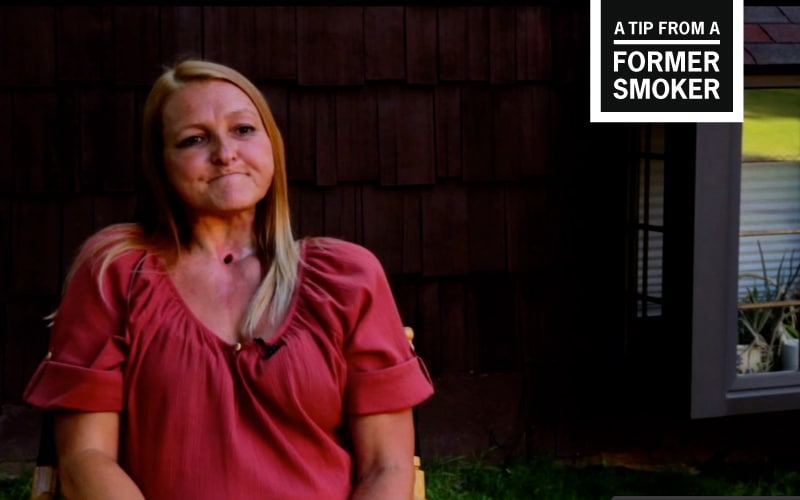
Sharon was diagnosed with throat cancer in her 30s after smoking for many years. She talks in this video about how she never thought smoking would lead to problems at such a young age.

This TV ad from CDC’s Tips From Former Smokers® campaign, features Shane T., Sharon A., and Shawn W. — three people who have stomas as a result of their cigarette smoking. They provide tips on how to live with this condition.
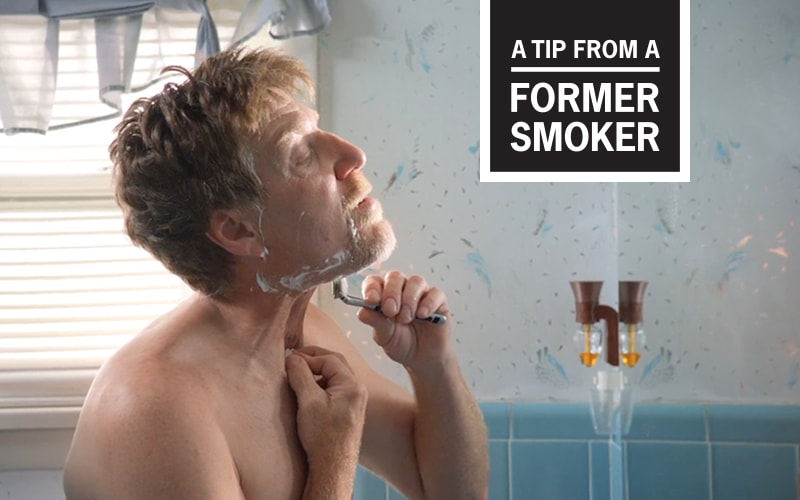
Shawn was 14 years old when he started smoking. In his mid-40s, a chronic cough and laryngitis turned out to be throat cancer. He finally quit smoking—but doctors were unable to save his larynx. In this TV commercial, Shawn talks about the hardships of life with a stoma, a permanent opening in his throat.
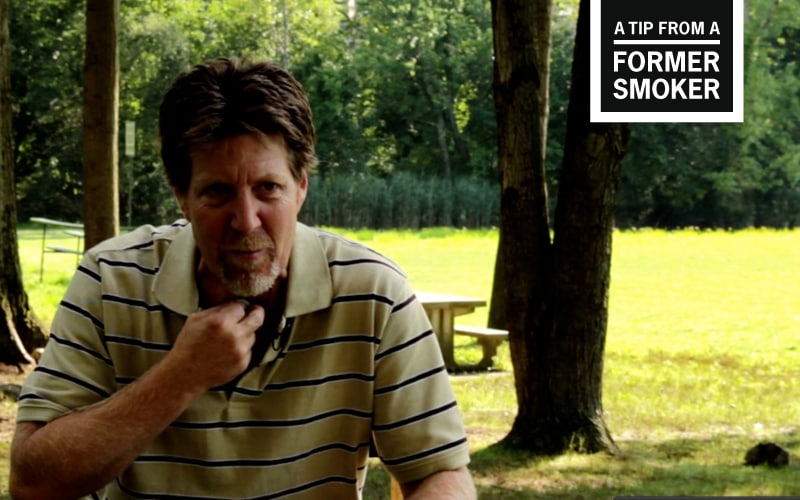
Shawn, diagnosed with throat cancer in his mid-40s, discusses in this video how he never thought he’d get sick as a result of smoking.

In this video, Shawn talks about his addiction to cigarettes and his struggle to quit smoking, even after throat cancer. It wasn’t until his voice box was removed that he quit. He finally realized, “You either quit smoking or you’re going to die.”

This TV ad from CDC’s Tips From Former Smokers® campaign, features Shane T., Sharon A., and Shawn W. — three people who have stomas as a result of their cigarette smoking. They provide tips on how to live with this condition.

Elizabeth B. had numbness in her feet and cramping in her calf that kept getting worse. She learned from her doctor that she had smoking-related peripheral artery disease (PAD). Elizabeth also developed kidney cancer. In this video, Elizabeth and her husband Stephen share how Elizabeth’s health impacts their lives.

Elizabeth B. was 52 and a newlywed when she learned she had smoking-related peripheral artery disease (PAD). She had major surgery to restore blood flow to her legs. Elizabeth offered to end her marriage to her husband, Stephen. She felt he did not sign up for taking care of her full-time. In this ad, Elizabeth shares how Stephen supports her every day.
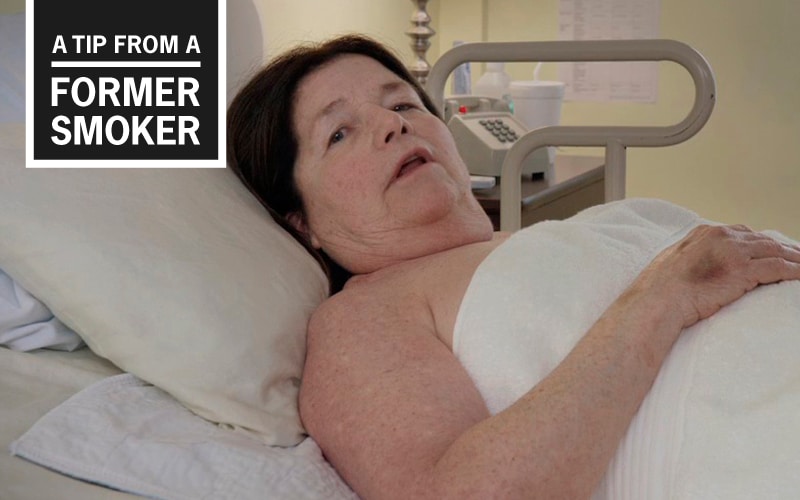
Smoking contributes to one in five strokes in the United States. In this TV commercial for CDC’s Tips From Former Smokers campaign, Suzy talks about losing her independence after smoking caused her to have a stroke.
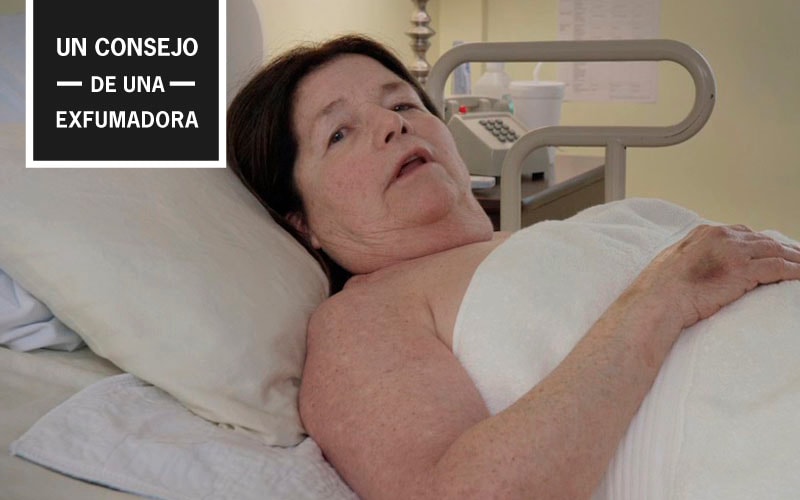
El tabaquismo es un factor que contribuye a uno de cada cinco accidentes cerebrovasculares en los EE. UU. En este anuncio televisivo de la campaña de los CDC Consejos de exfumadores, Suzy cuenta que perdió su independencia después de sufrir un accidente cerebrovascular a causa del cigarrillo.

Tammy W. hid her smoking from everyone. In this ad, Tammy’s tip is, when you are having open-heart surgery, you cannot hide the damage caused by smoking. Everyone can see it.

Tammy W. thought menthol cigarettes were “healthier.” In this ad, Tammy shares that menthol cigarettes are just as good at causing heart disease as any cigarette.

Tammy W. smoked menthol cigarettes. She grew up with a large extended family, many of whom smoked. She also remembers seeing ads on billboards and in magazines that promoted cigarettes. At age 44, Tammy learned she had severe heart disease and needed open-heart surgery. In this video, she encourages people who smoke to quit today.
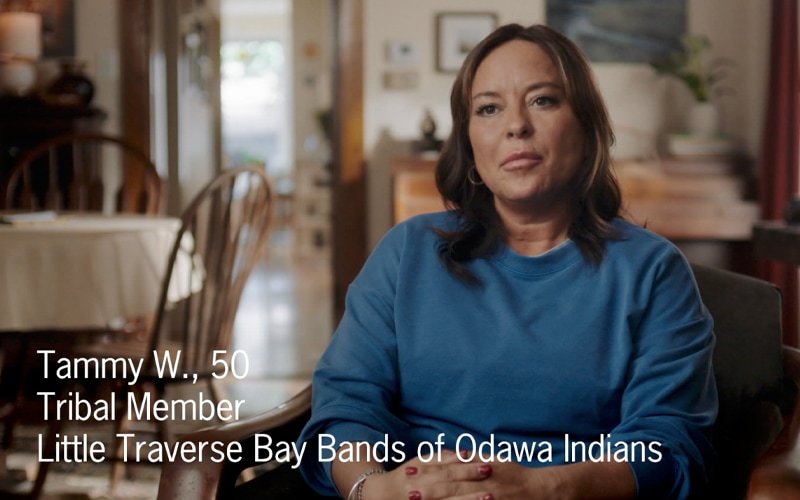
Tammy W. ate a healthy diet and ran every day. She smoked menthol cigarettes because she thought they were less harmful than other cigarettes. In this ad, Tammy talks about her heart disease and open-heart surgery. She shares how the surgery helped her realize there is no such thing as a “healthy” cigarette.
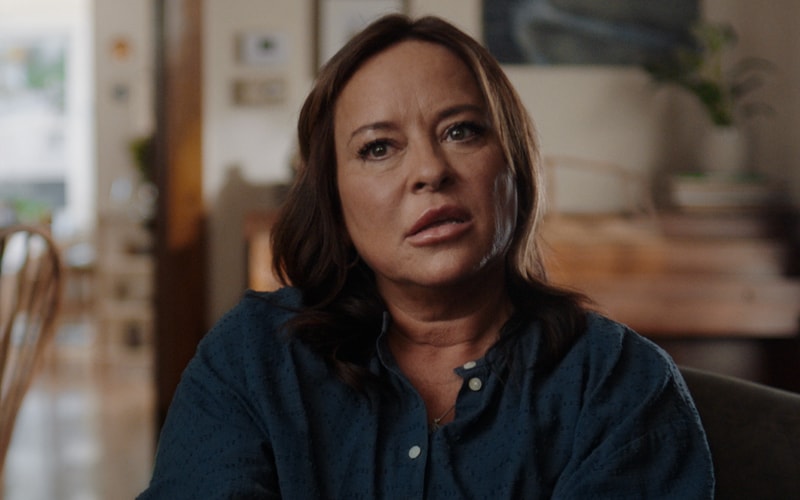
Tammy W. ate healthy and ran marathons. She also smoked for 23 years. At age 44, Tammy learned she had severe heart disease. In this video, Tammy talks about needing to have open-heart surgery. She shares how it felt to see her mother worried at the hospital.
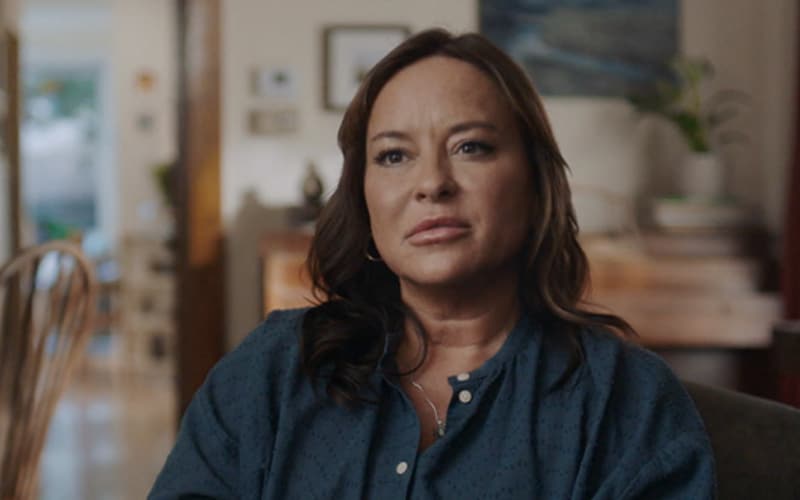
Tammy W. smoked because she thought it helped relieve her stress. In this ad, Tammy shares how smoking cigarettes led to a very stressful procedure – open-heart surgery.

Some of the people featured in the Tips From Former Smokers® (Tips®) campaign used to think cigarettes were their “best friend.” In this ad, they talk about needing a better friend.
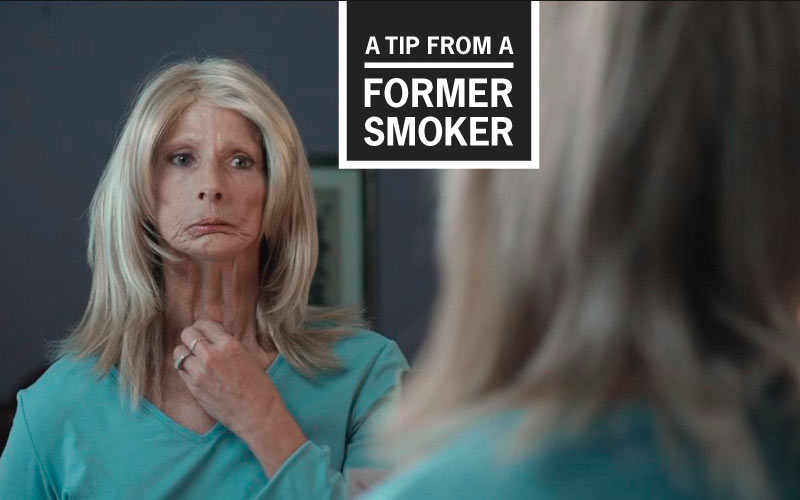
Terrie bravely showed the world how years of smoking cigarettes damaged her health. In this video filmed shortly before her death in 2013, Terrie says she regrets ever picking up a cigarette.

Smoking causes cancer. In this TV commercial for CDC’s Tips From Former Smokers campaign, Terrie talks about how she gets ready for the day after the effects of treatments for throat cancer caused her to lose her teeth and hair, and to have a laryngecotomy.
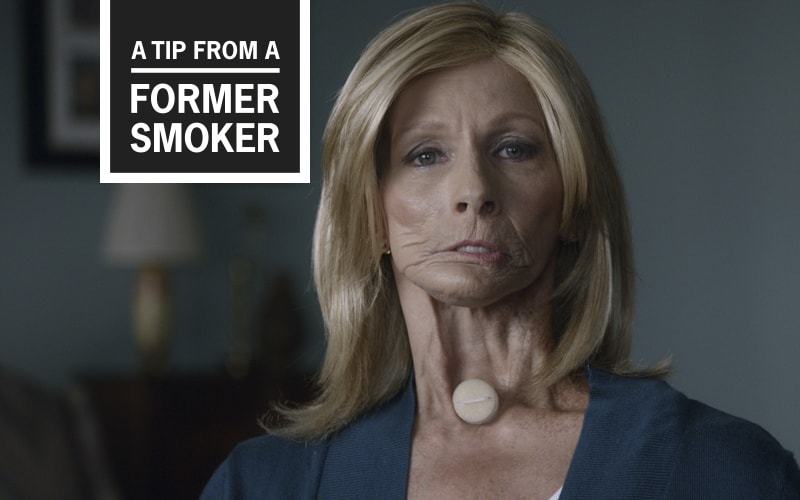
Terrie had cancer as a result of smoking. In a 2012 Tips From Former Smokers TV commercial, Terrie showed us how she got ready for her day. In this video, Terrie shares that the only voice her grandson ever heard was an artificial one. He was born after doctors removed her larynx. Her tip to smokers is to “make a video or recording of yourself reading a children’s storybook and singing a lullaby—before smoking affects your health.”
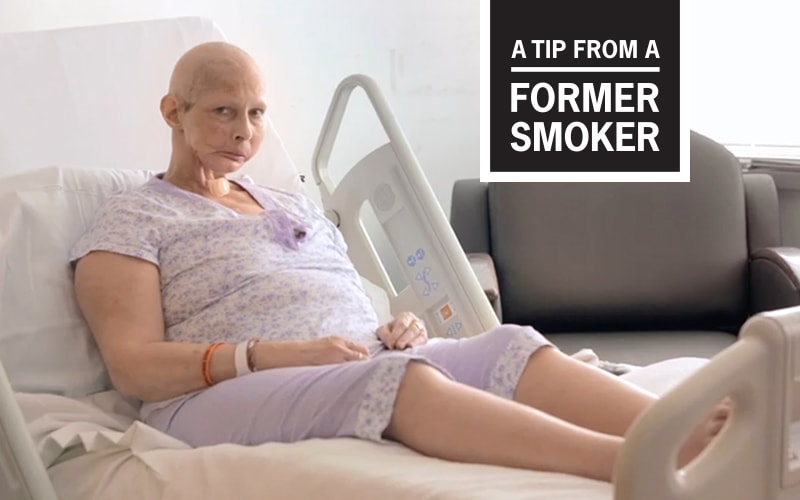
Smoking gave Terrie cancer at age 40. In this TV commercial, she speaks from a hospital bed. She shares a simple message: “Don’t smoke. And if you do smoke, quit. Keep trying until you succeed.” Terrie died shortly after filming this commercial. She was 53.
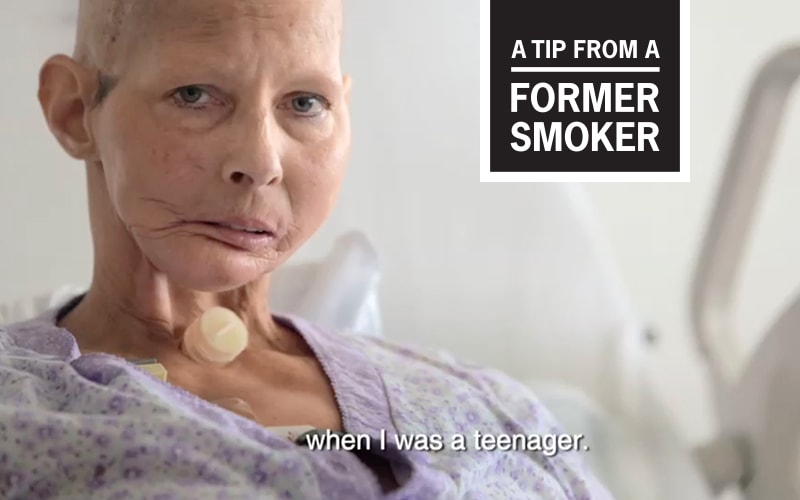
Terrie started smoking in high school to look cool. Soon, cigarettes became her constant companion. Then at age 40, Terrie got cancer from smoking and started years of medical treatments. Shortly before her death, she talked about the heartache of seeing teenagers smoking.
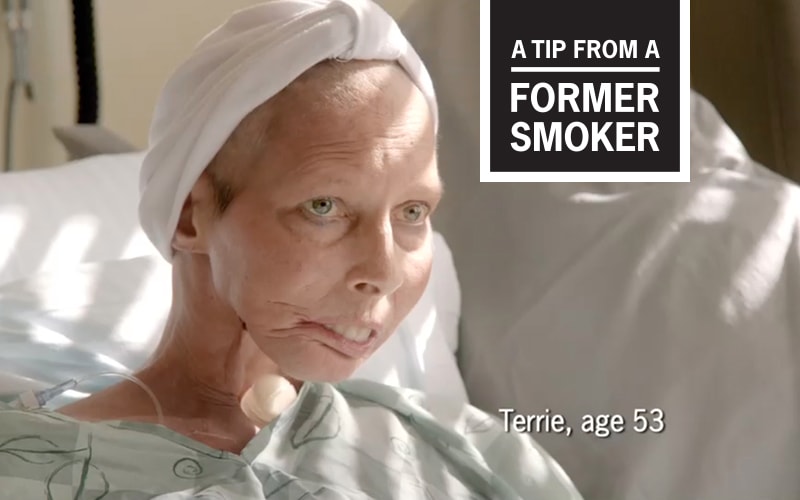
When Terrie was a child, doctors first linked smoking with cancer. As a teen, Terrie started smoking. As she grew older, smoking was linked to more and more diseases. At age 40, Terrie got cancer. In this TV commercial, photos of Terrie put a human face on the millions killed by smoking.
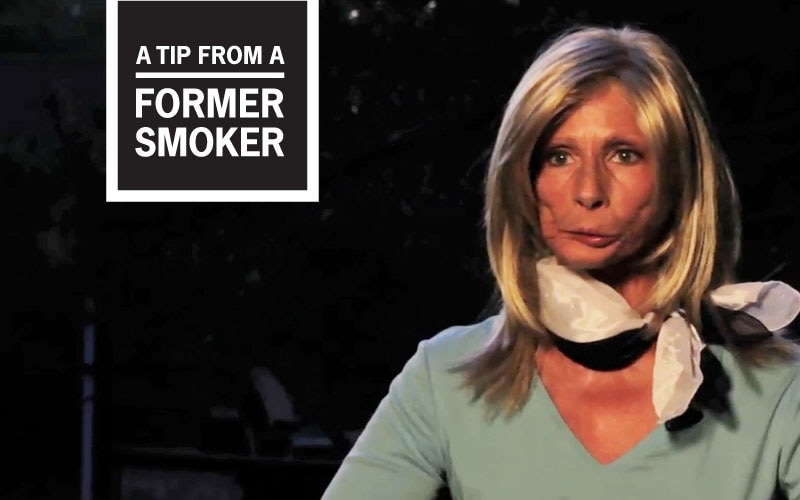
Terrie, diagnosed with throat and oral cancer, describes how her addiction to tobacco and cigarettes had her smoking right up to the front door of the hospital the day of her surgery, and what finally made her quit.
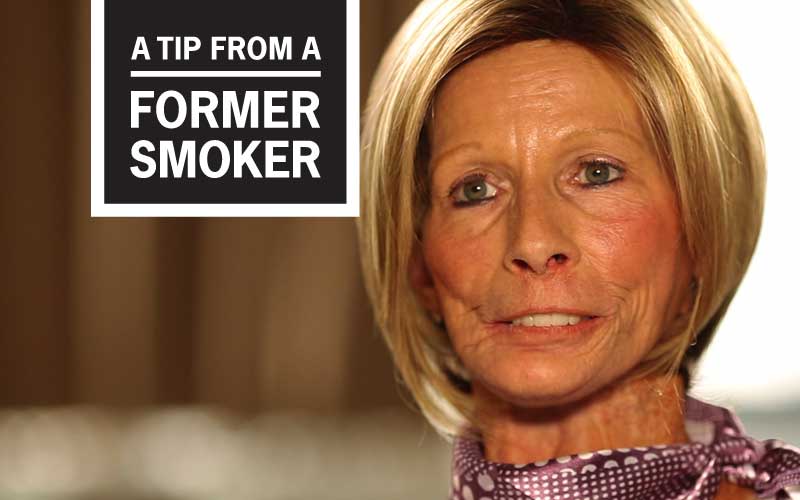
Terrie got shocking news when she was 40. She had cancer from smoking cigarettes. Rather than retreat, Terrie shared her struggles with the world. In this video, Terrie talks about little things she missed because of mouth and throat surgeries–like cooing to a baby. Terrie died of cancer from smoking at age 53.
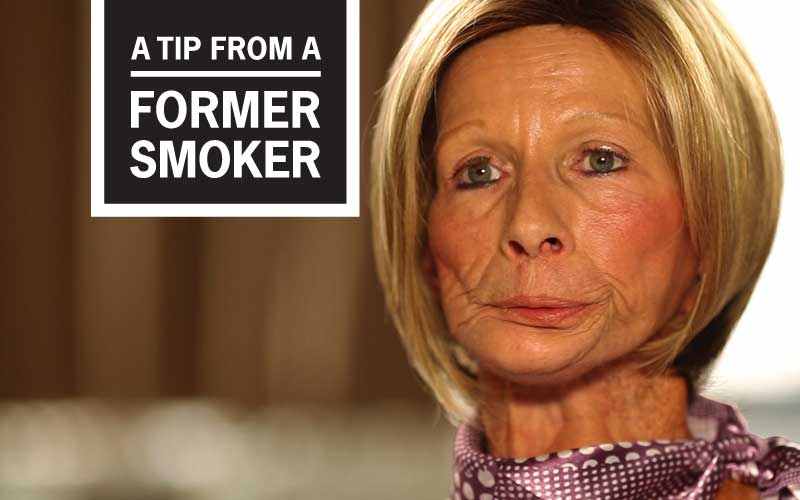
Terrie smoked her first cigarette at 13. In 2000, she found a sore in her mouth that was diagnosed as oral cancer. Later she found out she had throat cancer. In this video, Terrie talks about getting home from the hospital after having surgery and her first realization that she had to quit smoking. She picked up a cigarette, put it in her mouth, and “for the first time, I looked at myself in the mirror, and I thought, ‘Terrie, what are you doing?’”
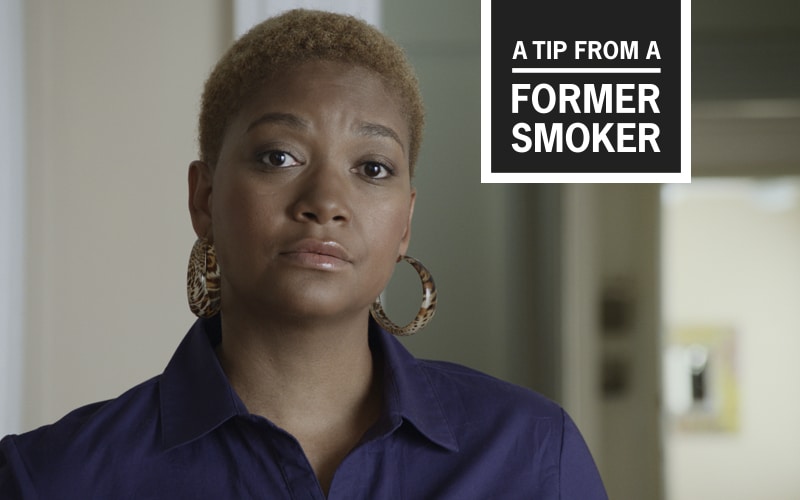
When Tiffany was 16, her mother, who smoked, died of lung cancer . Despite her loss, Tiffany started smoking menthol cigarettes a few years later. In this TV commercial from CDC’s Tips From Former Smokers campaign, Tiffany says she quit smoking at age 34 because she could not bear the thought of missing out on any part of her own daughter’s life.
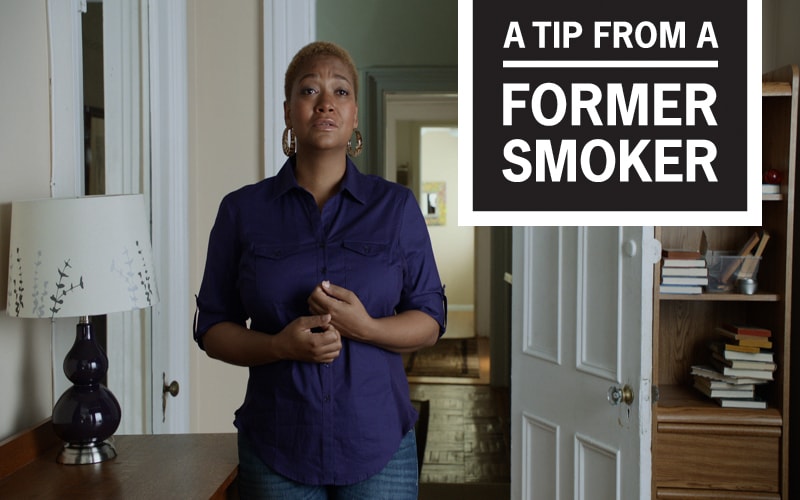
Like many people who smoke, Tiffany had seen an older family member whose health was harmed by smoking, yet she kept buying menthol cigarettes for herself. In this emotional TV ad, Tiffany talks about the “aha” moment that sent her on a different, healthier path for her own life.
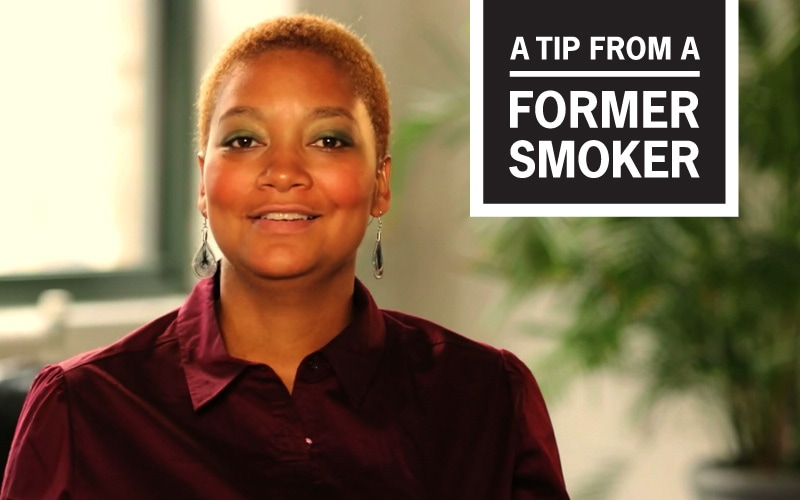
Tiffany had an emotional reason to quit smoking: as a teen, she lost her mother to lung cancer. She knew that restroom breaks and car trips would tempt her, so she carefully planned to quit by using nicotine patches, walking, and friends’ support. In this video, Tiffany talks about how she quit smoking for good.
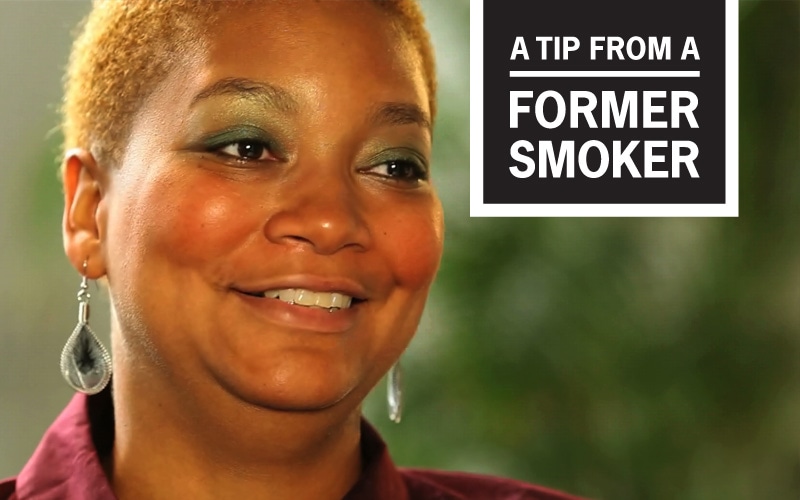
Tiffany didn’t think about all the ways smoking hurt her daily life until she quit. Then life quickly started getting better. Food tasted better. She had more energy and more confidence. And there was one big surprise. In this video she says, “The money I save from not smoking is absolutely great!”
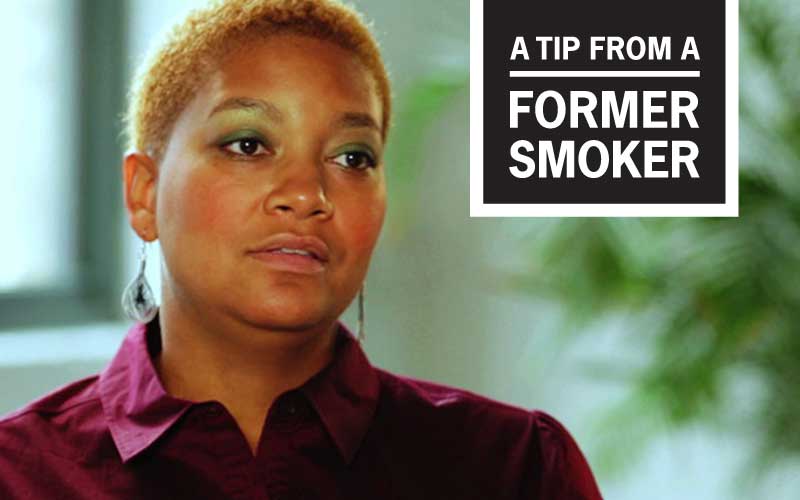
Tiffany talks about losing her mother, who smoked, to lung cancer when Tiffany was just 16 years old. Despite this, Tiffany smoked menthol cigarettes for years before realizing what she might miss in her own daughter’s life. In this video from CDC’s Tips From Former Smokers campaign, Tiffany’s daughter’s, Jaelin, says she cannot imagine living without her mother. Jaelin goes on to tell her mom how proud she is of her for quitting smoking for good.

In this commercial, Tiffany encourages smokers get help to quit for good, using proven methods like smoking cessation counseling and nicotine replacement therapy, before they need to have their voice box removed like Sharon.
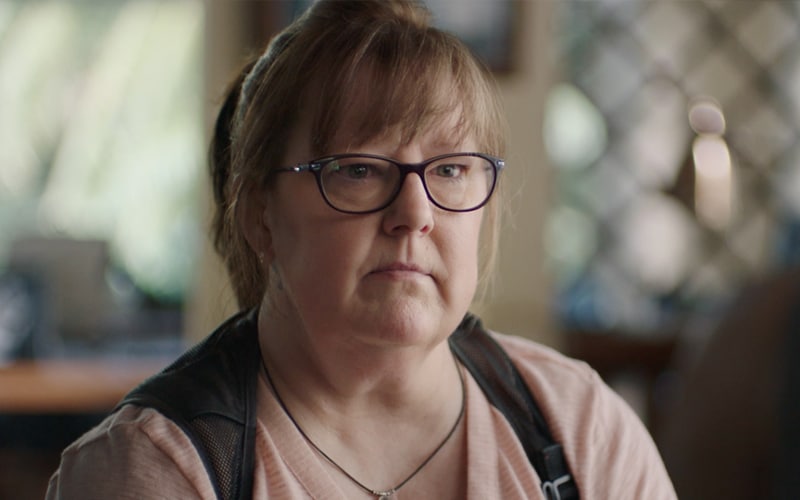
Tonya M. had heart failure from smoking cigarettes. She relied on a surgically implanted heart pump to help move blood through her body. Tonya’s husband and kids became her caregivers, something she never considered when she first started to smoke. She died at the age of 53.
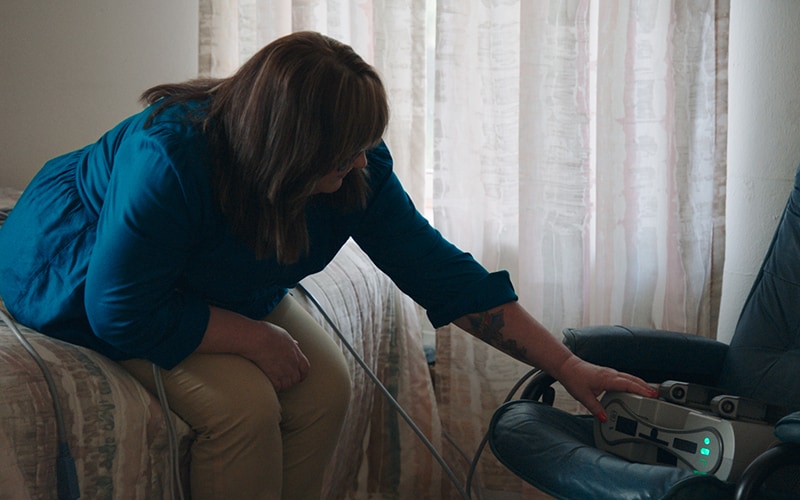
Tonya M. had heart failure because she smoked cigarettes. A battery-operated heart pump inserted in her chest helped blood circulate through her body. At night, she plugged the pump into an outlet. Tonya died at the age of 53.
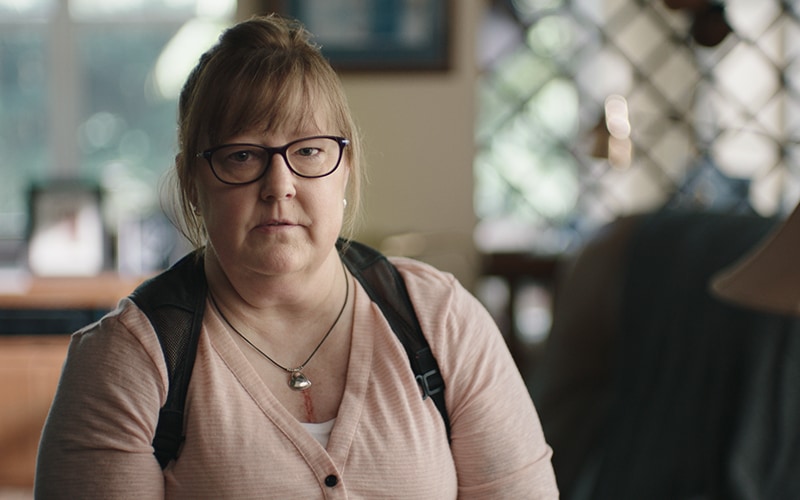
At only 38 years old, Tonya had heart failure because she smoked. She had open heart surgery and relied on a battery-operated device to pump blood through her heart. Tonya reminded us that heart disease can happen at any age if you smoke. She died at the age of 53.
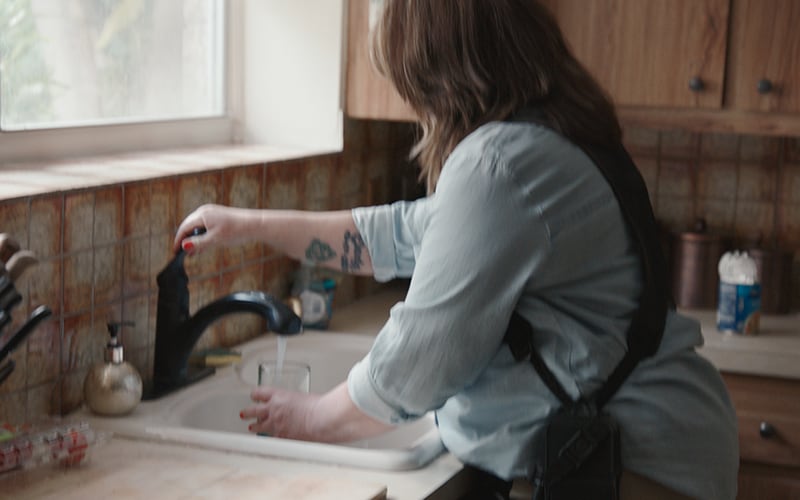
At age 38, Tonya was diagnosed with heart failure from smoking. She relied on a battery-powered device inserted in her body to help push blood through her heart. She used to take care of her husband and kids, but they became her caregivers when her health declined. Tonya died at the age of 53.

You can quit smoking! This inspiring TV ad features Beatrice R., James F., and Wilma S. — three people who successfully quit smoking after many years. They share their practical tips on how to quit for good in this commercial from CDC’s Tips From Former Smokers campaign.
Ellie N.

Ellie was in her mid-30’s when she had her first asthma attack — triggered by exposure to secondhand smoke. She loved her job as a bartender, but began to dread going to work. In this video, Ellie says, “I could feel my lungs getting tighter. I knew I couldn’t be around the smoke or I was going to die, or something bad was going to happen to me.” Eventually Ellie quit her job for the sake of her health, but feels everyone deserves to have a safe and healthy work environment.

Ellie never smoked, but she developed asthma from secondhand smoke exposure. She worked in bars that served the LGBQ communities and noticed lots of smokers. Ellie loved the work but quit to save her health. In this video, she talks about smoking and how people define their personal identity.
Jamason C.

Jamason and his mother Sherri talk about the day Jamason had to go to the hospital after having a severe asthma attack at work, triggered by exposure to secondhand smoke. Recounting the drive to the hospital, Sherri said, “I just held his hand, and told him just squeeze it every now and then so I know he’s breathing.” In this video, Jamason admits that after such a severe attack, he was afraid to leave the hospital because he knew that outside, in the real world, people smoke.

Jamason had a severe asthma attack triggered by secondhand smoke when he was 16. He spent four days in the hospital, gasping for breath. In this video, he talks about asking people not to smoke near him, …because that is my life.
Jessica S.

Exposure to secondhand smoke can trigger a life-threatening asthma attack. This commercial, Jessica, a mother with a young son who suffers from asthma attacks due to secondhand smoke exposure. In her tip, she urges people not to be shy to tell people not to smoke around kids.
Nathan M.

Nathan was surrounded by secondhand smoke every day at work. This caused permanent lung damage and triggered severe asthma attacks. Nathan himself never smoked. In this TV commercial from CDC’s Tips From Former Smokers campaign, Nathan tells viewers that because of his health problems, he could no longer work at the same job or participate in some of his favorite activities. Nathan died at age 54 of illnesses caused by secondhand smoke exposure.

Nathan was Lakota, a member of the Oglala Sioux tribe, and never smoked. However, he worked in a facility where smoking was allowed, and experienced health problems as a result. In this video, Nathan describes his health problems—including asthma—triggered by exposure to secondhand smoke. He had to give up many activities he loved, including tribal dancing, because of damage to his lungs. That damage led to his early death at age 54.

Nathan worked in a smoky casino for 11 years. It robbed him of his health and a favorite pastime—tribal dancing. Although Nathan never smoked, secondhand smoke damaged his lungs. In this video, shot before his death, Nathan talks about how he copes. He died at 54 of illnesses caused by secondhand smoke exposure.
Brandon C.

Brandon describes losing his foot, fingers, and other body parts to Buerger’s disease, a disorder linked to smoking, and testifies to the strength of addiction in this video from CDC’s Tips From Former Smokers campaign.

Smoking causes Buerger’s disease, which can lead to amputations. In this TV ad, Brandon and Marie talk about living with the effects of Buerger’s disease as part of CDC’s Tips From Former Smokers campaign.
Marie W.

In this video, Marie talks about discovering she had Buerger’s disease, an illness caused by smoking, and its effects on her life.
Rebecca C.

Rebecca C. smoked cigarettes and got Buerger’s disease, which cut off blood flow to her right foot. Only after the surgery to remove all five toes on her right foot did she fully understand how smoking could change her life.

Rebecca C. had all the toes on her right foot amputated because of a disease caused by smoking cigarettes. In this video, Rebecca encourages others to quit smoking before they, too, develop health problems.
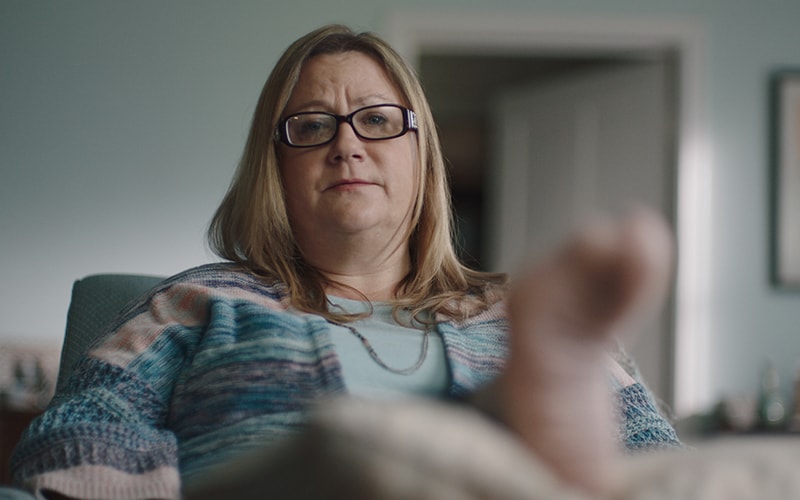
Rebecca didn’t know that smoking cigarettes could lead to Buerger’s disease, which would cause her to have five of her toes amputated. But in her tip, Rebecca lets people know that it can really happen.

Rebecca had all five toes on her right foot amputated because of Buerger’s disease. The reality only hit her when she sorted her shoes into two piles: those she could still wear and those she couldn’t.

This TV ad from CDC’s Tips From Former Smokers® campaign, features Shane T., Sharon A., and Shawn W. — three people who have stomas as a result of their cigarette smoking. They provide tips on how to live with this condition.
Andy A.

Andy A. was diagnosed with throat cancer from smoking. This began his complex treatment and recovery journey, including three surgeries to remove the cancer, using muscle and skin from his legs to rebuild his throat. Andy now speaks with the help of an electrolarynx. He also needs full-time care from his wife, Debra B. In this ad, he shares that cigarettes took so much from him, including his independence. Andy’s tip is don’t give anymore to cigarettes – otherwise they will keep taking until there is nothing left of you.

Andy A. and Debra B. enjoyed a wonderful life together — going out to eat, singing karaoke, and having family over to their house. Their lives changed after Andy learned he had throat cancer from smoking. Debra had to close her business to focus on taking care of him. In this video, Andy and Debra talk about how smoking-related throat cancer changed their lives and relationship.
Brian H.

Brian started smoking before he was a teenager. He had a heart attack at 35 and had serious health problems for the rest of his life as a result of smoking. In this commercial, Brian says you probably know someone who has had a heart attack, chronic obstructive pulmonary disease (COPD), heart bypass surgery, a heart transplant, lung cancer, or part of their lung removed from smoking. He then shares that he has suffered all six. Brian died at age 68 after suffering from smoking-related health problems for more than 30 years.
Christine B.

After years of smoking cigarettes, Christine lost her teeth and half her jaw to oral cancer. In this video, Christine talks about the toll tobacco use can take, not only on the person who uses it, but also on their family and friends.

When Christine lost her teeth and jaw to oral cancer after years of smoking cigarettes, her teenage children had to step up and take on adult responsibilities. In this video, Christine speaks about how her tobacco addiction robbed her kids of their childhood.

Christine began smoking cigarettes in high school to fit in. She became addicted and continued to smoke menthol cigarettes for many years. At 44, she was diagnosed with oral cancer. She lost her teeth due to radiation treatments and had to have half of her jaw removed after the cancer came back twice. In this commercial, Christine talks about how oral cancer treatments and reconstructive surgery have affected her appearance.

Christine started smoking cigarettes in high school to fit in, but she never thought she smoked enough to be a “real smoker.” She was diagnosed with oral cancer at age 44, and lost her teeth and half of her jaw due to cancer. Christine says if you think this could never happen to you, think again: “If you smoke, you’re a smoker.”

Christine started smoking in high school to fit in and continued to smoke menthol cigarettes for many years. She was diagnosed with oral cancer in her early 40s. She lost her teeth and had half of her jaw removed. In this video, Christine talks about the moment when she finally realized the effects of smoking—year after year and cigarette after cigarette—and decided to quit.

In this video, Christine talks about how her smoking affected her children, particularly her 17-year-old son. While she was going through treatment, she says her son had to become head of the household instead of getting to be a kid.

In this video, Christine talks about the things she did before her oral cancer surgery to make sure her children would have a happy life if she died. She wrote letters filled with life lessons, spent quality time with them to create happy memories, and held a big party filled with supportive friends who could be there to help her children in the event of her death.
Elizabeth B.

Elizabeth B. smoked and learned from her doctor that she had smoking-related peripheral artery disease (PAD). Elizabeth also developed kidney cancer. Elizabeth’s tip is, quit now. The sooner you quit, the better.

Elizabeth B. thought smoking menthol cigarettes made her look sophisticated. At age 52, she learned she had smoking-related peripheral artery disease (PAD) and had major surgery to restore blood flow to her legs. In this ad, Elizabeth shares her tip, which is that smoking could give you PAD – as she says, “That’s a sophisticated way of saying you are going to have a hard time walking for the rest of your life”.

People told Elizabeth B. she could die if she continued smoking menthol cigarettes. She thought, “at least I’ll have fun.” In this ad, Elizabeth shares that living with smoking-related diseases is no fun at all.

Elizabeth B. had numbness in her feet and cramping in her calf that kept getting worse. She learned from her doctor that she had smoking-related peripheral artery disease (PAD). Elizabeth also developed kidney cancer. In this video, Elizabeth and her husband Stephen share how Elizabeth’s health impacts their lives.

Elizabeth B. was 52 and a newlywed when she learned she had smoking-related peripheral artery disease (PAD). She had major surgery to restore blood flow to her legs. Elizabeth offered to end her marriage to her husband, Stephen. She felt he did not sign up for taking care of her full-time. In this ad, Elizabeth shares how Stephen supports her every day.

Some of the people featured in the Tips From Former Smokers® (Tips®) campaign used to think cigarettes were their “best friend.” In this ad, they talk about needing a better friend.
Fred W.

Fred W. was diagnosed with throat cancer from smoking when his kids were very young. He now speaks with the help of a laryngeal implant. Fred still wanted to do all the same activities with his kids that his dad did with him, like fishing. But, he has not figured out how to have a conversation and fish at the same time with his laryngeal implant.

Fred W. was diagnosed with throat cancer from smoking. He had surgery to remove the cancer. He now has a stoma (a surgically created opening) in his throat that allows him to breathe and a laryngeal implant that allows him to speak. If you think cigarettes are expensive, here is Fred’s tip – after treatment for throat cancer from smoking, with all the hospital stays and surgeries, you realize the true cost is a lot more.

Fred W. was diagnosed with throat cancer from smoking. He had to give up activities he cherished, such as playing his favorite musical instrument, the saxophone. In this video, he talks about the things he had to give up because of smoking-related disease.

Fred W. had throat cancer from smoking cigarettes. He had to give up activities he cherished, such as playing his favorite musical instrument, the saxophone. Fred also had to give up things like spending time at the beach. In this video, he talks about the things he misses because of smoking-related disease.
Julia C.

Julia tried to avoid smoking around her son, but she didn’t think too much about her own health. Then she was diagnosed with colon cancer and nearly died. In this video, Julia talks about how her battle with cancer terrified her loved ones and opened her eyes about how smoking can harm an entire family.

After years of smoking, Julia, a busy working mom, and Mark, a military veteran, each received frightening news. Their doctors found colorectal cancer, which is a danger for all smokers. In this TV commercial, Julia and Mark share a tip for dealing with colorectal cancer.
Mark A.

Mark picked up his first cigarette as a teenager to fit in with friends. Life moved quickly and he continued to smoke until age 42, when doctors told him he had rectal cancer, one of many cancers that are linked to smoking. In this video, Mark talks about the harsh treatments he needed to save his life.

Mark started smoking before joining the Air Force and continued through his service in the Persian Gulf. At age 42, Mark was diagnosed with rectal cancer, one of many cancers that are linked to smoking. He now faced the fight of his life. In this video, Mark says his diagnosis brought everything to a grinding halt.
Rose H.

Rose developed lung cancer from smoking cigarettes. In this TV ad, she talks about her lung surgery and difficult recovery. Every day for a month after surgery, Rose prayed that doctors would take out a painful chest tube. Rose’s tip is “Be careful what you wish for.” There was more pain to come when the chest tube finally came out. Rose died in 2015. She was 60.

Rose started smoking at 13, and before long, she was spending her lunch money on cigarettes instead of food. Her addiction led to lung cancer—and the fight of her life. In this video, Rose talks about cancer. She never believed it would happen to her. Rose has had surgery twice to fight the disease. At age 60, she died from lung cancer caused by smoking.

Rose had lung cancer from smoking cigarettes, and she needed very difficult medical treatments. This video explains three keys that helped her get through treatments: family support, faith, and quitting smoking. At age 60, she died from lung cancer caused by smoking.
Shane T.

Shane, whose throat cancer was a result of smoking, discussed how he didn’t realize the health complications that could result from tobacco use in this video from CDC’s Tips From Former Smokers campaign. Shane passed away in 2016.
Sharon A.

Sharon started smoking menthol cigarettes at age 13. When she was in her late 30s, she was diagnosed with throat cancer and she quit smoking. Despite repeated surgeries, chemotherapy and radiation, doctors had to remove Sharon’s voice box to save her life. In this commercial, Sharon shares that walking every day makes her feel like herself again—almost.

Like many teenage girls, Sharon started smoking in junior high school to fit in. She thought since all her friends were smoking, it was the cool thing to do. Sharon’s 12-year-old granddaughter is in junior high now. In this video, Sharon talks about her fear that her granddaughter will give in to peer pressure and try smoking. She says kids don’t realize that it doesn’t take long to get hooked.

Sharon started smoking at age 13. In her late 30s, she was diagnosed with throat cancer. She was a busy mom with two children. She made their lunches, took them to school, and was active in parent-teacher groups. In this video, Sharon talks about finding a lump in her neck and being told it was cancer. Doctors treated the tumor with chemotherapy and radiation, and tried to save her voice box. But when her symptoms returned a year later, her doctor said removing her voice box was the next step.

Sharon was diagnosed with throat cancer in her 30s after smoking for many years. She talks about how she never thought smoking would lead to problems at such a young age in this video from CDC’s Tips From Former Smokers® campaign.
Shawn W.

Shawn was 14 years old when he started smoking. In his mid-40s, a chronic cough and laryngitis turned out to be throat cancer. He finally quit smoking—but doctors were unable to save his larynx. In this TV commercial, Shawn talks about the hardships of life with a stoma, a permanent opening in his throat.

Shawn, diagnosed with throat cancer in his mid-40s, discusses in this video how he never thought he’d get sick as a result of smoking.

In this video, Shawn talks about his addiction to cigarettes and his struggle to quit smoking, even after throat cancer. It wasn’t until his voice box was removed that he quit. He finally realized, “You either quit smoking or you’re going to die.”
Terrie H.

Terrie bravely showed the world how years of smoking cigarettes damaged her health. In this video filmed shortly before her death in 2013, Terrie says she regrets ever picking up a cigarette.

Smoking causes cancer. In this TV commercial for CDC’s Tips From Former Smokers campaign, Terrie talks about how she gets ready for the day after the effects of treatments for throat cancer caused her to lose her teeth and hair, and to have a laryngecotomy.

Terrie had cancer as a result of smoking. In a 2012 Tips From Former Smokers TV commercial, Terrie showed us how she got ready for her day. In this video, Terrie shares that the only voice her grandson ever heard was an artificial one. He was born after doctors removed her larynx. Her tip to smokers is to “make a video or recording of yourself reading a children’s storybook and singing a lullaby—before smoking affects your health.”

Smoking gave Terrie cancer at age 40. In this TV commercial, she speaks from a hospital bed. She shares a simple message: “Don’t smoke. And if you do smoke, quit. Keep trying until you succeed.” Terrie died shortly after filming this commercial. She was 53.

Terrie started smoking in high school to look cool. Soon, cigarettes became her constant companion. Then at age 40, Terrie got cancer from smoking and started years of medical treatments. Shortly before her death, she talked about the heartache of seeing teenagers smoking.

When Terrie was a child, doctors first linked smoking with cancer. As a teen, Terrie started smoking. As she grew older, smoking was linked to more and more diseases. At age 40, Terrie got cancer. In this TV commercial, photos of Terrie put a human face on the millions killed by smoking.

Terrie, diagnosed with throat and oral cancer, describes how her addiction to tobacco and cigarettes had her smoking right up to the front door of the hospital the day of her surgery, and what finally made her quit.

Terrie got shocking news when she was 40. She had cancer from smoking cigarettes. Rather than retreat, Terrie shared her struggles with the world. In this video, Terrie talks about little things she missed because of mouth and throat surgeries–like cooing to a baby. Terrie died of cancer from smoking at age 53.

Terrie smoked her first cigarette at 13. In 2000, she found a sore in her mouth that was diagnosed as oral cancer. Later she found out she had throat cancer. In this video, Terrie talks about getting home from the hospital after having surgery and her first realization that she had to quit smoking. She picked up a cigarette, put it in her mouth, and “for the first time, I looked at myself in the mirror, and I thought, ‘Terrie, what are you doing?’”
Becky H.

Becky started smoking cigarettes in high school to fit in. She was a heavy smoker for many years and at age 45, Becky was diagnosed with chronic obstructive pulmonary disease (COPD)—a serious lung disease. In this ad from CDC’s Tips From Former Smokers® (Tips®) campaign, Becky talks about her need for continuous oxygen. Becky died at age 62 from COPD.

Becky smoked for years and had end-stage COPD. In this video, Becky shares how her life changed after she developed COPD. Although grateful for the life-giving benefits of her oxygen tank, she explains that it’s another thing she has to think about whenever she goes out. Becky died at age 62 from COPD.

COPD doesn’t just affect the person who has it; it can affect the entire family. In this video from CDC’s Tips From Former Smokers® (Tips®) campaign, Becky, explains that her children had to deal with her disease since they were very young and shares how her COPD changed their lives. Becky died at age 62 from COPD.
Brian H.

Brian had heart disease, lung cancer, and COPD from smoking cigarettes. His wife, Denise, was there with him for every doctor’s appointment, scan, surgery, and recovery. Although Brian was the one who was sick, his illnesses affected both of their lives. Brian died at age 68 after suffering from smoking-related health problems for more than 30 years.

Brian started smoking before he was a teenager. He had a heart attack at 35 and had serious health problems for the rest of his life as a result of smoking. In this commercial, Brian says you probably know someone who has had a heart attack, chronic obstructive pulmonary disease (COPD), heart bypass surgery, a heart transplant, lung cancer, or part of their lung removed from smoking. He then shares that he has suffered all six. Brian died at age 68 after suffering from smoking-related health problems for more than 30 years.
Geri M.

Geri loves preparing a Thanksgiving feast for her family. But now that she’s living with smoking-related COPD, even the smallest effort tires her out. Geri has learned to start cooking a month ahead so the meal will be ready on time.

Geri has late-stage COPD from smoking. She hopes to get accepted for a lung transplant before it’s too late. Geri explains that she talks to her adult children every day because she doesn’t know how much time she has left.

Geri was on the move all day, every day, until COPD from smoking robbed her of breath. Because of her illness, Geri had to quit her job as a mail carrier at the age of 54. Now on oxygen 24/7, Geri tries to enjoy every day she can.
Leonard N.
Michael F.

Michael F. lives with a smoking-related COPD. In this video, Michael explains that his wife used to smoke too, but she quit to stay healthy enough to take care of him.

Because he smoked and has COPD, Michael struggles for breath when he walks. He used to tell his co-workers small lies to keep his health condition a secret. Michael now realizes he told himself the biggest lie: that smoking wasn’t dangerous.

Michael smoked for more than 40 years and developed COPD. Breathing became so difficult that he had to give up many of his favorite activities. He lies awake at night regretting all he’s lost because of smoking.
Michael P.

At age 44, Michael was diagnosed with smoking-related chronic obstructive pulmonary disease (COPD). In this video, Michael offers a tip: If your doctor gives you five years to live, like his doctor did, spend it sharing your wisdom and love with your children and grandchildren so they have something to remember you by. Michael died at the age of 64.

Michael, an Alaska Native, was shocked when doctors found serious lung damage from smoking. He was only 44. In this video, Michael talks about living in constant fear. Smoking gave him COPD, a disease that makes it harder and harder to breathe. He says, “If I get the flu, I can die.”

Michael suffered from COPD (chronic obstructive pulmonary disease), which makes it harder for a person to breathe and can cause death. In this video, Michael talks about how he wishes he had never started smoking, and the damage it caused to his lungs. He describes waking up one morning unable to breathe and having to go to the hospital. He also talks about the pain his condition has brought to his family. Michael died at the age of 64.

Michael started smoking at age 9, when his sister gave him his first cigarette. In this video, he talks about getting addicted as a child. By age 44, he had a serious lung disease. He says, “It’s my desire that… you won’t come to this place….”
Bill B.

Bill had diabetes and he used to smoke. Cigarette smoking made his diabetes much worse. In this commercial, Bill explains the serious health problems he developed by age 40, including kidney failure, blindness in one eye, and a leg amputated due to poor circulation. Bill suggests that smokers make a list of everything they are willing to give up if they continue to smoke. Bill died from heart disease at age 42.

Bill started smoking as a teenager and ignored his doctor’s warning that smoking could make his diabetes much worse. In this video, Bill explains how different his life is now. He quit smoking before he turned 40, but not before losing a leg, kidney function, and the sight in one eye. Bill died from heart disease at age 42.

Bill, a person with diabetes, started smoking at 15, not realizing the problems it would eventually cause him and his family. He didn’t stop smoking until he was almost 40—after having had a leg amputated. In this emotional video, Bill encourages others to quit smoking, too. Bill died from heart disease at age 42.
Kristy G.

By age 33, Kristy had been a heavy smoker for 20 years. She tried using electronic cigarettes (e-cigarettes) to quit cigarette smoking, but continued to smoke regular cigarettes. She eventually stopped using e-cigarettes and went back to smoking regular cigarettes. In this commercial, Kristy talks about how she quit for good after her lung collapsed from smoking.

Kristy tried using e-cigarettes to help her stop smoking, but never quit smoking regular cigarettes completely. Only after her lung collapsed did she realize she had to stop smoking cigarettes completely.

Kristy is a 36-year-old truck driver from Tennessee who used to smoke cigarettes to help pass time. In this video, Kristy explains what happened after one trip. She was rushed to the hospital, struggling to breathe. Her lung had collapsed. After surgery and a long recovery, she vowed never to smoke again.
Brett P.

Brett started smoking cigarettes at age 16. By his mid-30s, Brett had gum disease—a danger for all people who smoke. By age 42, he had lost most of his teeth, including 16 during one surgery. In this TV ad, Brett says that your smile says a lot about you, and smoking can take that smile away.

Brett started smoking when he was 16 to impress a girl. By his mid-thirties, he had gum disease and the tissues and bones holding his teeth in place were breaking down. In this video, Brett talks about his addiction. Even right after surgery to pull out 16 teeth, Brett was still smoking.

Brett smoked cigarettes and lost all of his front teeth—top and bottom—by the time he was 42. He had gum disease, which is a risk for people who smoke. In this video, Brett talks about trying to hide his tooth loss, even from his wife.
Felicita R.

Felicita R. smoked for more than 30 years. She was diagnosed with severe gum disease and had to have all of her teeth removed. She was fitted for dentures and now typically eats only soft foods. Felicita’s tip is you might think quitting smoking feels like pulling teeth but it’s not even close.

Felicita R. started smoking at age 12 and smoked for more than 30 years. When she was young, she thought smoking made her look cool. She was diagnosed with severe gum disease at age 50 and had to have all of her teeth removed. In this video, Felicita talks about her mission to help friends and family members quit smoking.

Felicita started smoking at age 12. By the time she was 40, Felicita had developed gum disease and had loose teeth—but like many people, she did not have a lot of pain as the gum disease got worse. In this video, Felicita talks about getting life-changing news from her dentist.

Felicita started smoking at age 12 and Brett at age 16. Neither of them knew that smoking could harm their gums and teeth. In this bilingual commercial, Brett and Felicita advise people not to smoke if they want to keep their teeth and their smiles.
Brian H.

Brian started smoking before he was a teenager. He had a heart attack at 35 and had serious health problems for the rest of his life as a result of smoking. In this commercial, Brian says you probably know someone who has had a heart attack, chronic obstructive pulmonary disease (COPD), heart bypass surgery, a heart transplant, lung cancer, or part of their lung removed from smoking. He then shares that he has suffered all six. Brian died in 2022 at age 68 after suffering from smoking-related health problems for more than 30 years.

Brian started smoking cigarettes at age 8. After high school, he joined the U.S. Air Force because he wanted a military career. At 35, still smoking and stationed in England, Brian had a heart attack and spent months in hospital rooms. In this ad from CDC’s Tips From Former Smokers® campaign, Brian reveals how he couldn’t serve his country because of his heart disease. After suffering multiple smoking-related health problems over the next 30 years, Brian died in 2022 at age 68.

By the time Brian was 11 years old, he was already smoking close to a pack of cigarettes a day. In this video from CDC’s Tips From Former Smokers® campaign, he talks about how he smoked during his youth, marriage, and throughout his career in the U.S. Air Force. He had a heart attack at age 35 and spent months in hospital rooms. Brian died in 2022 at age 68 after suffering from smoking-related health problems for more than 30 years.

Brian’s smoking ruined his health and devastated his family. He finally quit smoking for good and was able to get a heart transplant. In this video from CDC’s Tips From Former Smokers® campaign, Brian encourages people who smoke to quit. Brian died in 2022 at age 68 after suffering from smoking-related health problems for more than 30 years.
Elizabeth B.

Elizabeth B. smoked and learned from her doctor that she had smoking-related peripheral artery disease (PAD). Elizabeth also developed kidney cancer. Elizabeth’s tip is, quit now. The sooner you quit, the better.

Elizabeth B. thought smoking menthol cigarettes made her look sophisticated. At age 52, she learned she had smoking-related peripheral artery disease (PAD) and had major surgery to restore blood flow to her legs. In this ad, Elizabeth shares her tip, which is that smoking could give you PAD – as she says, “That’s a sophisticated way of saying you are going to have a hard time walking for the rest of your life”.

People told Elizabeth B. she could die if she continued smoking menthol cigarettes. She thought, “at least I’ll have fun.” In this ad, Elizabeth shares that living with smoking-related diseases is no fun at all.

Elizabeth B. had numbness in her feet and cramping in her calf that kept getting worse. She learned from her doctor that she had smoking-related peripheral artery disease (PAD). Elizabeth also developed kidney cancer. In this video, Elizabeth and her husband Stephen share how Elizabeth’s health impacts their lives.

Elizabeth B. was 52 and a newlywed when she learned she had smoking-related peripheral artery disease (PAD). She had major surgery to restore blood flow to her legs. Elizabeth offered to end her marriage to her husband, Stephen. She felt he did not sign up for taking care of her full-time. In this ad, Elizabeth shares how Stephen supports her every day.

Some of the people featured in the Tips From Former Smokers® (Tips®) campaign used to think cigarettes were their “best friend.” In this ad, they talk about needing a better friend.
Ethan B.

Ethan B. grew up seeing ads that convinced him smoking was “cool.” In this ad, Ethan says there’s nothing cool about having a smoking-related stroke.

Ethan started smoking menthol cigarettes because he wanted to be “cool.” He wanted to be like the people he saw in movies and commercials. In this video, he describes how smoking affected his health and shares that he had two smoking-related strokes.

Ethan B. remembers seeing ads that made smoking menthol cigarettes seem “soothing” and “fresh.” After having two smoking-related strokes, Ethan knows there’s nothing soothing about smoking menthol cigarettes.

Smoking-related strokes affected Ethan B.’s memory. On good days, he occasionally loses his train of thought. On bad days, he feels confused and can barely finish a sentence. In this ad, Ethan explains that he makes notes to himself on sticky notes to remember things.

Some of the people featured in the Tips From Former Smokers® (Tips®) campaign used to think cigarettes were their “best friend.” In this ad, they talk about needing a better friend.
Mariano Z.

Mariano smoked for 30 years. One day he woke up and felt dizzy and nauseous. “I didn’t know what was happening to me and started sweating.” Mariano needed open heart surgery to save his life. In this video from the CDC’s Tips from Former Smokers campaign he says: “I was fortunate to have a second chance at life.” Mariano hopes that others don’t risk their health and stop smoking today.
Noel S.

Noel S. smoked two packs of cigarettes a day for more than 20 years. In this ad, Noel shares he did not know it was possible to have a heart attack at age 36, until it happened to him.

Noel S. saw many ads for menthol cigarettes when he was growing up in Brooklyn. He smoked two packs a day for more than 20 years. In this video, Noel talks about the smoking-related heart attack he had at age 36. He realizes now that menthol cigarettes are just as dangerous as other cigarettes.

Noel S. started smoking menthol cigarettes at age 13. He liked the flavor of menthol and did not think they were as harsh as other cigarettes. In this video, Noel talks about how addictive menthol cigarettes (menthols) are. Having a heart attack at age 36 made him realize menthol cigarettes are just as dangerous as other cigarettes.

Some of the people featured in the Tips From Former Smokers® (Tips®) campaign used to think cigarettes were their “best friend.” In this ad, they talk about needing a better friend.
Roosevelt S.

Roosevelt never thought that at 45-years-old he would have a heart attack due to his smoking. In this TV commercial, from CDC’s Tips From Former Smokers campaign, he talks about the impact his smoking-related heart attack has had on his life.

In this video, Roosevelt, who had a heart attack and six artery bypasses as a result of smoking, tells how his health problems prevent him from being active with his children.

Even when the effects of smoking stare you in the face, it can be hard to stop smoking. Roosevelt talks about how difficult it was for him to quit smoking cigarettes even after having heart bypass surgery.

Roosevelt talks about how hard it is to quit smoking, and that people often lie to themselves about the effects of smoking cigarettes. He emphasizes that it’s important to try to stop smoking, both for yourself and for your loved ones.

Roosevelt tried to stop smoking cigarettes many times before he succeeded. He talks about smokers who try to fool themselves about their addiction, even though most of them want to quit smoking.
Suzy E.

Smoking contributes to one in five strokes in the United States. In this TV commercial for CDC’s Tips From Former Smokers campaign, Suzy talks about losing her independence after smoking caused her to have a stroke.

El tabaquismo es un factor que contribuye a uno de cada cinco accidentes cerebrovasculares en los EE. UU. En este anuncio televisivo de la campaña de los CDC Consejos de exfumadores, Suzy cuenta que perdió su independencia después de sufrir un accidente cerebrovascular a causa del cigarrillo.
Tammy W.

Tammy W. hid her smoking from everyone. In this ad, Tammy’s tip is, when you are having open-heart surgery, you cannot hide the damage caused by smoking. Everyone can see it.

Tammy W. ate a healthy diet and ran every day. She smoked menthol cigarettes because she thought they were less harmful than other cigarettes. In this ad, Tammy talks about her heart disease and open-heart surgery. She shares how the surgery helped her realize there is no such thing as a “healthy” cigarette.

Tammy W. smoked menthol cigarettes. She grew up with a large extended family, many of whom smoked. She also remembers seeing ads on billboards and in magazines that promoted cigarettes. At age 44, Tammy learned she had severe heart disease and needed open-heart surgery. In this video, she encourages people who smoke to quit today.

Tammy W. ate a healthy diet and ran every day. She smoked menthol cigarettes because she thought they were less harmful than other cigarettes. In this ad, Tammy talks about her heart disease and open-heart surgery. She shares how the surgery helped her realize there is no such thing as a “healthy” cigarette.

Tammy W. ate healthy and ran marathons. She also smoked for 23 years. At age 44, Tammy learned she had severe heart disease. In this video, Tammy talks about needing to have open-heart surgery. She shares how it felt to see her mother worried at the hospital.

Tammy W. smoked because she thought it helped relieve her stress. In this ad, Tammy shares how smoking cigarettes led to a very stressful procedure – open-heart surgery.

Some of the people featured in the Tips From Former Smokers® (Tips®) campaign used to think cigarettes were their “best friend.” In this ad, they talk about needing a better friend.
Tonya M.

Tonya M. had heart failure from smoking cigarettes. She relied on a surgically implanted heart pump to help move blood through her body. Tonya’s husband and kids became her caregivers, something she never considered when she first started to smoke. She died at the age of 53.

Tonya M. had heart failure because she smoked cigarettes. A battery-operated heart pump inserted in her chest helped blood circulate through her body. At night, she plugged the pump into an outlet. Tonya died at the age of 53.

At only 38 years old, Tonya had heart failure because she smoked. She had open heart surgery and relied on a battery-operated device to pump blood through her heart. Tonya reminded us that heart disease can happen at any age if you smoke. She died at the age of 53.

At age 38, Tonya was diagnosed with heart failure from smoking. She relied on a battery-powered device inserted in her body to help push blood through her heart. She used to take care of her husband and kids, but they became her caregivers when her health declined. Tonya died at the age of 53.
Brian I.

Smoking is especially dangerous for people who are living with HIV, the virus that can cause AIDS. Brian learned that lesson the hard way, when he had a stroke—a brain attack—at age 43. In this video, Brian talks about surviving HIV-related medical problems—then nearly losing his life because of smoking.

Brian never imagined he could have a stroke at age 43. He was in good health. But smoking, combined with having HIV, caused a stroke when he was doing what he loved most—working at the potter’s wheel. In this video, Brian talks about the day of his stroke and his efforts to recover.
Rebecca M.

Rebecca started smoking menthol cigarettes at age 16. At age 33, she was diagnosed with depression. Rebecca used cigarettes to help her cope. When she tried to quit and couldn’t, she felt even more depressed and started smoking again. “That was just a vicious, vicious cycle,” she said. In this commercial from CDC’s Tips From Former Smokers campaign, Rebecca talks about how quitting made her feel better – mentally and physically.

What makes a person who smokes quit? In this video, Rebecca reveals that the birth of her grandson motivated her to quit for good. She made other healthy changes too. She sought help for her depression and began to exercise. As a result, she is healthier and happier.

Rebecca struggled with depression. In this video, Rebecca explains how she used to smoke to cope with her depression, but ended up feeling more depressed. She realized that cigarettes weren’t helping her and knew she had to quit. In her words, “It’s about taking control of your life.” She quit and found that there is life beyond smoking.
Amanda B.
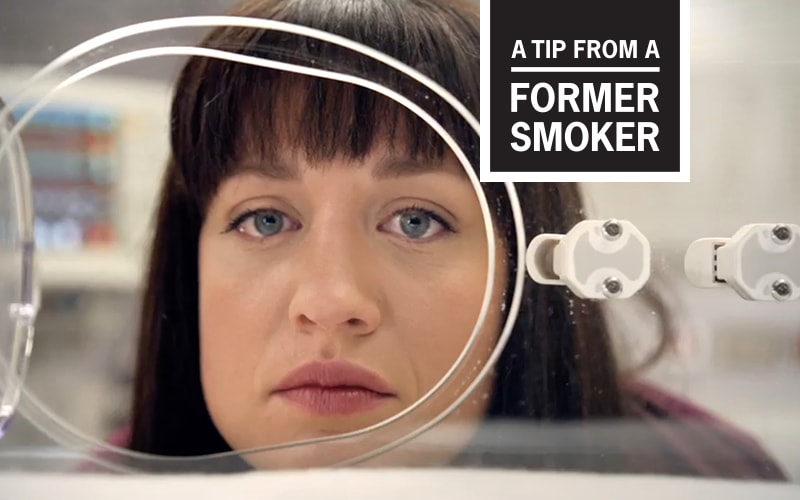
Amanda tried hard to quit smoking while she was pregnant, but she was unable to overcome her addiction to cigarettes. In this TV commercial, Amanda talks about the weeks that her baby girl spent in a hospital incubator, after she was born 2 months early.

Amanda grew up around family members who smoked. She picked up her first cigarette in the 5th grade. In college, when she learned she was pregnant, she tried to quit but couldn’t beat the addiction. In this video, Amanda talks about being rushed to the hospital, where her baby was born 2 months early, at just 3 pounds.

Amanda tried her first cigarette when she was in elementary school. In her 11-year-old mind, smoking seemed OK. After all, some family members smoked, so she tried it herself—and soon became a regular smoker, too. In this emotional video, Amanda talks about the pain that smoking brought to her family.
Anne G.

Beatrice’s son, Nick, wrote her a letter urging her to quit smoking. In this video, Beatrice tells how this act of love gave her the courage to end a lifelong habit.

Anne G. used to smoke when she felt sad or down. Since quitting, Anne says she feels much happier. Quitting inspired Anne to improve her life in many ways, including eating healthier and exercising. She also found new activities, like yoga, working out, and taking walks with her dog. Anne’s tip is, there is life after cigarettes, and it may be better than you ever thought it could be.

Anne G. grew up around a lot of smoking. She started smoking at age 15 and smoked for more than 10 years. Quitting smoking was the hardest and best thing she ever did. In this video, Anne talks about the many ways her life improved after she quit smoking.
Beatrice R.

Beatrice’s son, Nick, wrote her a letter urging her to quit smoking. In this video, Beatrice tells how this act of love gave her the courage to end a lifelong habit.

Beatrice describes some of the techniques she used to recognize and avoid her smoking triggers that helped her to quit smoking. Even though it was hard to do, by making a plan and sticking to it, she beat her addiction to cigarettes and stopped smoking for good. This video is part of CDC’s campaign, Tips From Former Smokers.

You can quit smoking! This inspiring TV ad features Beatrice, James, and Wilma — three people who successfully quit smoking after many years. They share their practical tips on how to quit for good in this commercial from CDC’s Tips From Former Smokers campaign.
James F.

When James was told he had diabetes, he knew he had to stop smoking in order to better manage his health. His healthcare provider told him that he needed to exercise more, and he found that smoking cigarettes made exercising difficult. For James, this became an important reason to quit smoking for good. This video is part of CDC’s campaign, Tips From Former Smokers.

James started smoking menthol cigarettes as a kid to be like his father. He discusses his father’s health problems and their relationship in this video from CDC’s Tips From Former Smokers campaign.

You never know when a decision you make could undermine your choice to quit smoking. James describes a moment he had with his roommate after he had resolved to stop smoking cigarettes. James realized the potential for relapse, and took steps to make sure that it didn’t happen. This video is part of CDC’s campaign, Tips From Former Smokers.
John B.

John B. tried several different strategies to quit smoking, but he continued to struggle with nicotine addiction. He found a doctor who prescribed medicines and counseling that helped him finally quit. In this ad, John shares his tip: keep trying to quit. You only have to quit for good once.

John B. could not go a day without smoking a cigarette. He tried several different strategies to quit smoking, but he continued to struggle with nicotine addiction. In this video, John talks about finding a doctor who helped him quit for good. The doctor prescribed him two medicines and counseling. He wants people who smoke to keep trying to quit.

Some of the people featured in the Tips From Former Smokers® (Tips®) campaign used to think cigarettes were their “best friend.” In this ad, they talk about needing a better friend.
Tiffany R.

When Tiffany was 16, her mother, who smoked, died of lung cancer . Despite her loss, Tiffany started smoking menthol cigarettes a few years later. In this TV commercial from CDC’s Tips From Former Smokers® campaign, Tiffany says she quit smoking at age 34 because she could not bear the thought of missing out on any part of her own daughter’s life.

When Tiffany was 16, her mother, who smoked, died of lung cancer . Despite her loss, Tiffany started smoking menthol cigarettes a few years later. In this TV commercial from CDC’s Tips From Former Smokers® campaign, Tiffany says she quit smoking at age 34 because she could not bear the thought of missing out on any part of her own daughter’s life.

Like many people who smoke, Tiffany had seen an older family member whose health was harmed by smoking, yet she kept buying menthol cigarettes for herself. In this emotional TV ad, Tiffany talks about the “aha” moment that sent her on a different, healthier path for her own life.

Tiffany had an emotional reason to quit smoking: as a teen, she lost her mother to lung cancer. She knew that restroom breaks and car trips would tempt her, so she carefully planned to quit by using nicotine patches, walking, and friends’ support. In this video, Tiffany talks about how she quit smoking for good.

Tiffany didn’t think about all the ways smoking hurt her daily life until she quit. Then life quickly started getting better. Food tasted better. She had more energy and more confidence. And there was one big surprise. In this video she says, “The money I save from not smoking is absolutely great!”

Tiffany talks about losing her mother, who smoked, to lung cancer when Tiffany was just 16 years old. Despite this, Tiffany smoked menthol cigarettes for years before realizing what she might miss in her own daughter’s life. In this video from CDC’s Tips From Former Smokers® campaign, Tiffany’s daughter’s, Jaelin, says she cannot imagine living without her mother. Jaelin goes on to tell her mom how proud she is of her for quitting smoking for good.

In this commercial, Tiffany encourages people who smoke to get help to quit for good, using proven methods like smoking cessation counseling and nicotine replacement therapy, before they need to have their voice box removed like Sharon.
Marlene K.

When Marlene started smoking in high school, she never imagined that smoking could lead to a serious eye disease. In this TV ad, Marlene talks about the treatments that keep her from losing more of her vision.

Marlene smoked and started losing her vision at age 56. In this emotional video, she talks about having macular degeneration and her fear of losing her vision.

Marlene smoked and developed wet macular degeneration, a disease that can lead to vision loss. Marlene knows that she’s lucky to have found a treatment for her eye disease. But getting shots directly into her eyeballs is still upsetting each time she gets them. In this video, Marlene talks about her monthly treatments.
Angie P.

Angie P. started smoking menthol cigarettes at age 15. Over time, she became aware of the tobacco industry’s aggressive advertising of cigarettes, including menthol cigarettes. Angie feels that tobacco companies took advantage of her as someone who is gay and African American. In this Tips From Former Smokers® (Tips®) ad, she tells people it’s not worth it to smoke.

Angie P. hid behind menthol cigarettes while she struggled with her identity. She feared her family and community would not accept her for being gay. In this vignette, Angie talks about that fear and other feelings she tried to mask with cigarettes. She says quitting smoking helped her rediscover and love herself.

Some of the people featured in the Tips From Former Smokers® (Tips®) campaign used to think cigarettes were their “best friend.” In this ad, they talk about needing a better friend.
Ethan B.

Ethan B. grew up seeing ads that convinced him smoking was “cool.” In this ad, Ethan says there’s nothing cool about having a smoking-related stroke.

Ethan started smoking menthol cigarettes because he wanted to be “cool.” He wanted to be like the people he saw in movies and commercials. In this video, he describes how smoking affected his health and shares that he had two smoking-related strokes.

Ethan B. remembers seeing ads that made smoking menthol cigarettes seem “soothing” and “fresh.” After having two smoking-related strokes, Ethan knows there’s nothing soothing about smoking menthol cigarettes.

Smoking-related strokes affected Ethan B.’s memory. On good days, he occasionally loses his train of thought. On bad days, he feels confused and can barely finish a sentence. In this ad, Ethan explains that he makes notes to himself on sticky notes to remember things.

Some of the people featured in the Tips From Former Smokers® (Tips®) campaign used to think cigarettes were their “best friend.” In this ad, they talk about needing a better friend.
Geri M.

Geri loves preparing a Thanksgiving feast for her family. But now that she’s living with smoking-related COPD, even the smallest effort tires her out. Geri has learned to start cooking a month ahead so the meal will be ready on time.

Geri has late-stage COPD from smoking. She hopes to get accepted for a lung transplant before it’s too late. Geri explains that she talks to her adult children every day because she doesn’t know how much time she has left.

Geri was on the move all day, every day, until COPD from smoking robbed her of breath. Because of her illness, Geri had to quit her job as a mail carrier at the age of 54. Now on oxygen 24/7, Geri tries to enjoy every day she can.
Jamason C.

Jamason and his mother Sherri talk about the day Jamason had to go to the hospital after having a severe asthma attack at work, triggered by exposure to secondhand smoke. Recounting the drive to the hospital, Sherri said, “I just held his hand, and told him just squeeze it every now and then so I know he’s breathing.” In this video, Jamason admits that after such a severe attack, he was afraid to leave the hospital because he knew that outside, in the real world, people smoke.

Jamason had a severe asthma attack triggered by secondhand smoke when he was 16. He spent four days in the hospital, gasping for breath. In this video, he talks about asking people not to smoke near him, …because that is my life.
James F.

James started smoking menthol cigarettes as a kid to be like his father. He discusses his father’s health problems and their relationship in this video from CDC’s Tips From Former Smokers campaign.

When James was told he had diabetes, he knew he had to stop smoking in order to better manage his health. His healthcare provider told him that he needed to exercise more, and he found that smoking cigarettes made exercising difficult. For James, this became an important reason to quit smoking for good. This video is part of CDC’s campaign, Tips From Former Smokers.

You never know when a decision you make could undermine your choice to quit smoking. James describes a moment he had with his roommate after he had resolved to stop smoking cigarettes. James realized the potential for relapse, and took steps to make sure that it didn’t happen. This video is part of CDC’s campaign, Tips From Former Smokers.
Julia C.

After years of smoking, Julia, a busy working mom, and Mark, a military veteran, each received frightening news. Their doctors found colorectal cancer, which is a danger for all smokers. In this TV commercial, Julia and Mark share a tip for dealing with colorectal cancer.

Julia tried to avoid smoking around her son, but she didn’t think too much about her own health. Then she was diagnosed with colon cancer and nearly died. In this video, Julia talks about how her battle with cancer terrified her loved ones and opened her eyes about how smoking can harm an entire family.
Marie W.

In this video, Marie talks about discovering she had Buerger’s disease, an illness caused by smoking, and its effects on her life.
Roosevelt S.

Roosevelt never thought that at 45-years-old he would have a heart attack due to his smoking. In this TV commercial, from CDC’s Tips From Former Smokers campaign, he talks about the impact his smoking-related heart attack has had on his life.

In this video, Roosevelt, who had a heart attack and six artery bypasses as a result of smoking, tells how his health problems prevent him from being active with his children.

Even when the effects of smoking stare you in the face, it can be hard to stop smoking. Roosevelt talks about how difficult it was for him to quit smoking cigarettes even after having heart bypass surgery.

Roosevelt talks about how hard it is to quit smoking, and that people often lie to themselves about the effects of smoking cigarettes. He emphasizes that it’s important to try to stop smoking, both for yourself and for your loved ones.

Roosevelt tried to stop smoking cigarettes many times before he succeeded. He talks about smokers who try to fool themselves about their addiction, even though most of them want to quit smoking.
Tiffany R.

When Tiffany was 16, her mother—a cigarette smoker—died of lung cancer. Despite her loss, Tiffany started smoking 3 years later. In this TV commercial from CDC’s Tips From Former Smokers campaign, Tiffany says she quit smoking at 34 because she could not bear the thought of missing out on any part of her own daughter’s life.

Like many smokers, Tiffany had seen an older family member harmed by smoking, yet she kept buying cigarettes for herself. In this emotional TV commercial, Tiffany talks about the “aha” moment that sent her on a different, healthier path for her own life.

Tiffany had an emotional reason to quit smoking: as a teen, she lost her mother to lung cancer. She knew that restroom breaks and car trips would tempt her, so she carefully planned to quit by using nicotine patches, walking, and friends’ support. In this video, Tiffany talks about how she quit smoking for good.

Tiffany didn’t think about all the ways smoking hurt her daily life until she quit. Then life quickly started getting better. Food tasted better. She had more energy and more confidence. And there was one big surprise. In this video she says, “The money I save from not smoking is absolutely great!”

Tiffany talks about losing her mother, a smoker, to lung cancer when she was 16. Despite this, Tiffany smoked for years before realizing what she might miss in her own daughter’s life. In this video, Tiffany’s daughter’s, Jaelin, says she cannot imagine living without her mother. Jaelin goes on to tell her mom how proud she is of her for quitting smoking for good.

In this commercial, Tiffany encourages people who smoke to get help to quit for good, using proven methods like smoking cessation counseling and nicotine replacement therapy, before they need to have their voice box removed like Sharon.
Michael P.

At age 44, Michael was diagnosed with smoking-related chronic obstructive pulmonary disease (COPD). In this video, Michael offers a tip: If your doctor gives you five years to live, like his doctor did, spend it sharing your wisdom and love with your children and grandchildren so they have something to remember you by. Michael died at the age of 64.

Michael, an Alaska Native, was shocked when doctors found serious lung damage from smoking. He was only 44. In this video, Michael talks about living in constant fear. Smoking gave him COPD, a disease that makes it harder and harder to breathe. He says, “If I get the flu, I can die.”

Michael suffered from COPD (chronic obstructive pulmonary disease), which makes it harder for a person to breathe and can cause death. In this video, Michael talks about how he wishes he had never started smoking, and the damage it caused to his lungs. He describes waking up one morning unable to breathe and having to go to the hospital. He also talks about the pain his condition has brought to his family. Michael died at the age of 64.

Michael started smoking at age 9, when his sister gave him his first cigarette. In this video, he talks about getting addicted as a child. By age 44, he had a serious lung disease. He says, “It’s my desire that… you won’t come to this place….”
Nathan M.

Nathan was surrounded by secondhand smoke every day at work. This caused permanent lung damage and triggered severe asthma attacks. Nathan himself never smoked. In this TV commercial from CDC’s Tips From Former Smokers campaign, Nathan tells viewers that because of his health problems, he could no longer work at the same job or participate in some of his favorite activities. Nathan died at age 54 of illnesses caused by secondhand smoke exposure.

Nathan was Lakota, a member of the Oglala Sioux tribe, and never smoked. However, he worked in a facility where smoking was allowed, and experienced health problems as a result. In this video, Nathan describes his health problems—including asthma—triggered by exposure to secondhand smoke. He had to give up many activities he loved, including tribal dancing, because of damage to his lungs. That damage led to his early death at age 54.

Nathan worked in a smoky casino for 11 years. It robbed him of his health and a favorite pastime—tribal dancing. Although Nathan never smoked, secondhand smoke damaged his lungs. In this video, shot before his death, Nathan talks about how he copes. He died at 54 of illnesses caused by secondhand smoke exposure.
Tammy W.

Tammy W. hid her smoking from everyone. In this ad, Tammy’s tip is, when you are having open-heart surgery, you cannot hide the damage caused by smoking. Everyone can see it.

Tammy W. thought menthol cigarettes were “healthier.” In this ad, Tammy shares that menthol cigarettes are just as good at causing heart disease as any cigarette.

Tammy W. smoked menthol cigarettes. She grew up with a large extended family, many of whom smoked. She also remembers seeing ads on billboards and in magazines that promoted cigarettes. At age 44, Tammy learned she had severe heart disease and needed open-heart surgery. In this video, she encourages people who smoke to quit today.

Tammy W. ate a healthy diet and ran every day. She smoked menthol cigarettes because she thought they were less harmful than other cigarettes. In this ad, Tammy talks about her heart disease and open-heart surgery. She shares how the surgery helped her realize there is no such thing as a “healthy” cigarette.

Tammy W. ate healthy and ran marathons. She also smoked for 23 years. At age 44, Tammy learned she had severe heart disease. In this video, Tammy talks about needing to have open-heart surgery. She shares how it felt to see her mother worried at the hospital.

Tammy W. smoked because she thought it helped relieve her stress. In this ad, Tammy shares how smoking cigarettes led to a very stressful procedure – open-heart surgery.

Some of the people featured in the Tips From Former Smokers® (Tips®) campaign used to think cigarettes were their “best friend.” In this ad, they talk about needing a better friend.
Dana S.
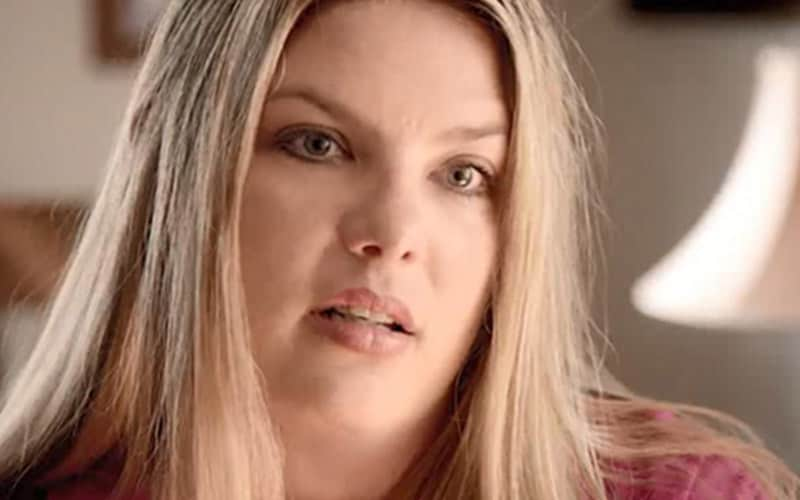
Terrie, a Tips From Former Smokers® campaign participant, bravely showed the world how years of smoking cigarettes damaged her health. In this video, Terrie’s daughter Dana shares how difficult the journey was for Terrie’s family.
Debra B.

Andy A. and Debra B. enjoyed a wonderful life together — going out to eat, singing karaoke, and having family over to their house. Their lives changed after Andy learned he had throat cancer from smoking. Debra had to close her business to focus on taking care of him. In this video, Andy and Debra talk about how smoking-related throat cancer changed their lives and relationship.
Denise H.

In 45 years of marriage, Denise and Brian H. spent a lot of time together. Much of that time was spent in doctors’ offices and hospitals. Brian had heart disease, lung cancer, and COPD from smoking cigarettes for most of his life. Denise put her career on hold to be his full-time caregiver. Brian died at age 68 after suffering from smoking-related health problems for more than 30 years.

Brian had heart disease, lung cancer, and COPD from smoking cigarettes. His wife, Denise, was there with him for every doctor’s appointment, scan, surgery, and recovery. Although Brian was the one who was sick, his illnesses affected both of their lives. Brian died at age 68 after suffering from smoking-related health problems for more than 30 years.

Denise took care of her husband, Brian H., for more than 30 years. Brian had COPD, lung cancer, and heart disease from smoking. In this video, Denise says the thought of losing her best friend scares her more than anything. Brian died at age 68.
Leonard N.
Stephen B.

Elizabeth B. had numbness in her feet and cramping in her calf that kept getting worse. She learned from her doctor that she had smoking-related peripheral artery disease (PAD). Elizabeth also developed kidney cancer. In this video, Elizabeth and her husband Stephen share how Elizabeth’s health impacts their lives.

Elizabeth B. was 52 and a newlywed when she learned she had smoking-related peripheral artery disease (PAD). She had major surgery to restore blood flow to her legs. Elizabeth offered to end her marriage to her husband, Stephen. She felt he did not sign up for taking care of her full-time. In this ad, Elizabeth shares how Stephen supports her every day.
Andy A.

Andy A. was diagnosed with throat cancer from smoking. This began his complex treatment and recovery journey, including three surgeries to remove the cancer, using muscle and skin from his legs to rebuild his throat. Andy now speaks with the help of an electrolarynx. He also needs full-time care from his wife, Debra B. In this ad, he shares that cigarettes took so much from him, including his independence. Andy’s tip is don’t give anymore to cigarettes – otherwise they will keep taking until there is nothing left of you.

Andy A. and Debra B. enjoyed a wonderful life together — going out to eat, singing karaoke, and having family over to their house. Their lives changed after Andy learned he had throat cancer from smoking. Debra had to close her business to focus on taking care of him. In this video, Andy and Debra talk about how smoking-related throat cancer changed their lives and relationship.
Beatrice R.

Beatrice describes some of the techniques she used to recognize and avoid her smoking triggers that helped her to quit smoking. Even though it was hard to do, by making a plan and sticking to it, she beat her addiction to menthol cigarettes and stopped smoking for good. This video is part of CDC’s campaign, Tips From Former Smokers.

You can quit smoking! This inspiring TV ad features Beatrice, James, and Wilma — three people who successfully quit smoking after many years. They share their practical tips on how to quit for good in this commercial from CDC’s Tips From Former Smokers campaign.
Felicita R.

Felicita R. smoked for more than 30 years. She was diagnosed with severe gum disease and had to have all of her teeth removed. She was fitted for dentures and now typically eats only soft foods. Felicita’s tip is you might think quitting smoking feels like pulling teeth but it’s not even close.

Felicita R. started smoking at age 12 and smoked for more than 30 years. When she was young, she thought smoking made her look cool. She was diagnosed with severe gum disease at age 50 and had to have all of her teeth removed. In this video, Felicita talks about her mission to help friends and family members quit smoking.

Felicita started smoking at age 12. By the time she was 40, Felicita had developed gum disease and had loose teeth—but like many people, she did not have a lot of pain as the gum disease got worse. In this video, Felicita talks about getting life-changing news from her dentist.

Felicita started smoking at age 12 and Brett at age 16. Neither of them knew that smoking could harm their gums and teeth. In this bilingual commercial, Brett and Felicita advise people not to smoke if they want to keep their teeth and their smiles.
Jessica S.

Exposure to secondhand smoke can trigger a life-threatening asthma attack. This commercial, Jessica, a mother with a young son who suffers from asthma attacks due to secondhand smoke exposure. In her tip, she urges people not to be shy to tell people not to smoke around kids.
Mariano Z.

Mariano smoked for 30 years. One day he woke up and felt dizzy and nauseous. “I didn’t know what was happening to me and started sweating.” Mariano needed open heart surgery to save his life. In this video from the CDC’s Tips from Former Smokers campaign he says: “I was fortunate to have a second chance at life.” Mariano hopes that others don’t risk their health and stop smoking today.
Noel S.

Noel S. smoked two packs of cigarettes a day for more than 20 years. In this ad, Noel shares he did not know it was possible to have a heart attack at age 36, until it happened to him.

Noel S. saw many ads for menthol cigarettes when he was growing up in Brooklyn. He smoked two packs a day for more than 20 years. In this video, Noel talks about the smoking-related heart attack he had at age 36. He realizes now that menthol cigarettes are just as dangerous as other cigarettes.

Noel S. started smoking menthol cigarettes at age 13. He liked the flavor of menthol and did not think they were as harsh as other cigarettes. In this video, Noel talks about how addictive menthol cigarettes (menthols) are. Having a heart attack at age 36 made him realize menthol cigarettes are just as dangerous as other cigarettes.

Some of the people featured in the Tips From Former Smokers® (Tips®) campaign used to think cigarettes were their “best friend.” In this ad, they talk about needing a better friend.
Rose H.

Rose developed lung cancer from smoking cigarettes. In this TV ad, she talks about her lung surgery and difficult recovery. Every day for a month after surgery, Rose prayed that doctors would take out a painful chest tube. Rose’s tip is “Be careful what you wish for.” There was more pain to come when the chest tube finally came out. Rose died in 2015. She was 60.

Rose started smoking at 13, and before long, she was spending her lunch money on cigarettes instead of food. Her addiction led to lung cancer—and the fight of her life. In this video, Rose talks about cancer. She never believed it would happen to her. Rose has had surgery twice to fight the disease. At age 60, she died from lung cancer caused by smoking.

Rose had lung cancer from smoking cigarettes, and she needed very difficult medical treatments. This video explains three keys that helped her get through treatments: family support, faith, and quitting smoking. At age 60, she died from lung cancer caused by smoking.
Angie P.

Angie P. started smoking menthol cigarettes at age 15. Over time, she became aware of the tobacco industry’s aggressive advertising of cigarettes, including menthol cigarettes. Angie feels that tobacco companies took advantage of her as someone who is gay and African American. In this Tips From Former Smokers® (Tips®) ad, she tells people it’s not worth it to smoke.

Angie P. hid behind menthol cigarettes while she struggled with her identity. She feared her family and community would not accept her for being gay. In this vignette, Angie talks about that fear and other feelings she tried to mask with cigarettes. She says quitting smoking helped her rediscover and love herself.

Some of the people featured in the Tips From Former Smokers® (Tips®) campaign used to think cigarettes were their “best friend.” In this ad, they talk about needing a better friend.
Brian I.

Smoking is especially dangerous for people who are living with HIV, the virus that can cause AIDS. Brian learned that lesson the hard way, when he had a stroke—a brain attack—at age 43. In this video, Brian talks about surviving HIV-related medical problems—then nearly losing his life because of smoking.

Brian never imagined he could have a stroke at age 43. He was in good health. But smoking, combined with having HIV, caused a stroke when he was doing what he loved most—working at the potter’s wheel. In this video, Brian talks about the day of his stroke and his efforts to recover.
Ellie N.

Ellie was in her mid-30’s when she had her first asthma attack — triggered by exposure to secondhand smoke. She loved her job as a bartender, but began to dread going to work. In this video, Ellie says, “I could feel my lungs getting tighter. I knew I couldn’t be around the smoke or I was going to die, or something bad was going to happen to me.” Eventually Ellie quit her job for the sake of her health, but feels everyone deserves to have a safe and healthy work environment.

Ellie never smoked, but she developed asthma from secondhand smoke exposure. She worked in bars that served the LGBQ communities and noticed lots of smokers. Ellie loved the work but quit to save her health. In this video, she talks about smoking and how people define their personal identity.
Rose H.

Rose developed lung cancer from smoking cigarettes. In this TV ad, she talks about her lung surgery and difficult recovery. Every day for a month after surgery, Rose prayed that doctors would take out a painful chest tube. Rose’s tip is “Be careful what you wish for.” There was more pain to come when the chest tube finally came out. Rose died in January 2015. She was 60.

Rose started smoking at 13, and before long, she was spending her lunch money on cigarettes instead of food. Her addiction led to lung cancer—and the fight of her life. In this video, Rose talks about cancer. She never believed it would happen to her. Rose has had surgery twice to fight the disease. At age 60, she died from lung cancer caused by smoking.

Rose had lung cancer from smoking cigarettes, and she needed very difficult medical treatments. This video explains three keys that helped her get through treatments: family support, faith, and quitting smoking.
Rebecca M.

Rebecca started smoking menthol cigarettes at age 16. At age 33, she was diagnosed with depression. Rebecca used cigarettes to help her cope. When she tried to quit and couldn’t, she felt even more depressed and started smoking again. “That was just a vicious, vicious cycle,” she said. In this commercial from CDC’s Tips From Former Smokers campaign, Rebecca talks about how quitting made her feel better – mentally and physically.

What makes a person who smokes quit? In this video, Rebecca reveals that the birth of her grandson motivated her to quit for good. She made other healthy changes too. She sought help for her depression and began to exercise. As a result, she is healthier and happier.

Rebecca struggled with depression. In this video, Rebecca explains how she used to smoke to cope with her depression, but ended up feeling more depressed. She realized that cigarettes weren’t helping her and knew she had to quit. In her words, “It’s about taking control of your life.” She quit and found that there is life beyond smoking.
Beatrice R.

Beatrice’s son, Nick, wrote her a letter urging her to quit smoking. In this video from CDC’s Tips From Former Smokers® campaign, she tells how this act of love gave her the courage to end a lifelong habit.

Beatrice describes some of the techniques she used to recognize and avoid her smoking triggers that helped her to quit smoking. Even though it was hard to do, by making a plan and sticking to it, she beat her addiction to cigarettes and stopped smoking for good. This video is part of CDC’s campaign, Tips From Former Smokers®.

You can quit smoking! This inspiring TV ad features Beatrice, James and Wilma — three people who successfully quit smoking after many years. They share their practical tips on how to quit for good in this commercial from CDC’s Tips From Former Smokers® campaign.
Brian H.

Brian started smoking before he was a teenager. He had a heart attack at 35 and had serious health problems for the rest of his life as a result of smoking. In this commercial, Brian says you probably know someone who has had a heart attack, chronic obstructive pulmonary disease (COPD), heart bypass surgery, a heart transplant, lung cancer, or part of their lung removed from smoking. He then shares that he has suffered all six. Brian died at age 68 after suffering from smoking-related health problems for more than 30 years.

Brian’s smoking ruined his health and devastated his family. He finally quit smoking for good and was able to get a heart transplant. In this video from CDC’s Tips From Former Smokers® campaign, Brian encourages people who smoke to quit. Brian died at age 68 after suffering from smoking-related health problems for more than 30 years.

Brian started smoking cigarettes at age 8. After high school, he joined the U.S. Air Force because he wanted a military career. At 35, still smoking and stationed in England, Brian had a heart attack and spent months in hospital rooms. In this ad from CDC’s Tips From Former Smokers® campaign, Brian reveals how he couldn’t serve his country because of his heart disease. Brian died at age 68 after suffering from smoking-related health problems for more than 30 years.

By the time Brian was 11 years old, he was already smoking close to a pack of cigarettes a day. In this video from CDC’s Tips From Former Smokers® campaign, he talks about how he smoked during his youth, marriage, and throughout his career in the U.S. Air Force. He had a heart attack at age 35 and spent months in hospital rooms. Brian died at age 68 after suffering from smoking-related health problems for more than 30 years.
Ethan B.

Ethan B. grew up seeing ads that convinced him smoking was “cool.” In this ad, Ethan says there’s nothing cool about having a smoking-related stroke.

Ethan started smoking menthol cigarettes because he wanted to be “cool.” He wanted to be like the people he saw in movies and commercials. In this video, he describes how smoking affected his health and shares that he had two smoking-related strokes.

Ethan B. remembers seeing ads that made smoking menthol cigarettes seem “soothing” and “fresh.” After having two smoking-related strokes, Ethan knows there’s nothing soothing about smoking menthol cigarettes.

Smoking-related strokes affected Ethan B.’s memory. On good days, he occasionally loses his train of thought. On bad days, he feels confused and can barely finish a sentence. In this ad, Ethan explains that he makes notes to himself on sticky notes to remember things.

Some of the people featured in the Tips From Former Smokers® (Tips®) campaign used to think cigarettes were their “best friend.” In this ad, they talk about needing a better friend.
James F.

James started smoking as a kid to be like his father. He discusses his father’s health problems and their relationship in this video from CDC’s Tips From Former Smokers campaign.

When James was told he had diabetes, he knew he had to stop smoking in order to better manage his health. His healthcare provider told him that he needed to exercise more, and he found that smoking cigarettes made exercising difficult. For James, this became an important reason to quit smoking for good. This video is part of CDC’s campaign, Tips From Former Smokers.

You never know when a decision you make could undermine your choice to quit smoking. James describes a moment he had with his roommate after he had resolved to stop smoking cigarettes. James realized the potential for relapse, and took steps to make sure that it didn’t happen. This video is part of CDC’s campaign, Tips From Former Smokers.
Mark A.

After years of smoking, Julia, a busy working mom, and Mark, a military veteran, each received frightening news. Their doctors found colorectal cancer, which is a danger for all smokers. In this TV commercial, Julia and Mark share a tip for dealing with colorectal cancer.

Mark picked up his first cigarette as a teenager to fit in with friends. Life moved quickly and he continued to smoke until age 42, when doctors told him he had rectal cancer, one of many cancers that are linked to smoking. In this video, Mark talks about the harsh treatments he needed to save his life.

Mark started smoking before joining the Air Force and continued through his service in the Persian Gulf. At age 42, Mark was diagnosed with rectal cancer, one of many cancers that are linked to smoking. He now faced the fight of his life. In this video, Mark says his diagnosis brought everything to a grinding halt.
Michael P.

Michael, who is in his 50s, has Chronic Obstructive Pulmonary Disease (COPD) —a condition caused by smoking—that makes it harder and harder to breathe. In this TV commercial from CDC’s Tips From Former Smokers campaign, Michael offers a tip that if your doctor gives you 5 years to live, like his doctor did, spend it sharing your wisdom and love with your children and grandchildren so they have something to remember you by.

Michael, an Alaska Native, was shocked when doctors found serious lung damage from smoking. He was only 44. In this video, Michael talks about living in constant fear. Smoking gave him COPD, a disease that makes it harder and harder to breathe. He says, “If I get the flu, I can die.”

Michael suffers from COPD (chronic obstructive pulmonary disease), which makes it harder for a person to breathe and can cause death. In this video, Michael talks about how he wishes he had never started smoking, and the damage it caused to his lungs. He describes waking up one morning unable to breathe and having to go to the hospital. He also talks about the pain his condition has brought to his family.

Michael started smoking at age 9, when his sister gave him his first cigarette. In this video, he talks about getting addicted as a child. By age 44, he had a serious lung disease. He says, “It’s my desire that… you won’t come to this place….”
Nathan M.

Nathan was surrounded by secondhand smoke every day at work. This caused permanent lung damage and triggered severe asthma attacks. Nathan himself never smoked. In this TV commercial from CDC’s Tips From Former Smokers campaign, Nathan tells viewers that because of his health problems, he could no longer work at the same job or participate in some of his favorite activities. Nathan died at age 54 of illnesses caused by secondhand smoke exposure.

Nathan was Lakota, a member of the Oglala Sioux tribe, and never smoked. However, he worked in a facility where smoking was allowed, and experienced health problems as a result. In this video, Nathan describes his health problems—including asthma—triggered by exposure to secondhand smoke. He had to give up many activities he loved, including tribal dancing, because of damage to his lungs. That damage led to his early death at age 54.

Nathan worked in a smoky casino for 11 years. It robbed him of his health and a favorite pastime—tribal dancing. Although Nathan never smoked, secondhand smoke damaged his lungs. In this video, shot before his death, Nathan talks about how he copes. He died at 54 of illnesses caused by secondhand smoke exposure.
Roosevelt S.

Roosevelt never thought that at 45-years-old he would have a heart attack due to his smoking. In this TV commercial, from CDC’s Tips From Former Smokers campaign, he talks about the impact his smoking-related heart attack has had on his life.

In this video, Roosevelt, who had a heart attack and six artery bypasses as a result of smoking, tells how his health problems prevent him from being active with his children.

Even when the effects of smoking stare you in the face, it can be hard to stop smoking. Roosevelt talks about how difficult it was for him to quit smoking cigarettes even after having heart bypass surgery.

Roosevelt talks about how hard it is to quit smoking, and that people often lie to themselves about the effects of smoking cigarettes. He emphasizes that it’s important to try to stop smoking, both for yourself and for your loved ones.

Roosevelt tried to stop smoking cigarettes many times before he succeeded. He talks about smokers who try to fool themselves about their addiction, even though most of them want to quit smoking.
Tammy W.

Tammy W. ate a healthy diet and ran every day. She smoked menthol cigarettes because she thought they were less harmful than other cigarettes. In this ad, Tammy talks about her heart disease and open-heart surgery. She shares how the surgery helped her realize there is no such thing as a “healthy” cigarette.

Tammy W. ate healthy and ran marathons. She also smoked for 23 years. At age 44, Tammy learned she had severe heart disease. In this video, Tammy talks about needing to have open-heart surgery. She shares how it felt to see her mother worried at the hospital.

Tammy W. smoked because she thought it helped relieve her stress. In this ad, Tammy shares how smoking cigarettes led to a very stressful procedure – open-heart surgery.

Some of the people featured in the Tips From Former Smokers® (Tips®) campaign used to think cigarettes were their “best friend.” In this ad, they talk about needing a better friend.
Amanda B.

Amanda tried hard to quit smoking while she was pregnant, but she was unable to overcome her addiction to cigarettes. In this TV commercial, Amanda talks about the weeks that her baby girl spent in a hospital incubator, after she was born 2 months early.

Amanda grew up around family members who smoked. She picked up her first cigarette in the 5th grade. In college, when she learned she was pregnant, she tried to quit but couldn’t beat the addiction. In this video, Amanda talks about being rushed to the hospital, where her baby was born 2 months early, at just 3 pounds.

Amanda tried her first cigarette when she was in elementary school. In her 11-year-old mind, smoking seemed OK. After all, some family members smoked, so she tried it herself—and soon became a regular smoker, too. In this emotional video, Amanda talks about the pain that smoking brought to her family.

Andy A. and Debra B. enjoyed a wonderful life together — going out to eat, singing karaoke, and having family over to their house. Their lives changed after Andy learned he had throat cancer from smoking. Debra had to close her business to focus on taking care of him. In this video, Andy and Debra talk about how smoking-related throat cancer changed their lives and relationship.
